
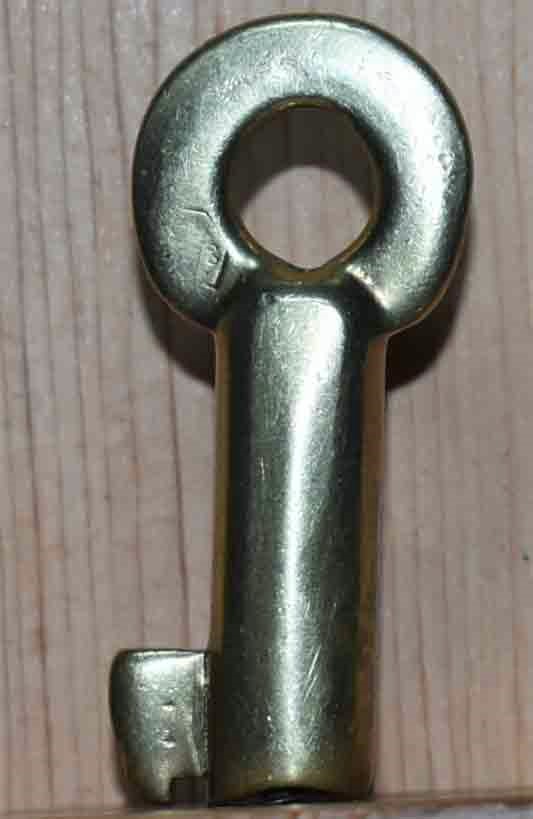
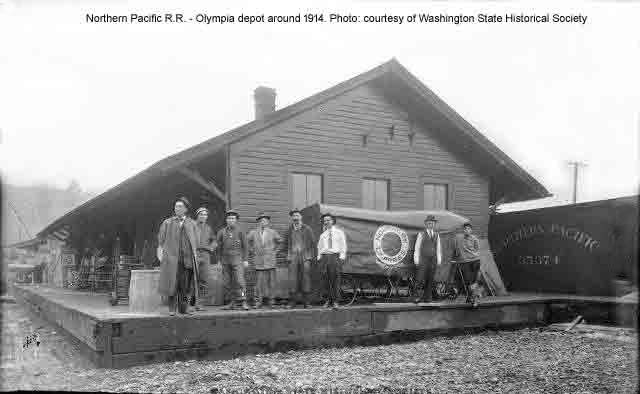
Olympia & Chehalis Valley Co.
Item: 3-O Price: $125.00
Remarks: operated 1881-1890
Forged by the Adams & Westlake Co.
Early A&W hex stamp = 1st series.
Front indentation not bad, seen worse!
Brilliant gold patina.
Short lived Washington State coal line. Key listed in the
"American Railway's Switch Key Directory."
125 year+ centenarian!
History
The Olympia and Chehalis Valley Railroad connected Olympia with Tenino and another railroad connected the Northern Pacific at Stuck directly with Seattle. Eventually, in 1914, this 15 mile line was acquired by the Northern Pacific.
This little-known line extended 15.5 miles from Olympia to Tenino. It was constructed as the narrow-gauge Olympia & Tenino Railroad Co., though the O&T was not incorporated in the State of Washington, nor was it listed by the ICC. Construction was complete and the first train operated in August 1878. In August 1, 1881, the railroad was purchased by the Olympia Railroad & Mining Co. and was renamed the Olympia & Chehalis Valley Railroad Co.
Click on image to view larger picture
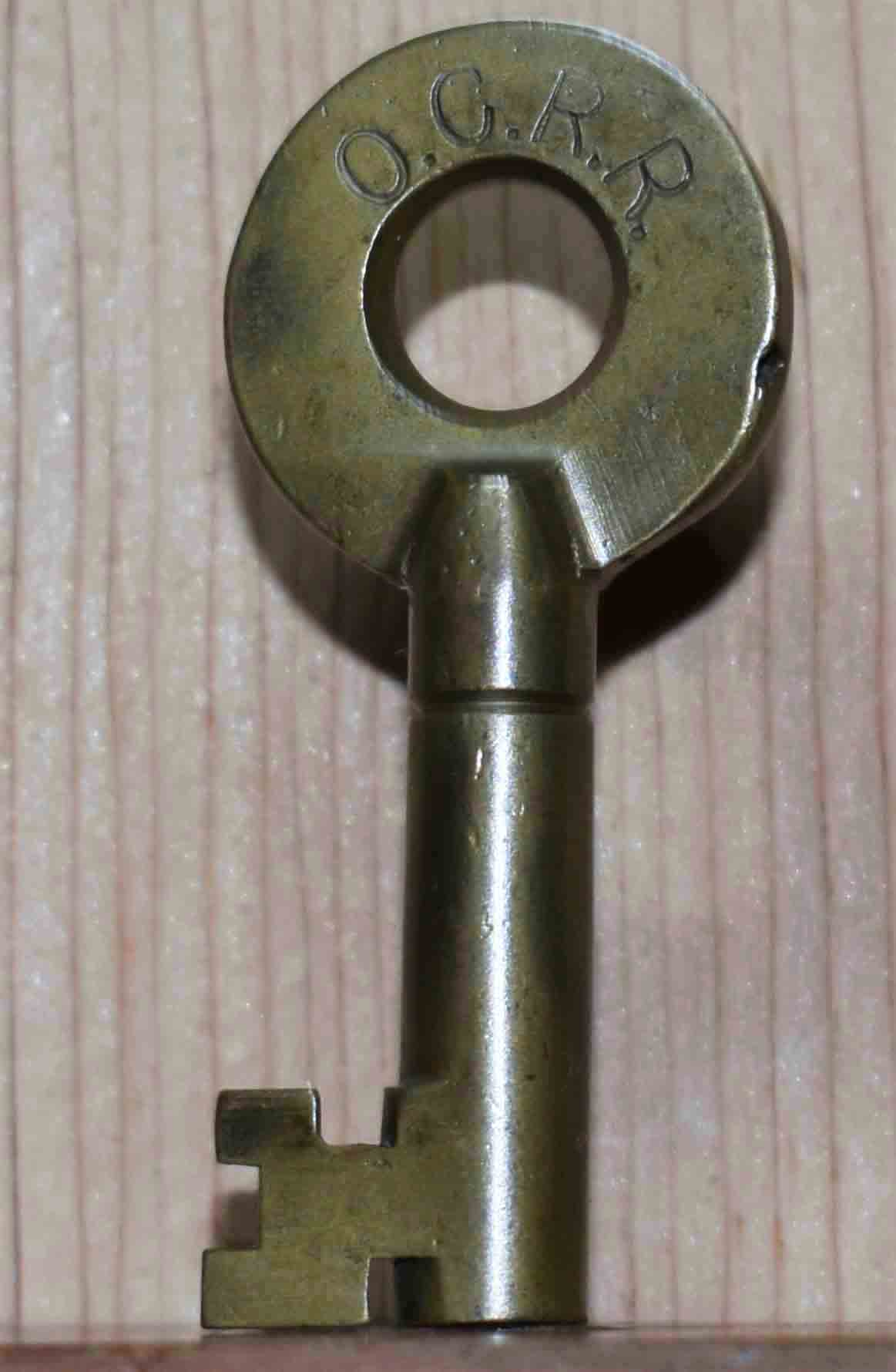


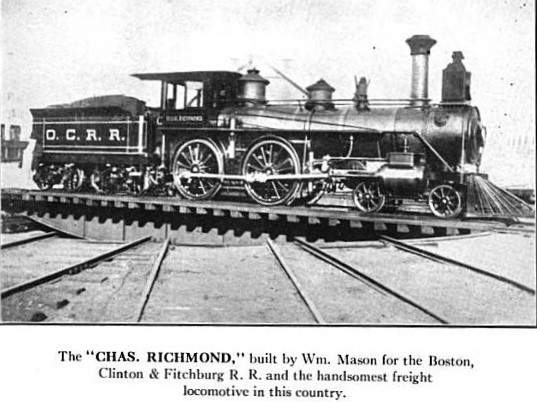
Old Colony Railroad
SOLD Price: $125.00
Remarks: operated 1845-1893
Forged by the Wilson Bohannan Co.
Superb stamp marks and gold patina.
Handsome accent ring barrel.
125 year+ centenarian!
History
The Old Colony Railroad (OC) was a major railroad system, mainly covering southeastern Massachusetts and parts of Rhode Island. It operated from 1845 to 1893. From 1845 to 1893, the OC network grew extensively largely through a series of mergers and acquisitions with other established railroads, until it was itself acquired by the New York-New Haven & Hartford Railroad under lease agreement on March 1, 1893 for its entire 617-mile network. After this date, all trains, lines, and stations became known as the "Old Colony Division" of the huge "New Haven" system. During this period, the New York-New Haven & Hartford Railroad enjoyed a virtual monopoly on all passenger and freight rail service in southern New England.
Click on image to view larger picture

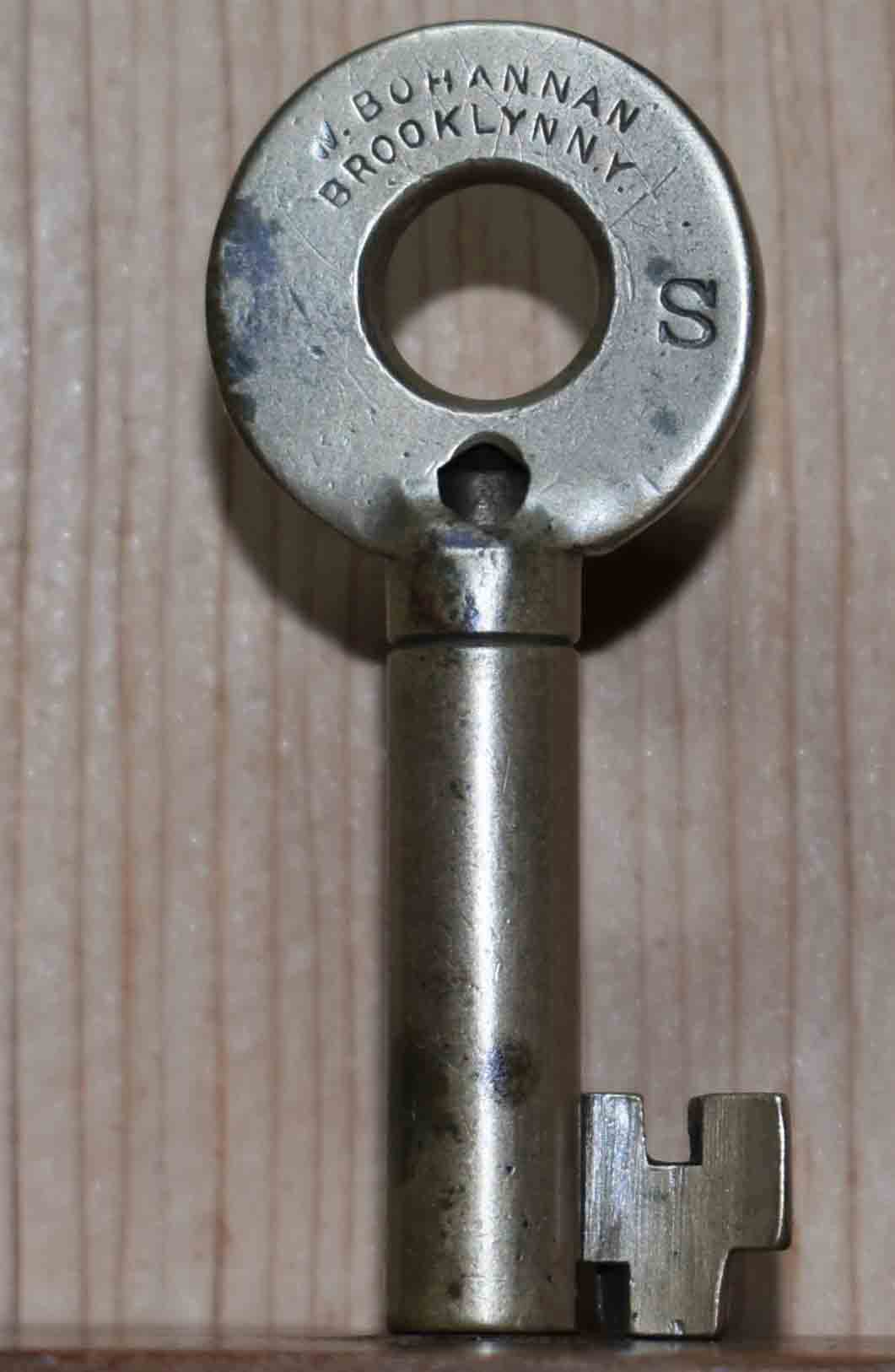

Old Colony Railroad
Item: 6-O Price: $125.00
Remarks: operated 1845-1893
Forged by the Wilson Bohannan Co.
Superb stamp marks and gold patina.
Handsome accent ring barrel.
125 year+ centenarian!
History - continued from above
Other parts of the former OC system continue to be used for freight service by CSX Transportation and other short line railroads, including the Massachusetts Coastal Railroad which operates on Cape Cod and in southeastern Massachusetts.
Click on image to view larger picture

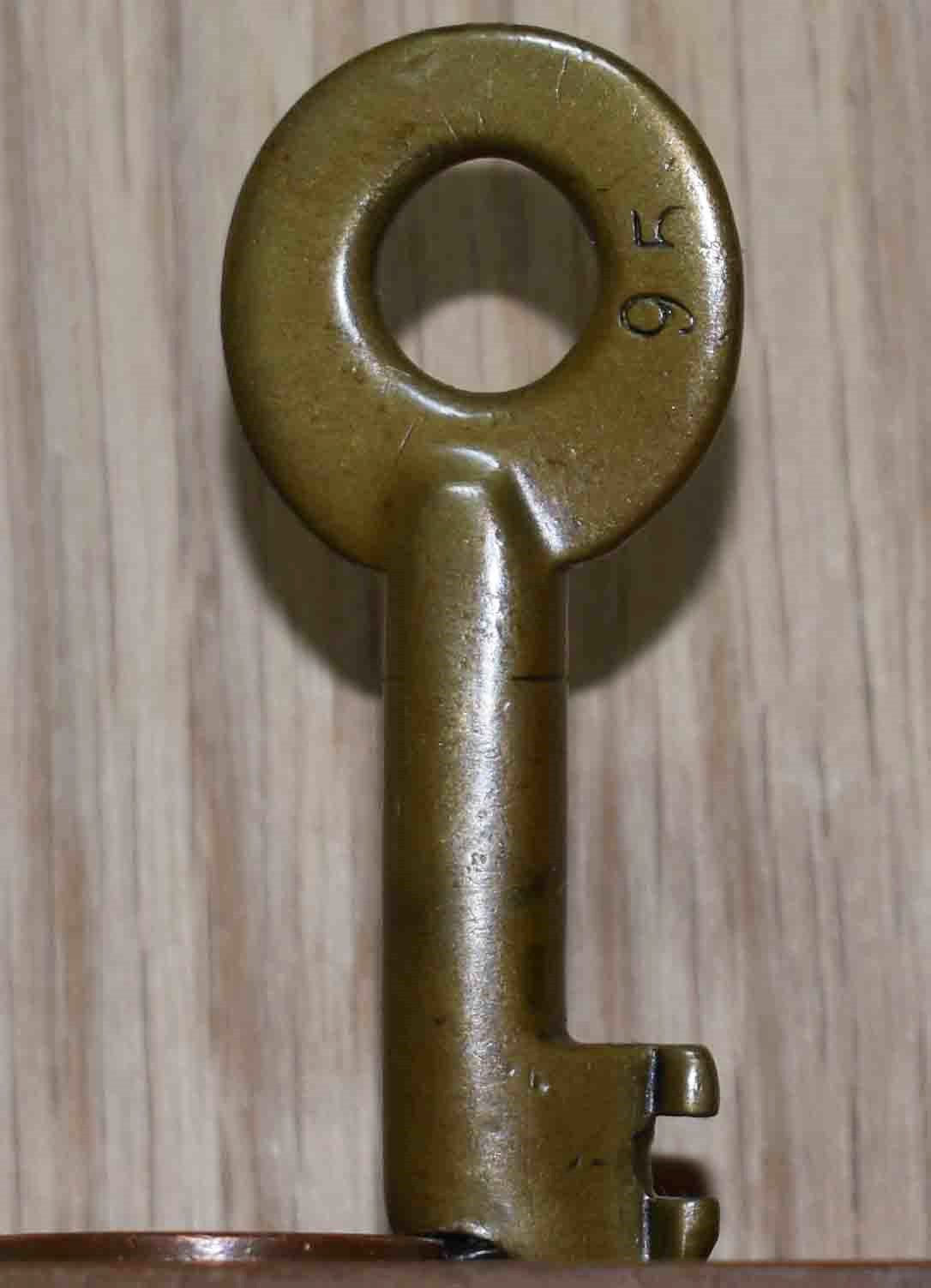
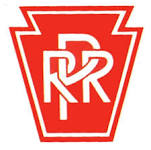
Oil Creek Railroad
SOLD Price: $95.00
Remarks: ca. 1800s
Pocket worn stamp marks with great
gold patina. Became part of the Pennsy.
150 year+ centenarian!
History
The Oil Creek Railroad Company (OCRR) was a railroad in western Pennsylvania. The company was chartered on August 17, 1860, by railroad investor Thomas Struthers of Warren, Pennsylvania, and several other Warren businessmen. The charter authorized the construction of a railroad from any point on the Philadelphia and Erie Railroad to Titusville, Pennsylvania, along the Oil Creek to Oil City and Franklin.
From 1864 to 1865, the OCRR's primary function was to transport oil from the oil-producing regions of Pennsylvania to the Atlantic and Great Western Railroad in Corry, Pennsylvania. The OCRR existed independently until 1868 when it was purchased by the Warren and Franklin Railway and combined with other short line oil transporting railroads in western Pennsylvania to form the Oil Creek and Allegheny River Railway.
Click on image to view larger picture



Oil Creek Railroad
Item: 10-O Price: $85.00
Remarks: ca. 1800s
Pocket worn stamp marks with great
gold patina. Became part of the Pennsy.
150 year+ centenarian!
History - continued from above
The company was sold at foreclosure on December 29, 1875, and was acquired on February 8, 1876 by the Pittsburgh, Titusville and Buffalo Railway, which eventually became part of the Western New York and Pennsylvania Railway and the Pennsylvania Railroad.
Click on image to view larger picture



Omaha Railway
aka "The Chicago-St. Paul-Minneapolis & Omaha Railway"
Item: 12-O Price: $75.00
Remarks: ca. mid-1900s
Forged by the Adlake Co.
Nice pocket worn lettering and gold patina.
Given the moniker, "The Granger Line."
History
The Chicago-St. Paul-Minneapolis & Omaha Railway or Omaha Road (reporting mark CMO) was a railroad in the U.S. states of Nebraska, Iowa, Minnesota, Wisconsin and South Dakota. It was incorporated in 1880 as a consolidation of the Chicago-St. Paul & Minneapolis Railway and the North Wisconsin Railway. The Chicago & North Western Railway (C&NW) gained control in 1882. The C&NW leased the Omaha Road in 1957 and merged the company into itself in 1972.
Click on image to view larger picture

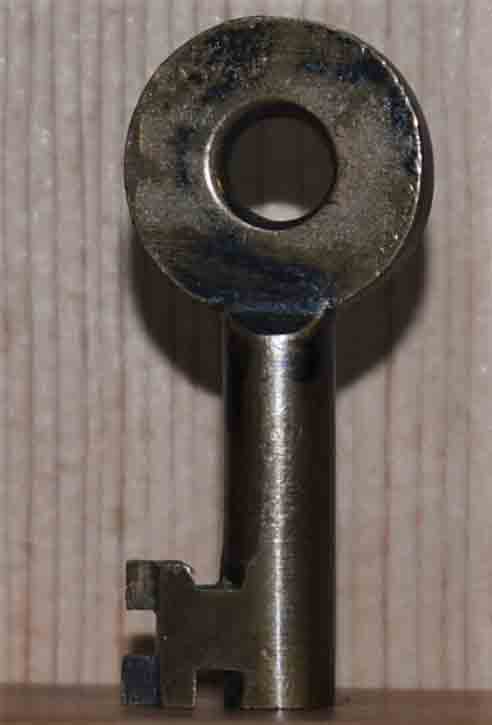

Oneida Railway
Item: 14-O NY trolley line Price: $75.00
Remarks: operated 1907-1930
Owned by the - NYCS, also has a
Toledo & Ohio Central style bit.
100 year+ centenarian!
History
The Oneida Railway, which was an interurban rail, was established in 1907 when the New York Central Railroad electrified 49 miles of the West Shore Railroad between Syracuse, New York and Utica, New York. The interurban railroad used nontraditional third-rail pickup for power instead of the typical overhead catenary. In 1909 the system merged with the New York State Railways system which remained in business until 1930.
Click on image to view larger picture
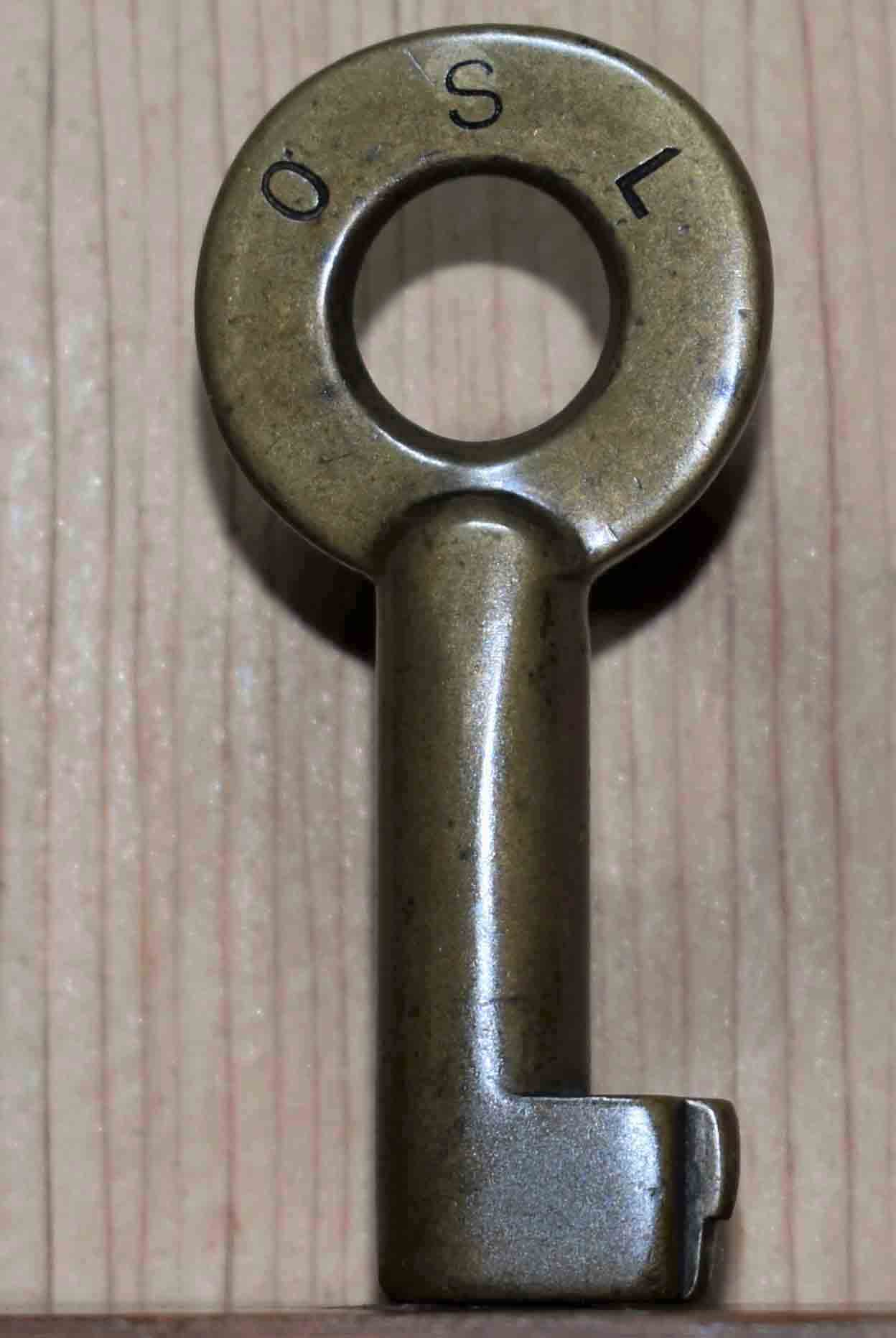
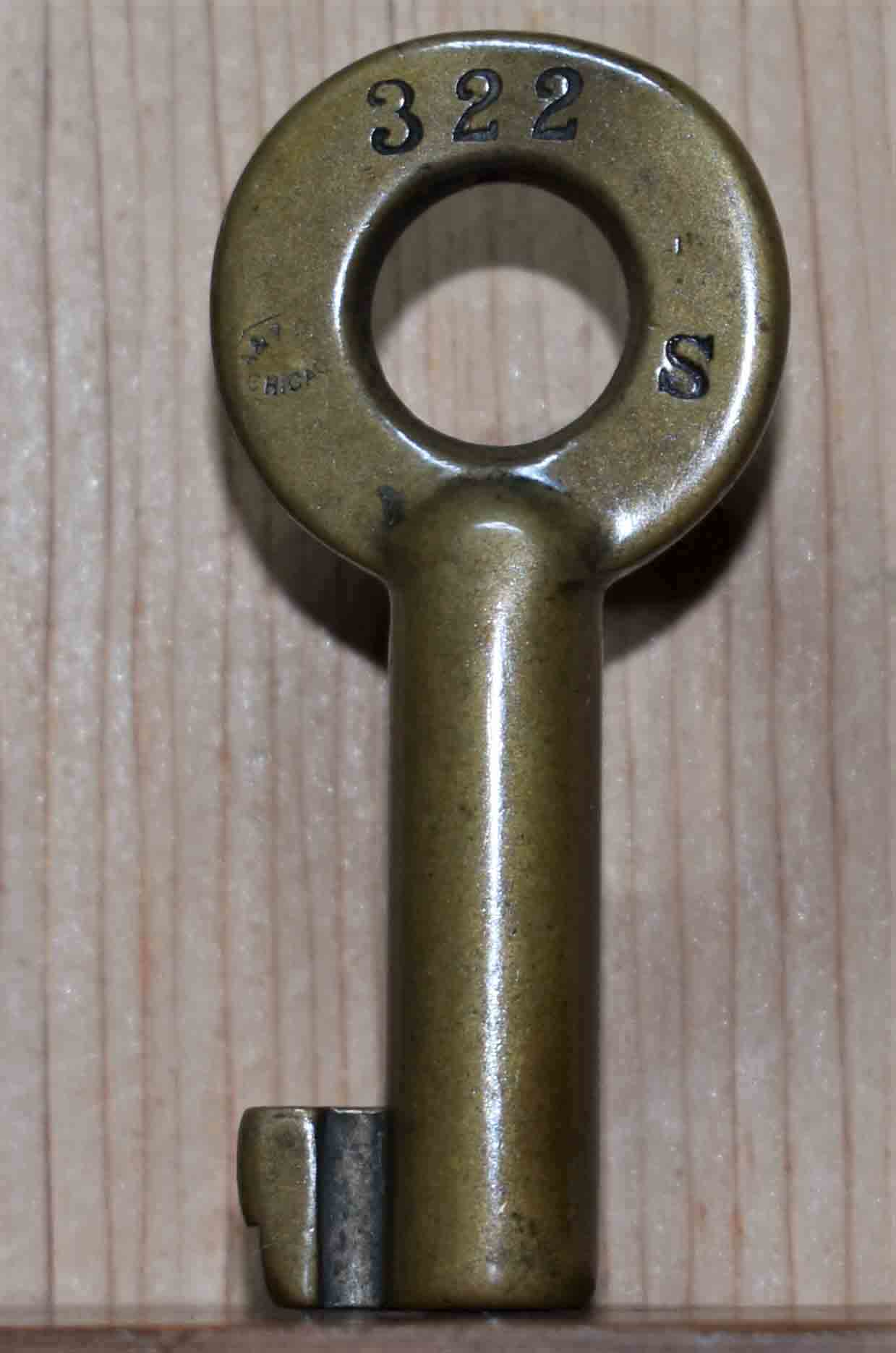

Oregon Short Line Railroad
Item: 19-O early 1881-82 issue Price: $165.00
Remarks: ca. late 1800s
Forged by the Adams & Westlake Co.
Early A&W hex stamp = 1st series.
Superb stamp marks and caramel patina.
Low three digit serial #
Key bit style similar to Clinchfield Key
125 year+ centenarian!
History
The Oregon Short Line Railroad (OSL) was a railroad in the U.S. states of Wyoming, Idaho, Utah, Montana and Oregon. The line was organized as the Oregon Short Line Railway in 1881 as a subsidiary of Union Pacific Railway. Union Pacific intended the line to be the shortest route ("the short line") from Wyoming to Oregon. In 1889 the line merged with the Utah & Northern Railway and a handful of smaller railroads to become the Oregon Short Line & Utah Northern Railway. Following the bankruptcy of Union Pacific, the line was taken into receivership and reorganized as the Oregon Short Line Railroad.
Click on image to view larger picture



Oregon Short Line Railroad
SOLD CS-2 Price: $95.00
Remarks: ca. early 1900s
Forged by the Adams & Westlake Co.
Nice stamp marks and two-tone gold patina.
100 year+ centenarian!
History - continued from above
The OSL was independent for a short period of time until October 1898 when the newly reformed Union Pacific Railroad took control of a majority of the board of directors. During the early part of the 20th century the railroad publicized tours of Yellowstone National Park by way of a spur constructed from Idaho Falls, Idaho to West Yellowstone, Montana. In 1938, Union Pacific began consolidating operations and leased for operation a number of its subsidiaries including the Oregon Short Line. The railroad operated under the lease until December 30, 1987, when the OSL was fully merged into the Union Pacific Railroad.
Click on image to view larger picture



Oregon Short Line Railroad
Item: 21-O switch key Price: $95.00
Remarks: ca. early 1900s
Forged by the Adams & Westlake Co.
Superb stamp marks and gold patina.
100 year+ centenarian!
Click on image to view larger picture


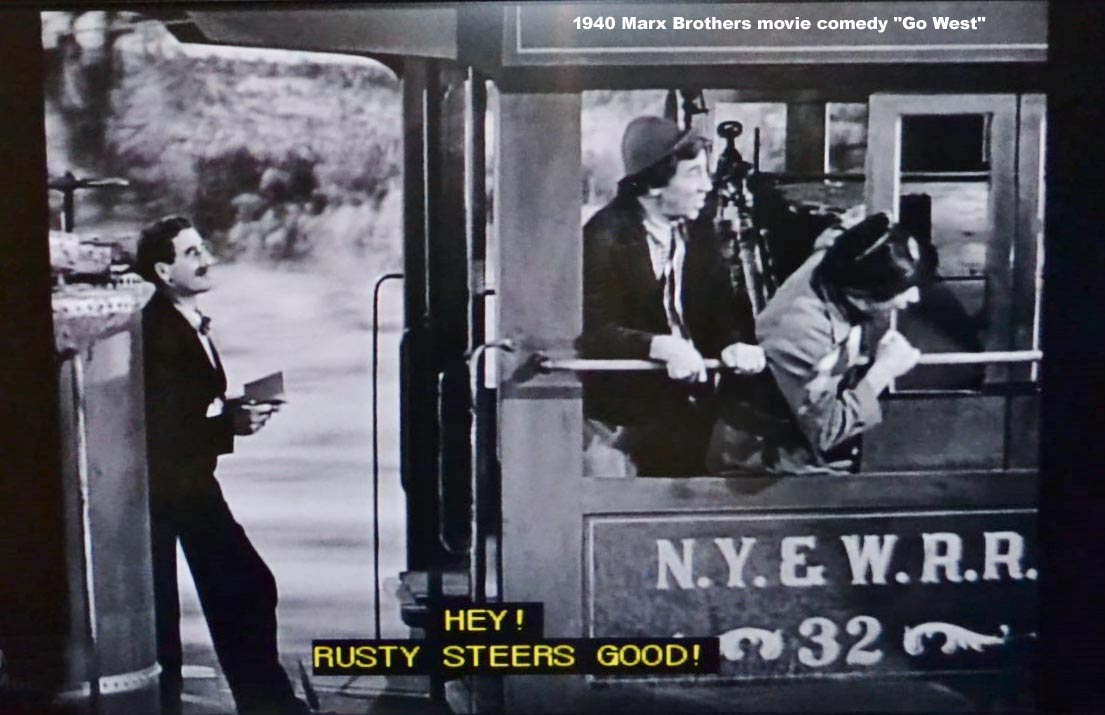
Oregon Short Line Railroad
Item: 22-O Special Price: $175.00
Remarks: ca. late 1800s
Forged by the Adams & Westlake Co.
Early A&W hex stamp = 1st series.
Superb stamp marks and gold patina.
Key listed in the "American Railway's Switch Key Directory."
125 year+ centenarian!
Click on image to view larger picture

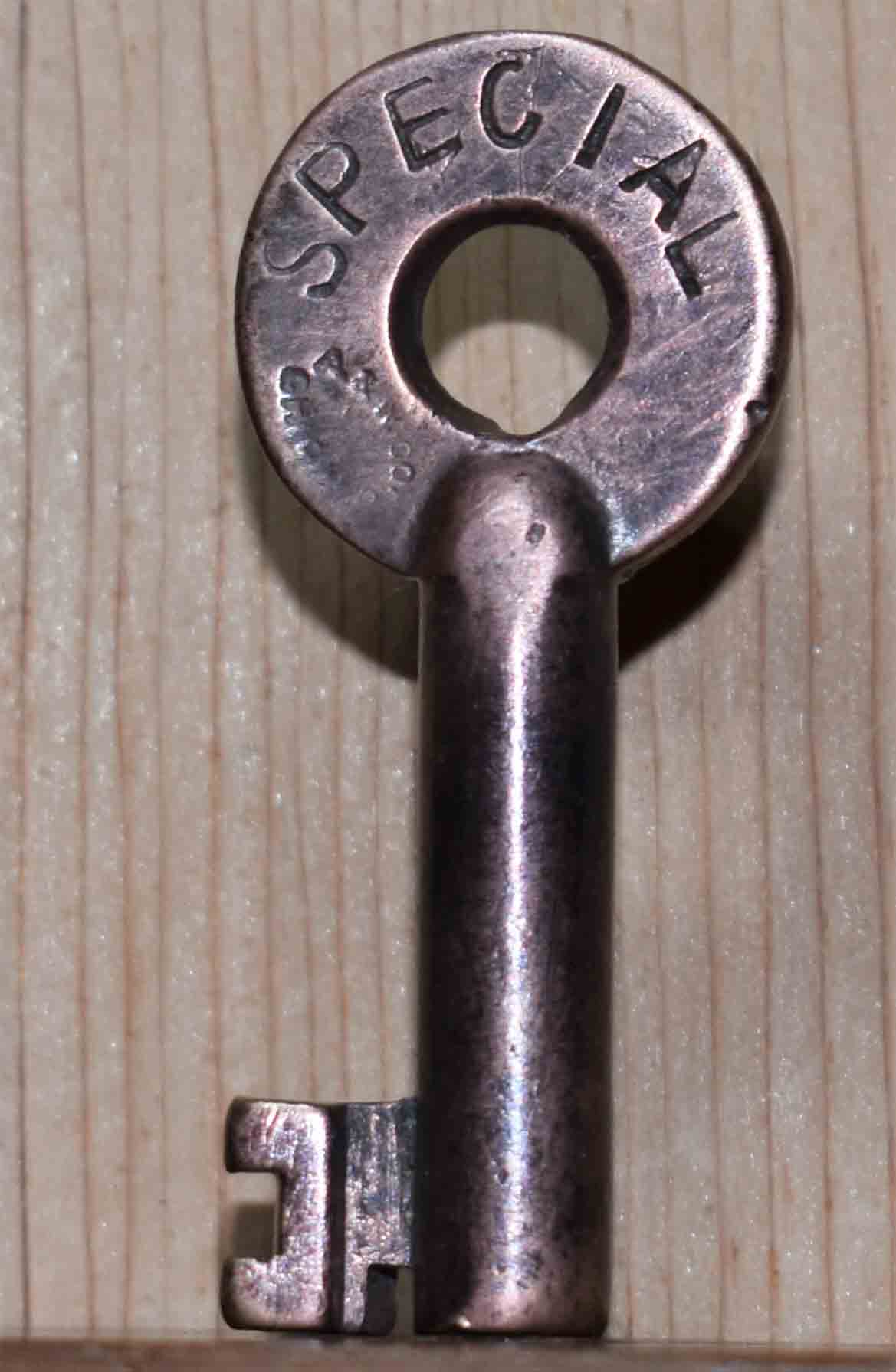
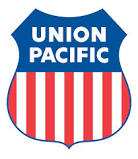
Oregon Short Line Railroad
Item: 23-O Price: $175.00
Remarks: ca. early 1900s
Forged by the Adams & Westlake Co.
Rare red brass key.
100 year + centenarian!
OSL Key Note
Brass is a metal alloy of copper and zinc, it's color typically golden-yellow,
but can be reddish if it has more copper, which is called "red brass." Brass with more zinc is lighter in color.
Click on image to view larger picture

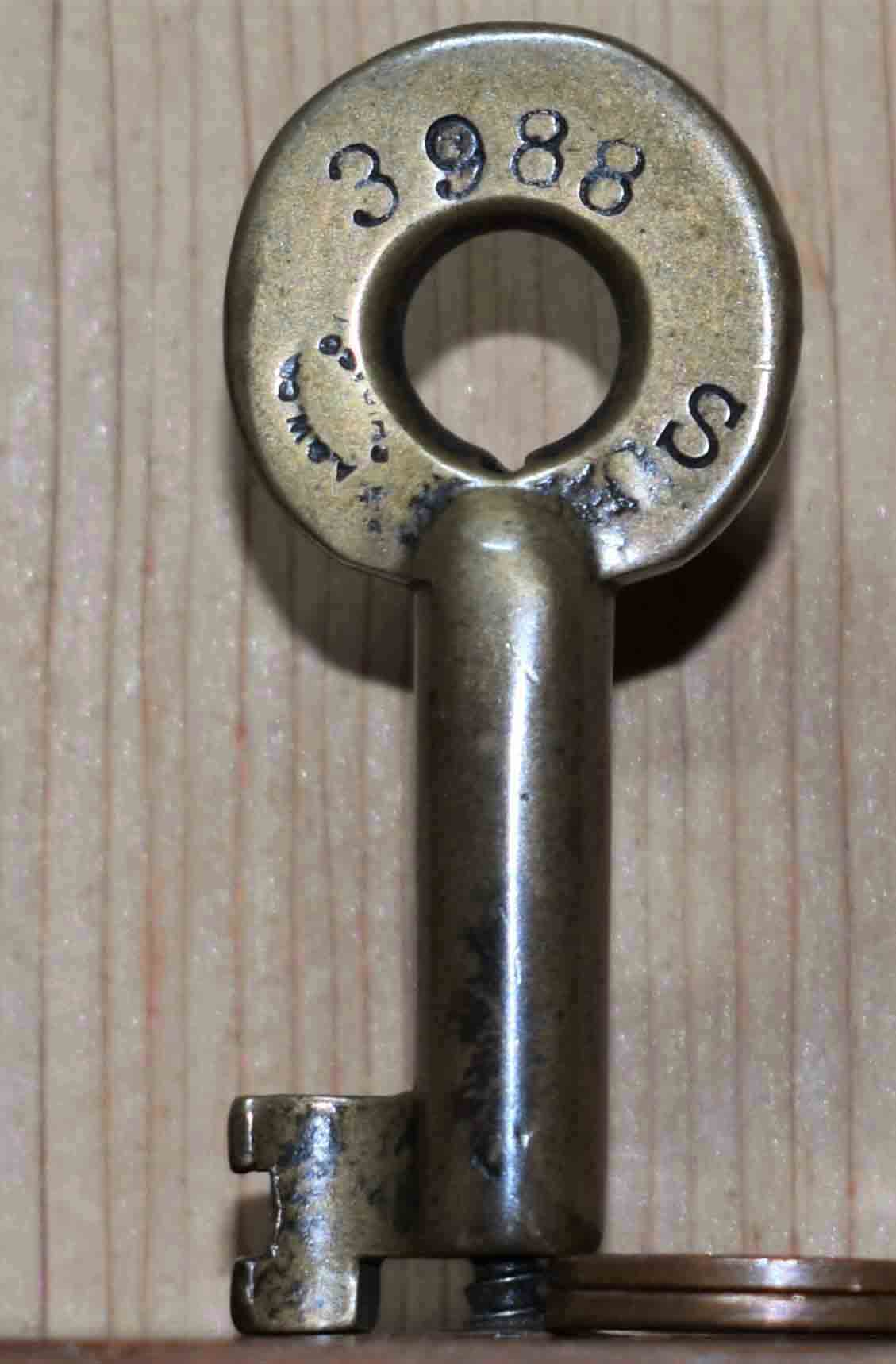



Oregon, Washington Railroad & Navigation Co.
SOLD post 1910 UP/OWRR&N Co. merger key Price: $125.00
Remarks: ca. early 1900s
Forged by the Adams & Westlake Co.
Superb stamp marks and two-tone patina.
100 year+ centenarian!
History
The Oregon Railway and Navigation Company's purchase of the Oregon Steam Navigation Company in 1880 gave it a partial route on the south (Oregon) side of the Columbia River. The company then pursued expansion of its Columbia River route, surveying from where the Oregon Steam Navigation tracks ended at Celilo and continuing east to Wallula. By 1882 the route along the Columbia River was complete.
OR&N was initially operated as an independent carrier, but Union Pacific (UP) purchased a majority stake in the line in 1898. It became a subsidiary of UP titled the Oregon, Washington Railroad and Navigation Company in 1910. In 1936, Union Pacific formally absorbed the system, which became UP's gateway to the Pacific Northwest.
Click on image to view larger picture
P

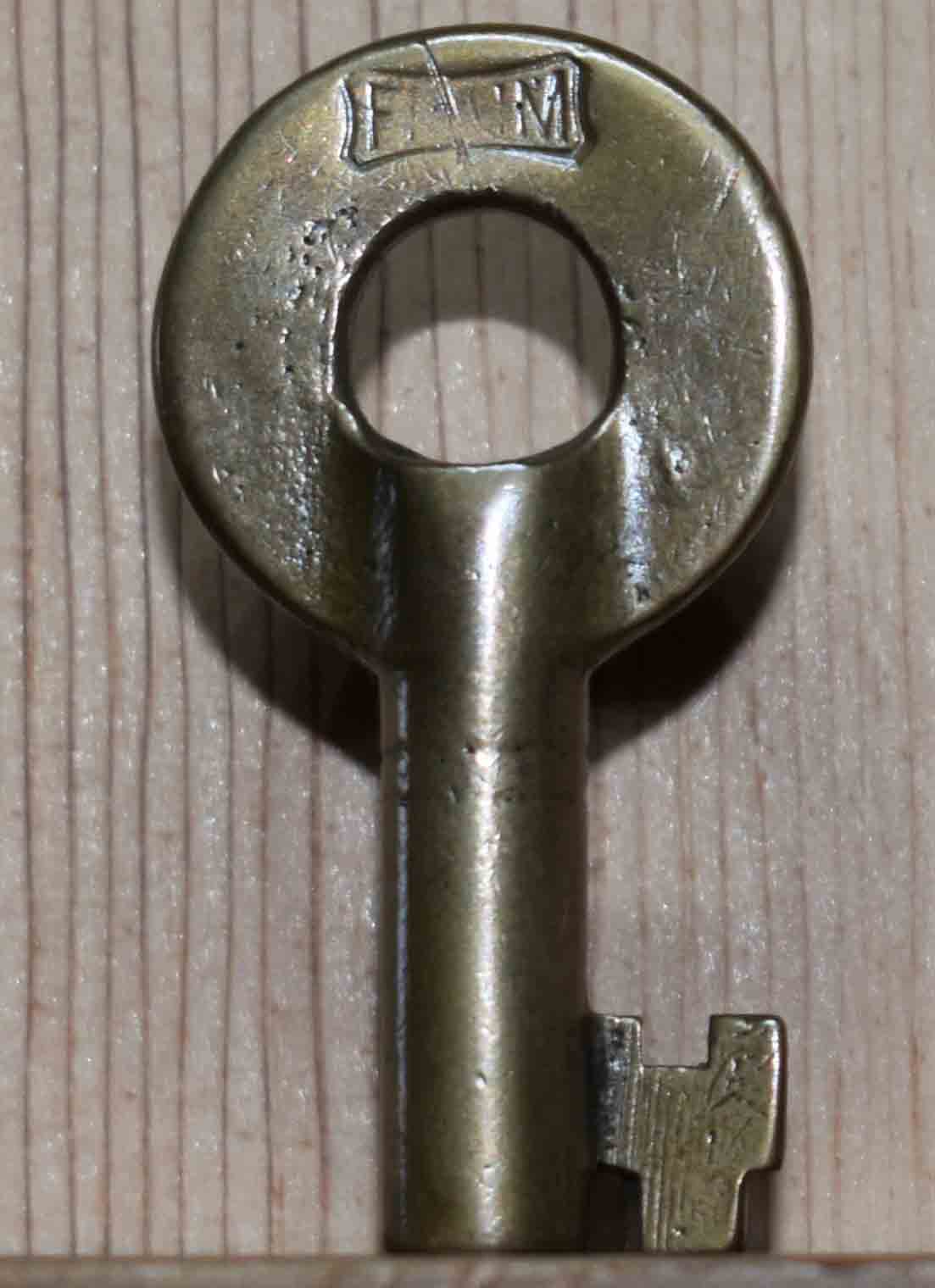
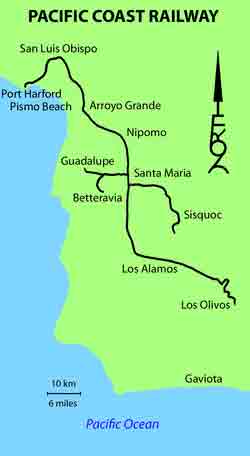
Pacific Coast Railroad
(California)
Item: 7-P Price: $145.00
Remarks: operated 1873-1941
Forged by the E.T. Fraim Co.
Superb stamp marks and gold patina.
100 year+ centenarian!
History
The Pacific Coast Railway was a 3 ft (914 mm) narrow gauge railway on the Central Coast of California. The original 10-mile (16 km) link from San Luis Obispo to Avila Beach and Port Harford was later built southward to Santa Maria and Los Olivos, with branches to Sisquoc and Guadalupe.
San Luis Obispo was a town totally trapped by mountains. The only way building materials could arrive, and farming goods could leave the area was aboard steamships anchored in San Luis Obispo Bay (Avila Beach). This was the start of what would become the PCR.
Oregon Improvement Company obtained controlling interest in the Pacific Coast Steamship Company in late 1882, reorganized the railroad as the Pacific Coast Railway, and extended the line to Los Alamos. The increased agricultural business was shortly overshadowed by discovery of oil in the Santa Maria Valley. By 1902 the railroad had converted its engines to burn oil and was strapping tanks from standard gauge cars onto their flatcars at the rate of ten per month.
Profits peaked in 1921 and declined as automobiles became more common. After a brief period of hauling gravel for construction of U.S. Route 101 in 1928 and 29, the Pacific Coast Railway started to crumble slowly. The gravel business required purchase of two 2-8-0s from the recently standard-gauged Nevada-California-Oregon Railway to replace Pacific Coast 2-8-0s dismantled for parts to keep the other engines running. Service to Los Olivos was reduced to a twice-weekly mixed train by 1930 and ended in 1933. Most of the remaining equipment was cut up for scrap by 1948, but caboose number 2 has been preserved at the California State Railroad Museum.
Click on image to view larger picture
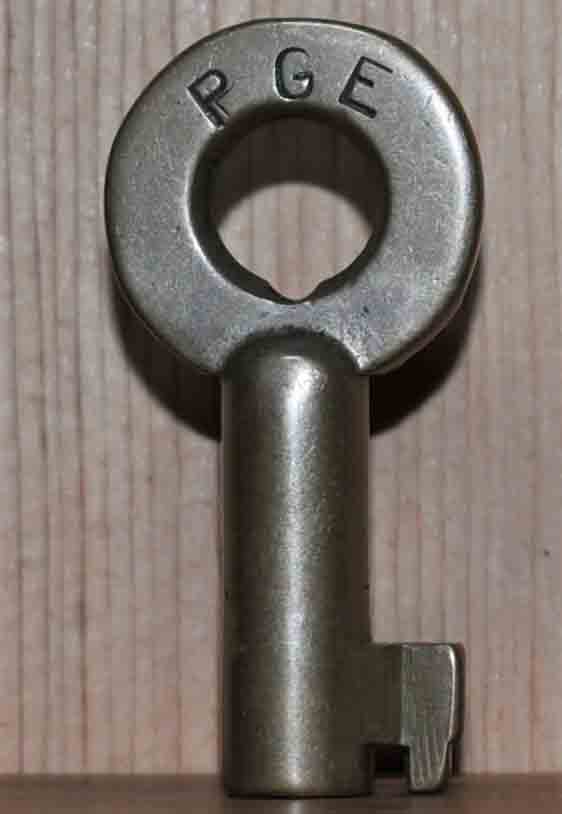
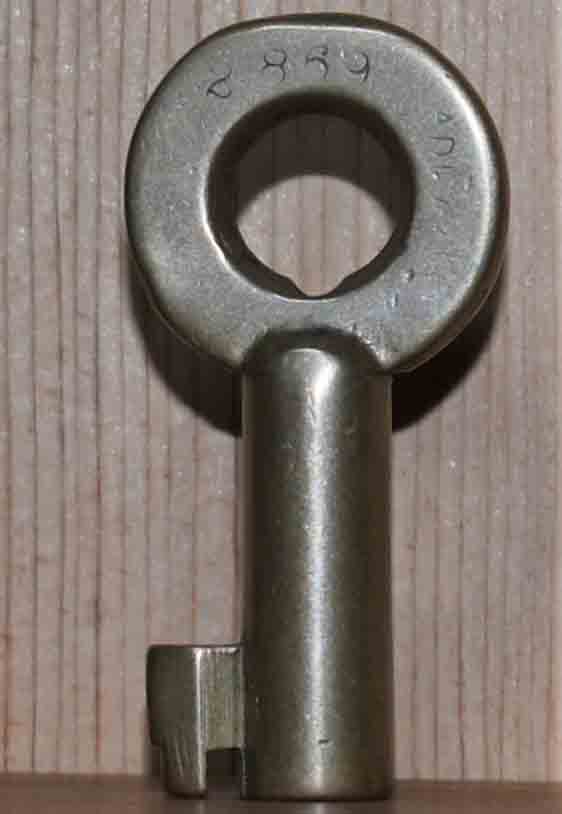

Pacific Great Eastern Railway
SOLD Price: $115.00
Remarks: ca. mid-1900s
Forged by the Adlake Co.
Nice stamp marks and gold patina.
History
British Columbia's largest railroad and Canada's third largest was the Pacific Great Eastern Railway of the early 20th century. The system languished for years as an incomplete, money-losing operation with a few hundred miles in service north of Vancouver. This changed after World War II when government funding helped expand the PGE by several hundred miles and it continued to grow throughout the 1980s. By then the railroad was renamed as the British Columbia Railway and efforts were in place to extend it to the Alaskan border, finally allowing that state to connect with the North American rail network. This proposal would ultimately fall through due to rising costs. Later, the BC Rail system disappeared into Canadian National, which now leases the entire railroad from the local government.
Click on image to view larger picture



Pacific Electric Railway
Item: 11-P Price: $125.00
Remarks: ca. late 1800s
Forged by the Adams & Westlake Co.
Early A&W hex stamp = 1st series.
Superb stamp marks and gold patina.
125 year+ centenarian!
History
Pacific Electric, also known as the Red Car system, was a privately owned mass transit system in Southern California consisting of electrically powered streetcars, interurban cars and buses. The PE was the largest electric railway system in the world in the 1920s. Organized around the city centers of Los Angeles and San Bernardino, it connected cities in Los Angeles County, Orange County, San Bernardino County and Riverside County. The system shared dual gauge track with the 3 ft 6 in narrow gauge Los Angeles Railway, "Yellow Car", or "LARy" system on Main Street in downtown Los Angeles (directly in front of the 6th and Main terminal), on 4th Street, and along Hawthorne Boulevard south of downtown Los Angeles toward the cities of Hawthorne, Gardena and Torrance.
Following these acquisitions, PE was the largest operator of interurban electric railway passenger service in the world, with 2,160 daily trains over 1,000 miles of track. It operated to many destinations in Southern California, particularly to the south and east.
Click on image to view larger picture



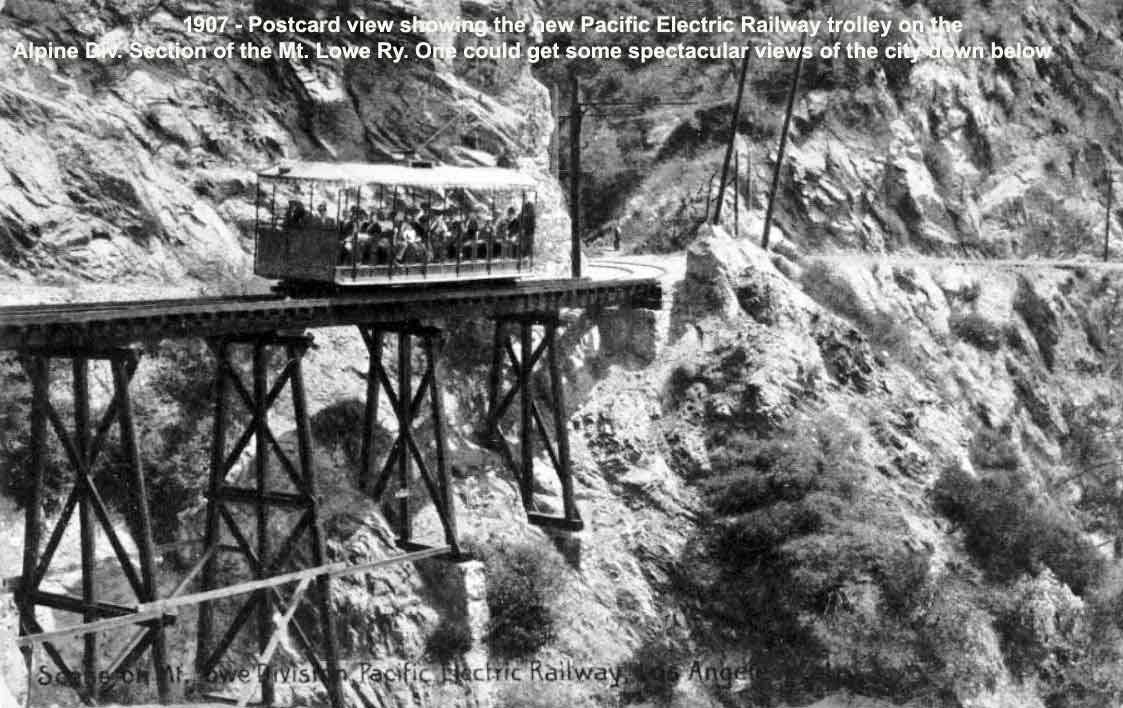
Pacific Electric Railway
SOLD Price: $95.00
Remarks: ca. post 1930
Forged by the Fraim Co.
Superb stamp marks and two-tone patina.
80 year+ octogenarian!
Click on image to view larger picture


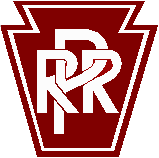
Pennsylvania Railroad
aka "the Pennsy / Penna Lines"
Item: 15-P switch key Price: $100.00
Remarks: ca. early/mid-1900s
Forged by the Adlake Co.
Superb stamp marks and carmel patina.
100 year+ centenarian!
History
The Pennsylvania Railroad was an American Class I railroad that was established in 1846 and was headquartered in Philadelphia, Pennsylvania. It was so named because it was established in the Commonwealth of Pennsylvania.
Click on image to view larger picture


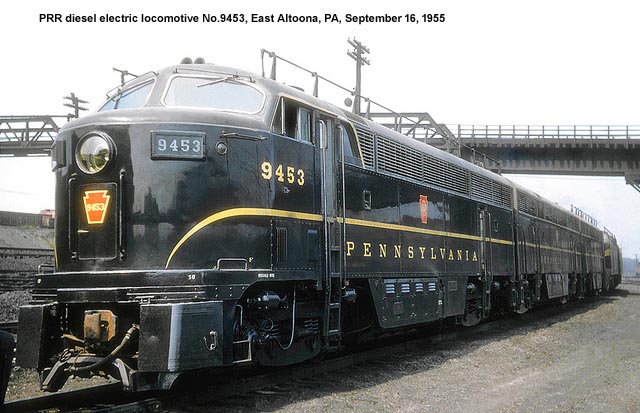
Pennsylvania Railroad
aka "the Pennsy / Penna Lines"
Item: 16-P switch key Price: $65.00
Remarks: ca. early 1900s
Nice stamp marks and gold patina.
100 year+ centenarian!
Note
I never understood why the large key hilt, some previous owner rounded this one down to better suit his key ring. He did a decent job too!
Click on image to view larger picture




 Pennsylvania Railroad
aka "the Pennsy / Penna Lines"
Item: 17-P switch key Price: $75.00
Remarks: ca. early 1900s
Forged by the Adams & Westlake Co.
Nice stamp marks and bright gold patina.
100 year+ centenarian!
History - continued from above
In 1847, the Pennsy's directors chose J. Edgar Thomson, an engineer from the Georgia Railroad, to survey and construct the line. He chose a route that followed the west bank of the Susquehanna River northward to the confluence with the Juniata River, following its banks until the foothills of the Allegheny Mountains were reached at a point that would become Altoona, Pennsylvania.
Click on image to view larger picture

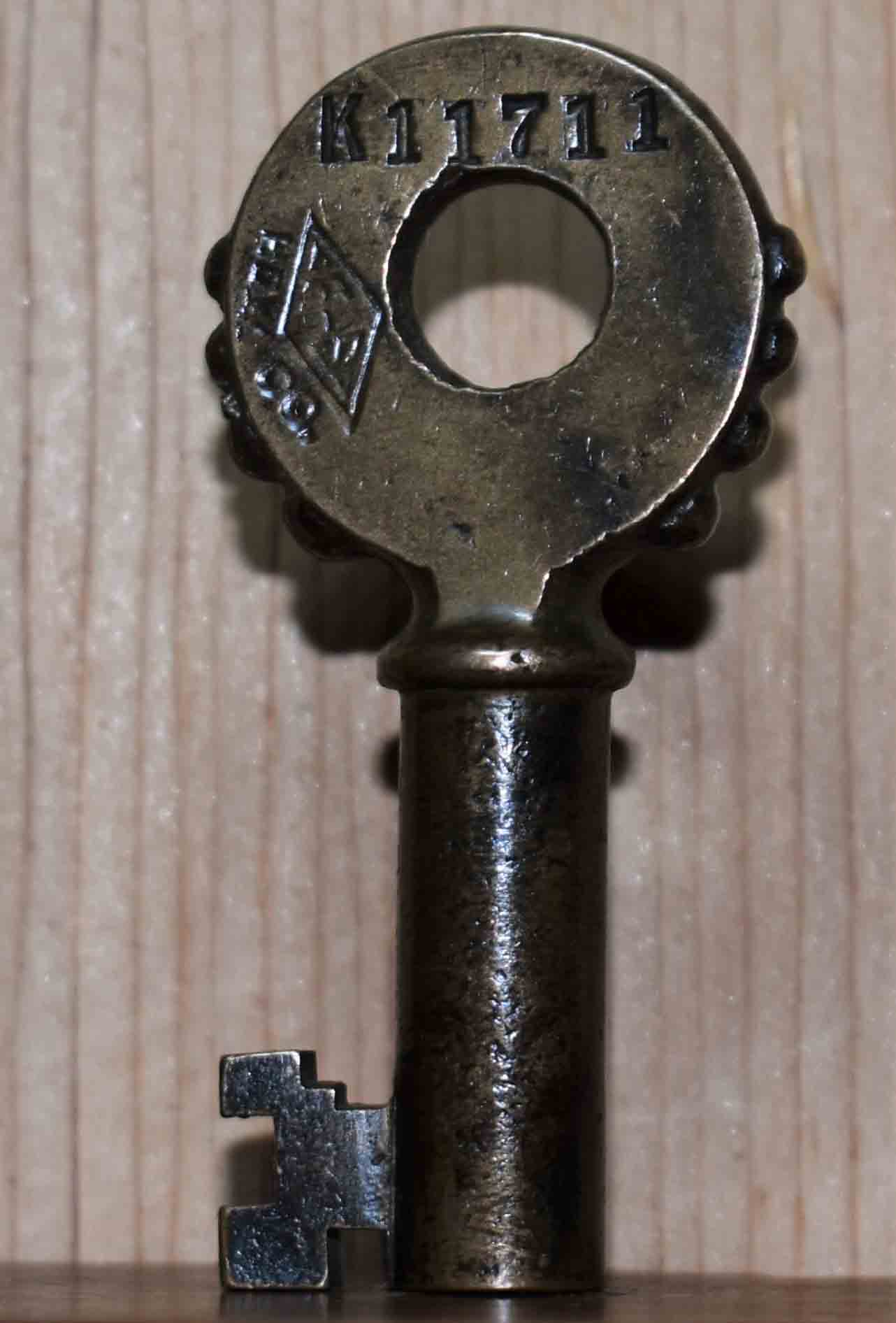

Pennsylvania Railroad
aka "the Pennsy / Penna Lines"
Item: 19-P knobby car key Price: $95.00
Remarks: ca. 1921-30
Forged by Fraim/Slaymaker Co.
Superb serif stamp marks and dark patina.
80 year+ octogenarian!
History - continued from above
On June 15, 1887, the Pennsylvania Limited began running between New York and Chicago. This was also the introduction of the vestibule, an enclosed platform at the end of each passenger car, allowing protected access to the entire train. In 1902 the Pennsylvania Limited was replaced by the Pennsylvania Special which in turn was replaced in 1912 by the Broadway Limited which became the most famous train operated by the Pennsylvania Railroad. This train ran from New York City to Chicago, via Philadelphia, with an additional section between Harrisburg and Washington (later operated as a separate Washington-Chicago train, the Liberty Limited).
Click on image to view larger picture


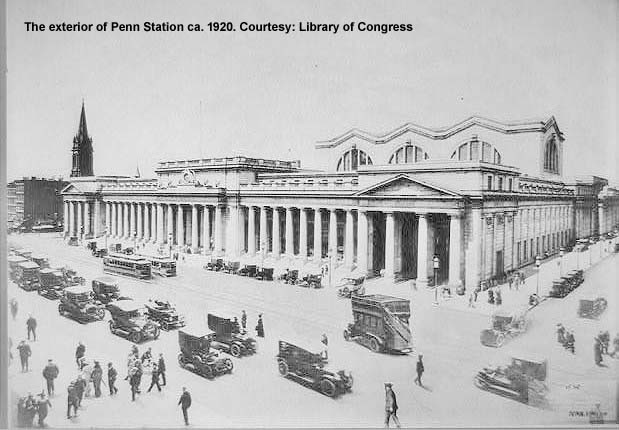
Pennsylvania Railroad
aka "the Pennsy / Penna Lines"
Item: 20-P knobby car key Price: $95.00
Remarks: ca. 1879-1917
Forged by the E.T. Fraim Co.
Superb serif stamp marks and patina.
125 year + centenarian!
History - continued from above
Early in the 20th century the PRR tried electric power for its trains. First was the New York terminal area, where tunnels and a city law restricting the burning of coal precluded steam locomotives. There a direct current (DC) 650-volt third rail powered PRR locomotives (and LIRR passenger cars). The system was put into service in 1910.
Click on image to view larger picture
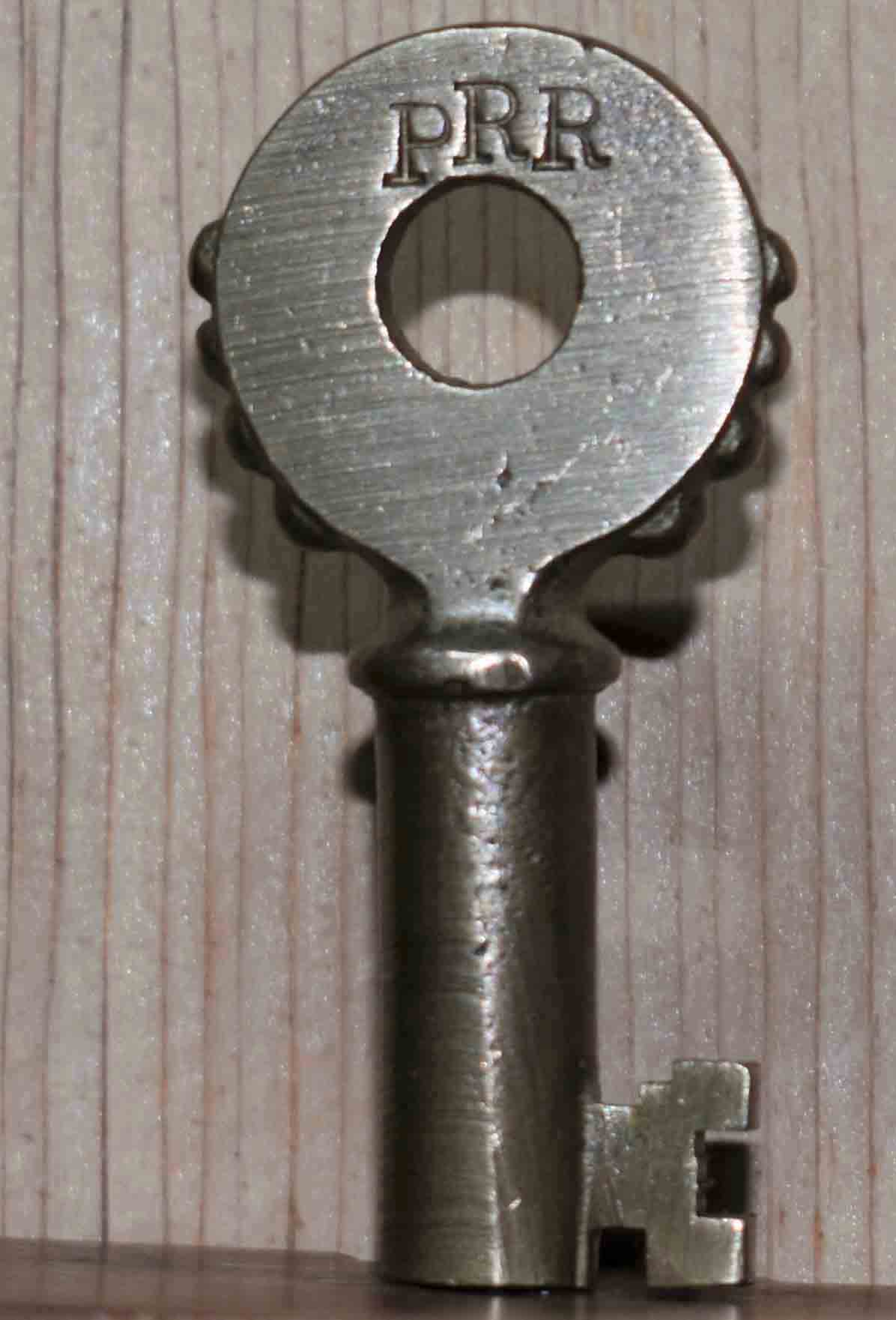

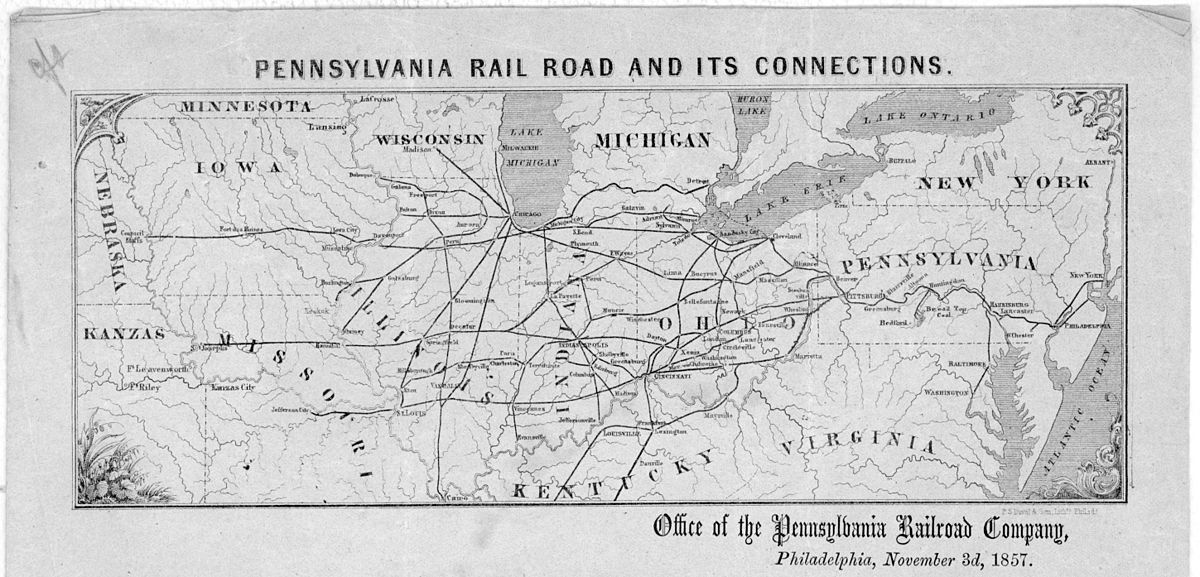
Pennsylvania Railroad
aka "the Pennsy / Penna Lines"
Item: 21-P knobby car key Price: $50.00
Remarks: ca. early 1900s
Great serif stamp marks and gold patina.
History - continued from above
In 1968, the Pennsylvania Railroad absorbed its rival New York Central Railroad and the railroad eventually went by the name of Penn Central Transportation Company, or "Penn Central" for short, the railroad filed for bankruptcy within two years.
Click on image to view larger picture
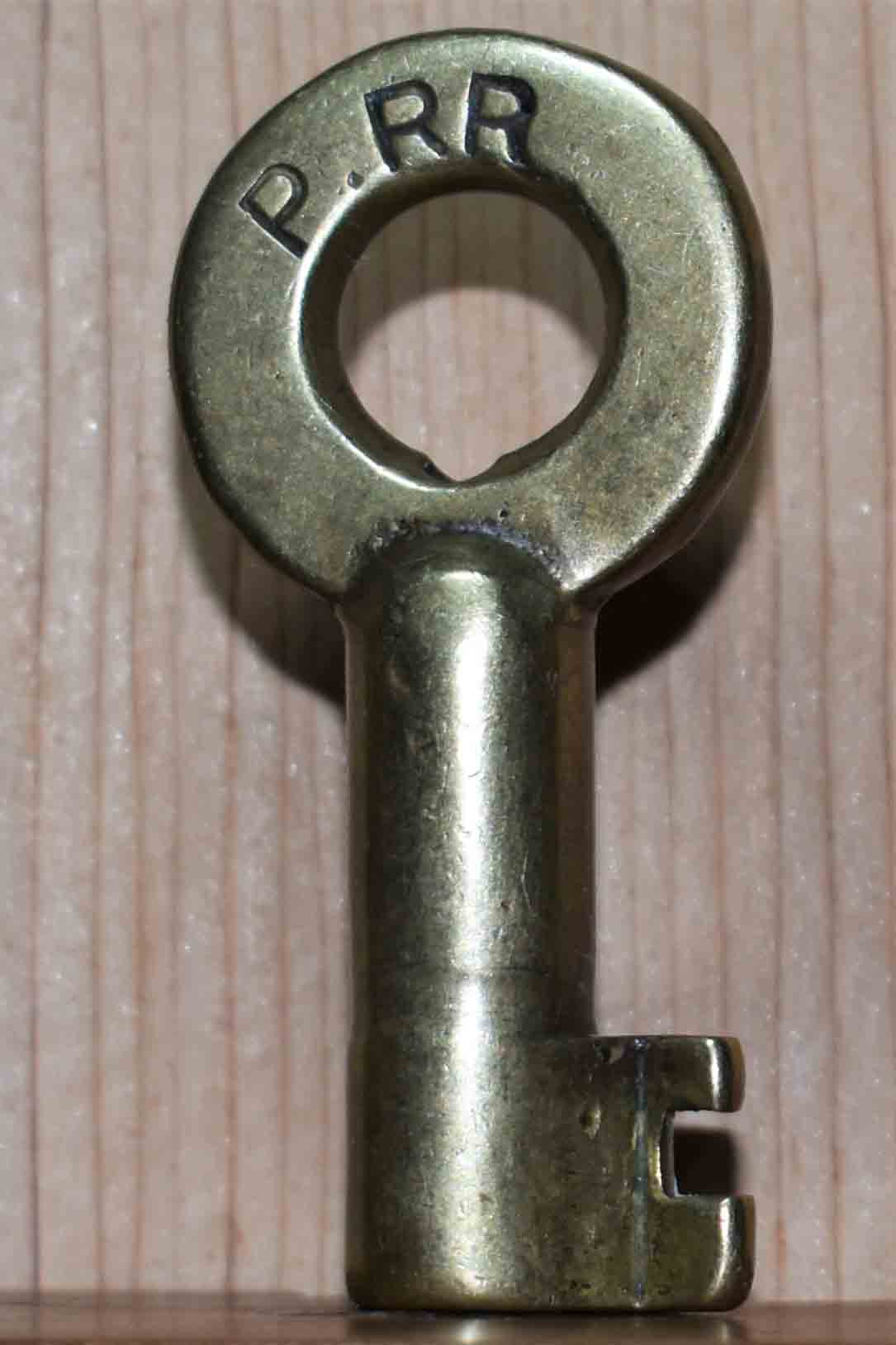
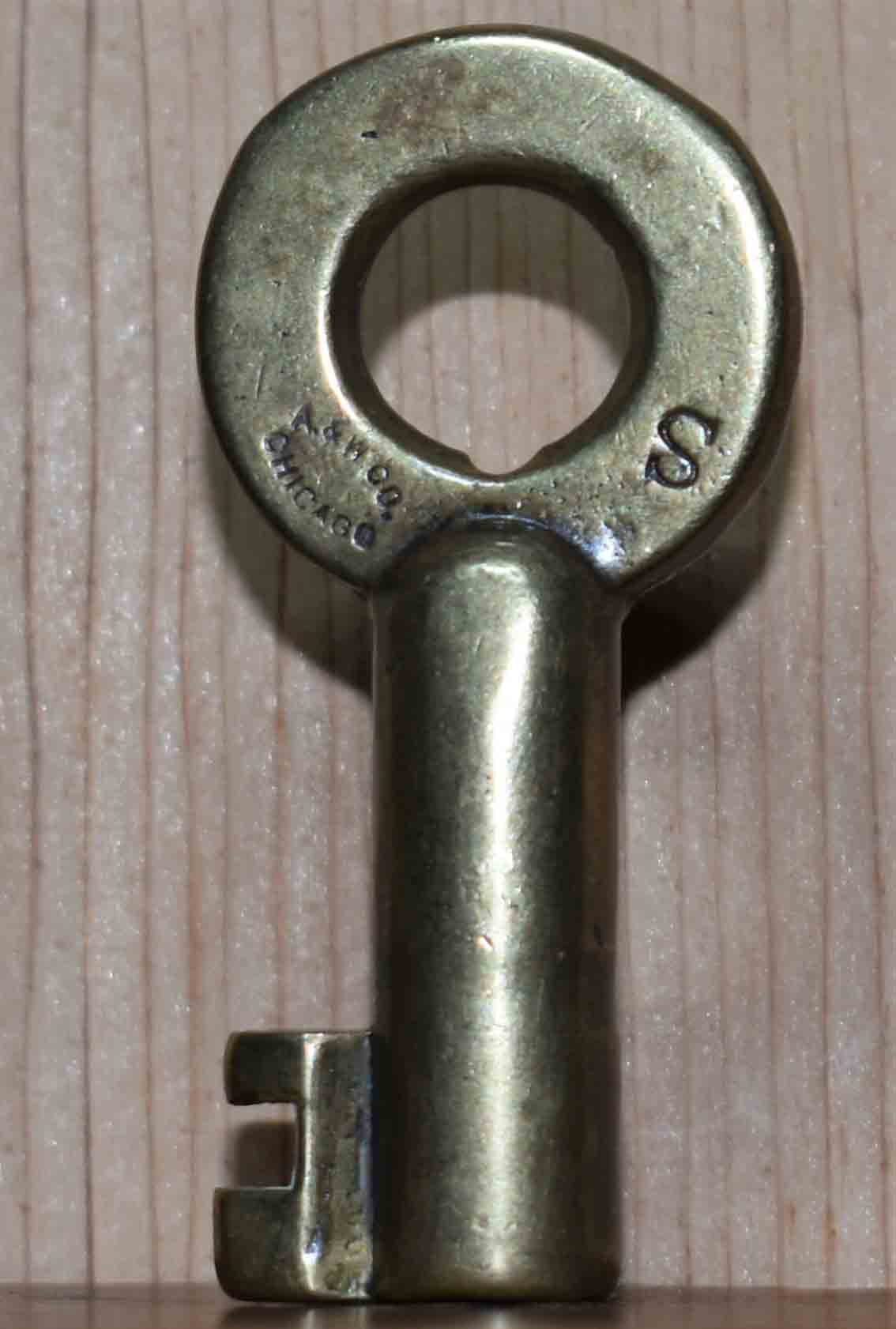
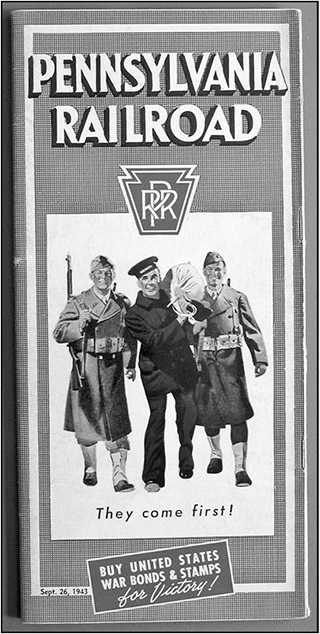
Pennsylvania Railroad
aka "the Pennsy / Penna Lines"
Item: 22-P Price: $75.00
Remarks: ca. early 1900s
Forged by the Adams & Westlake Co.
Superb stamp marks and gold patina.
100 year+ centenarian!
History - continued from above
Bankruptcy continued and on April 1, 1976, the railroad gave up its railroad assets, along with the assets of several other failing northeastern railroads, to a new railroad named Consolidated Rail Corporation, or Conrail for short. Conrail was itself purchased and split up in 1999 with 58 percent of the system going to the Norfolk Southern Railway (NS), including nearly all of the remaining former Pennsylvania Railroad. US passenger carrier Amtrak received the electrified segment of the Main Line east of Harrisburg.
Click on image to view larger picture

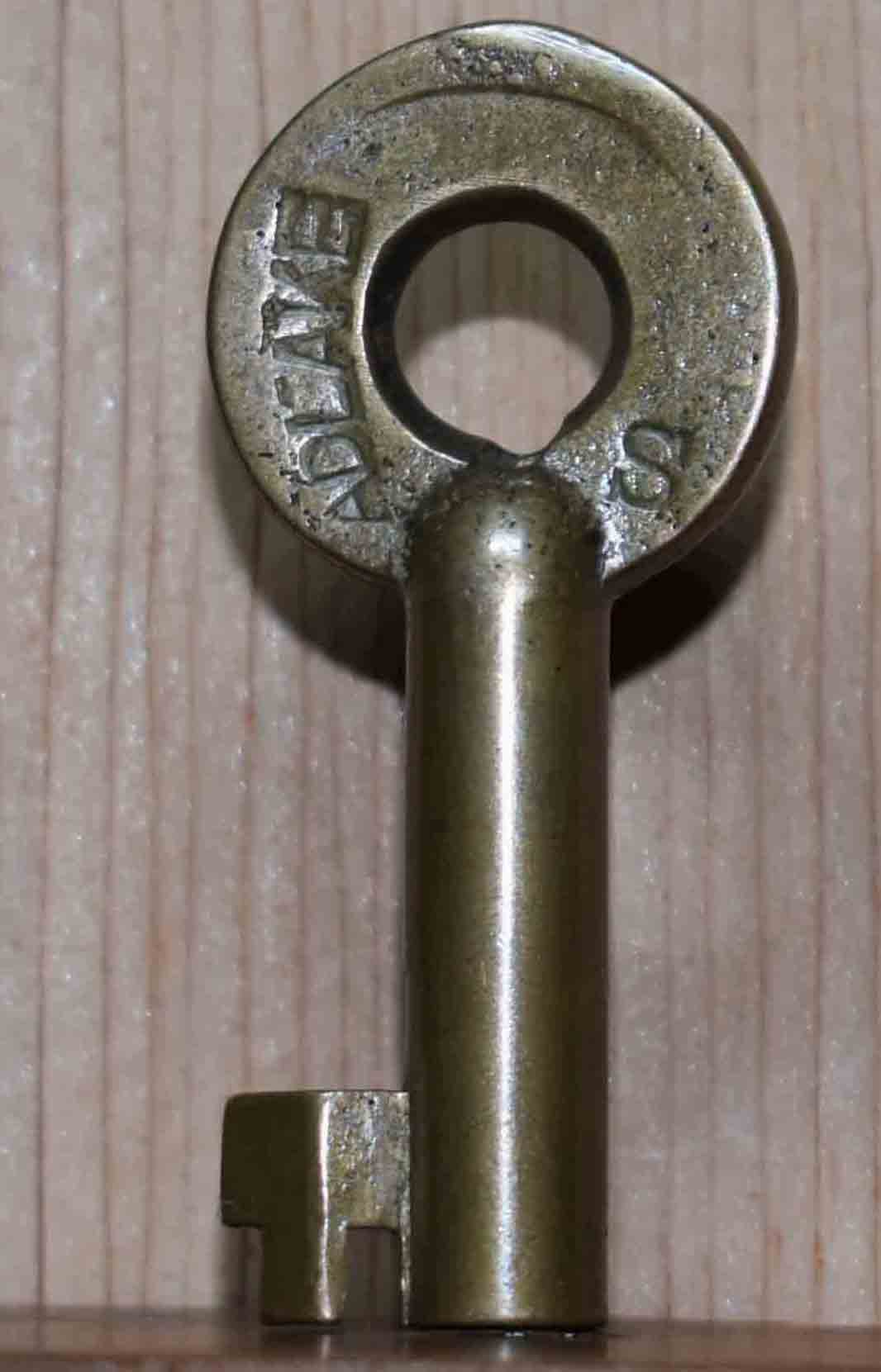


Pennsylvania Railroad
aka "the Pennsy / Penna Lines"
Item: 23-P "S" type key for Penna switch locks Price: $95.00
Remarks: ca. mid-1900s
Forged by the Adlake Co.
Same style key as below but not as old.
Item of Interest
The Second Vice-President of the PRR, John Borland Thayer, is lost in the sinking of RMS Titanic (1912) at age of 49.
Click on image to view larger picture

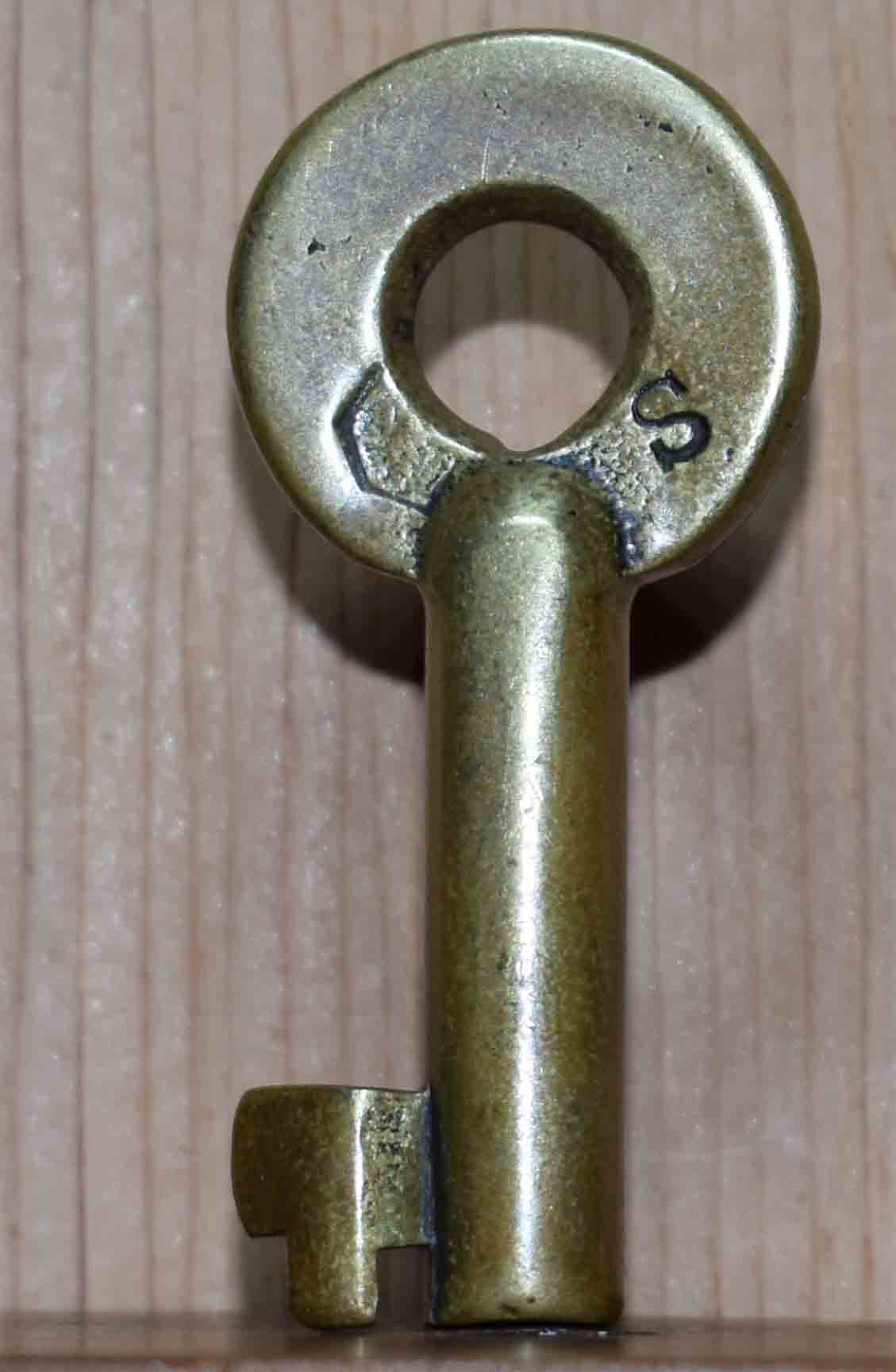

Penna Co.
aka "the Pennsylvania Railroad"
Item: 24-P "S" type key for Penna switch locks Price: $145.00
Remarks: ca. late 1800s
Forged by the Adams & Westlake Co.
Early A&W hex stamp = 1st series.
Superb stamp marks and gold patina.
125 year+ centenarian!
Click on image to view larger picture



Penna Co
aka "the Pennsylvania Railroad"
Item: 25-P "C" type key for Penna car locks Price: $75.00
Remarks: ca. early 1900s
Forged by the Adlake Co.
Superb serif stamp marks and dark patina.
80 year+ octogenarian!
History - continued from above
After Conrail was divided between the Norfolk Southern Railway and CSX Transportation, most of the former Pennsy's remaining trackage went to Norfolk Southern. Ironically, after 1976, the railroad eventually became an insurance company and now goes by the name of American Premier Underwriters and is now a subsidiary of American Financial Group.
Click on image to view larger picture



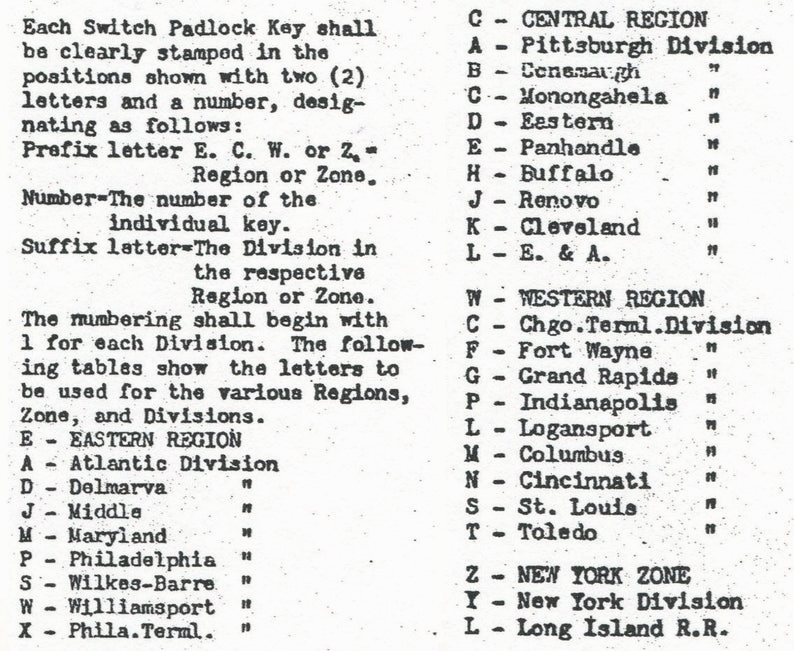
Penna Co.
aka "the Pennsylvania Railroad"
Item: 26-P Chicago Terminal Division Price: $115.00
Remarks: ca. early 1900s
Forged by the Adlake Co.
Superb stamp marks and copper-gold patina.
Same style cut as car key.
Click on image to view larger picture

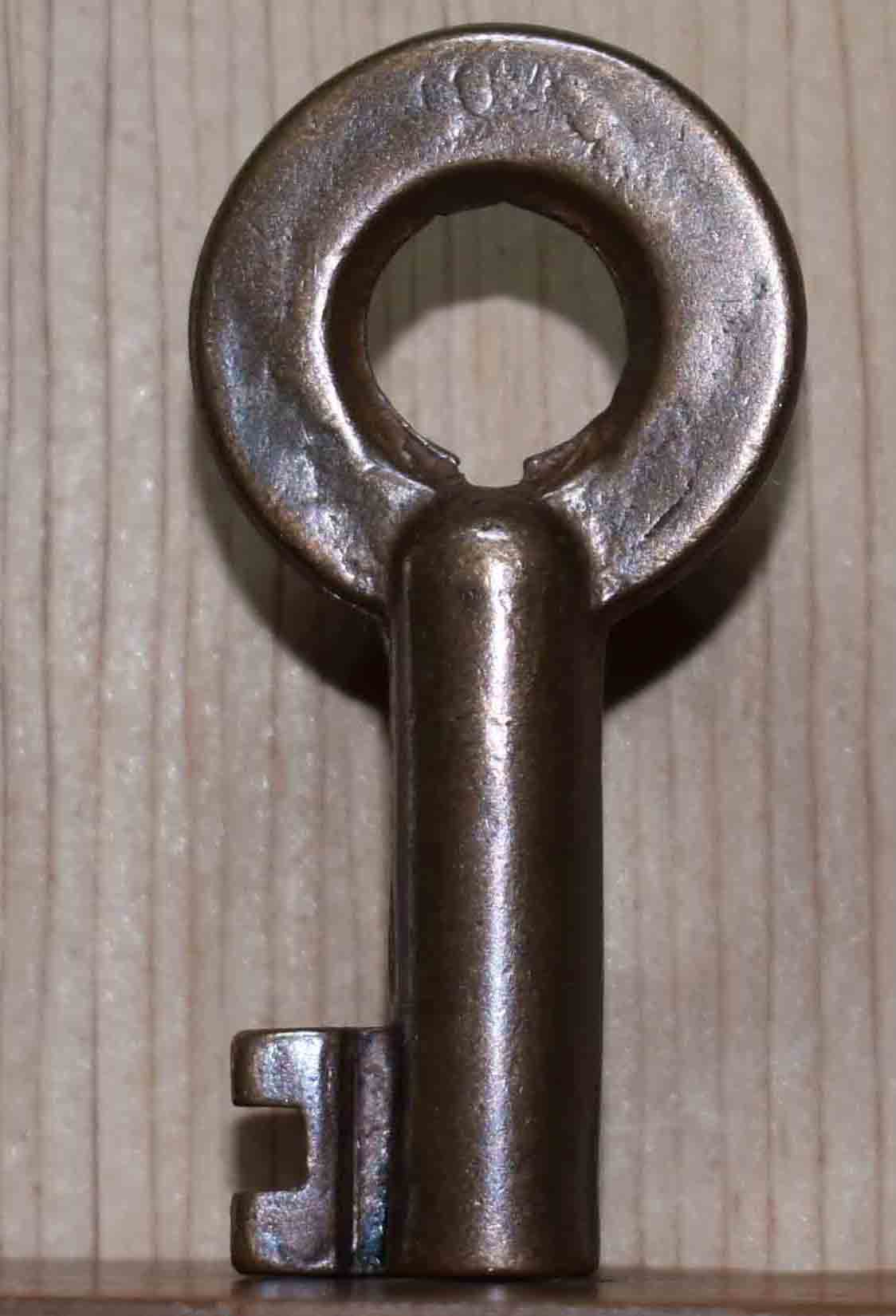

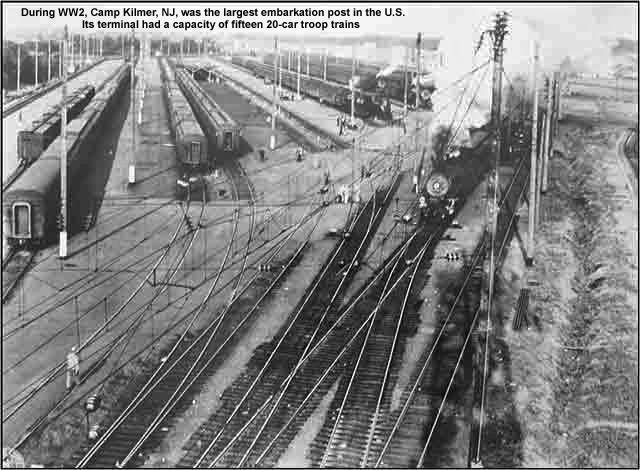

Portugal (Pennsylvania Railroad)
Item: 29-P Pennsy switch key Price: $55.00
Remarks: ca. mid-1900s
Pennsy switch key.
Superb stamp marks and copper patina.
I must say, a great looking key!
Click on image to view larger picture

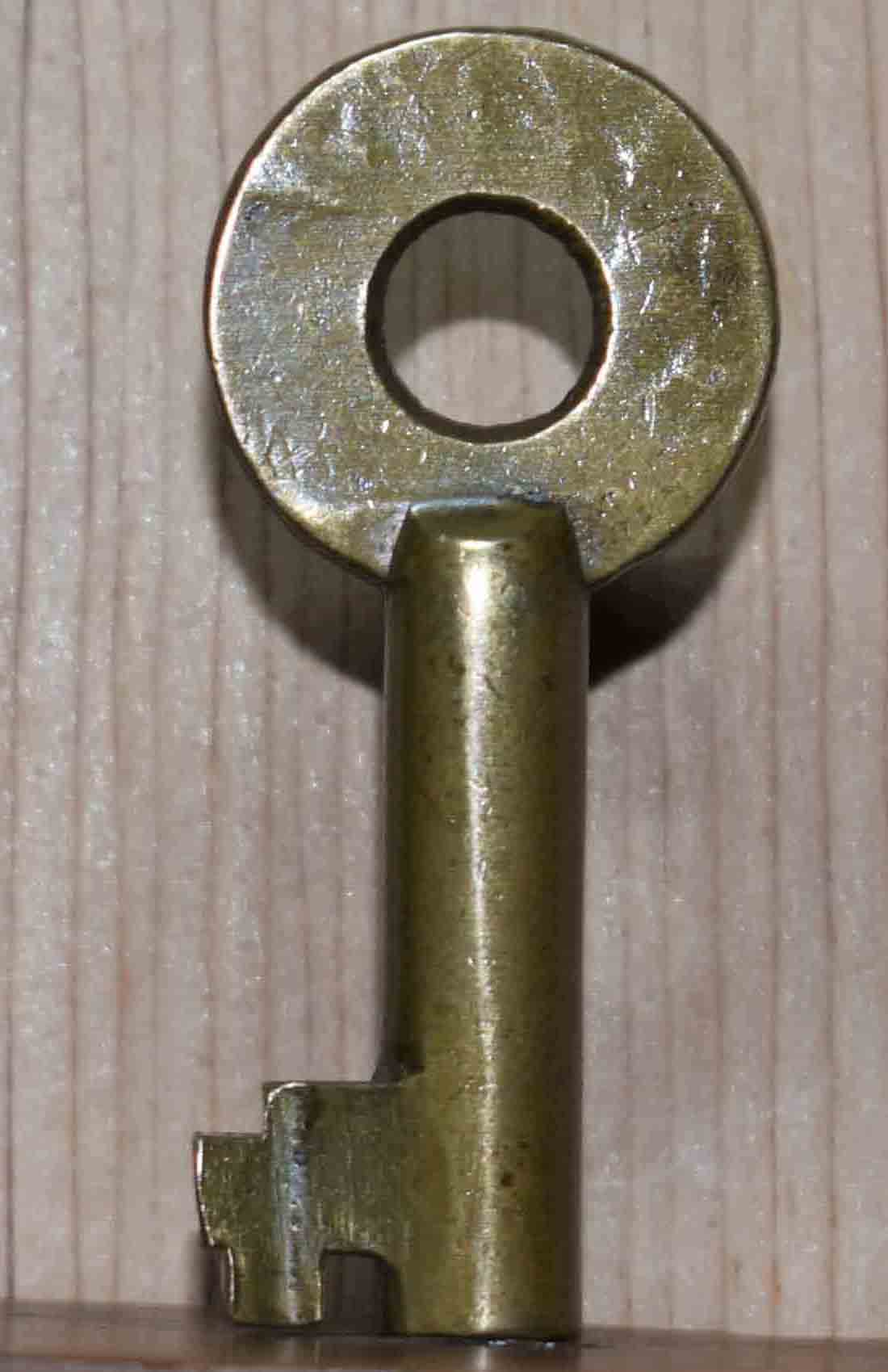



Pittsburgh, Cincinnati, Chicago & St. Louis Railroad
aka "the Panhandle Route"
Item: 30-P original cut Price: $150.00
Remarks: ca. late 1800s
Nice stamp marks and gold patina.
Key listed in the
"American Railway's Switch Key Directory."
This key + key below = nice set!
125 year+ centenarian!
History
The Pittsburgh, Cincinnati, Chicago & St. Louis Railroad, commonly called the Pan Handle Route (Panhandle Route in later days), was a railroad that was part of the Pennsylvania Railroad system. Its common name came from its main line, which began at Pittsburgh, Pennsylvania, crossed the Northern Panhandle of West Virginia, and continued west to Bradford, Ohio, where it split into a northern line to Chicago and a southern one through Indianapolis, Indiana, to East St. Louis, Illinois.
Click on image to view larger picture


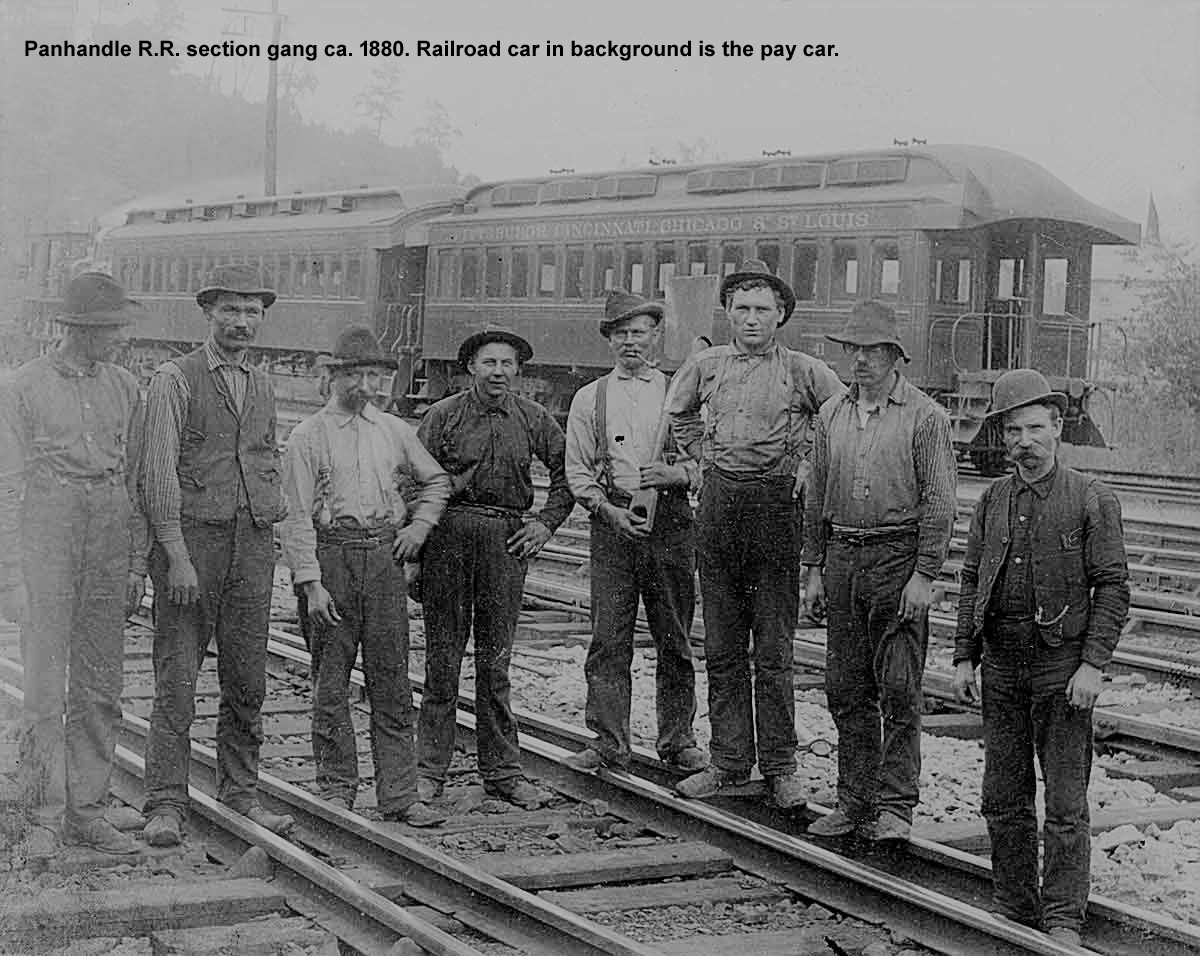
The Panhandle Route
aka "the Pittsburgh, Cincinnati, Chicago & St. Louis R.R."
SOLD Pennsy style bit Price: $115.00
Remarks: ca. early 1900s
Superb serif stamp marks and gold patina.
History - continued from above
The Columbus, Chicago & Indiana Central Railway went bankrupt and was sold at foreclosure on January 10, 1883. The Chicago, St. Louis & Pittsburgh Railroad was incorporated in Indiana on March 14 and Illinois on March 15, and the former CC&IC was conveyed to the two companies on March 17. Operation by the PC&StL continued until April 1, 1883. On April 1, 1884, the two companies merged to form one Chicago-St. Louis & Pittsburgh Railroad. That company was merged with the PC&StL, Cincinnati & Richmond Railroad and Jeffersonville-Madison & Indianapolis Railroad on September 30, 1890, to form the Pittsburgh-Cincinnati-Chicago & St. Louis Railway (PCC&StL).
Click on image to view larger picture



Pittsburgh, Cincinnati, Chicago & St. Louis Railway
aka "the Panhandle Route"
SOLD Pennsy style bit Price: $145.00
Remarks: ca. late 1800s
Forged by the Adams & Westlake Co.
Early A&W hex stamp = 1st series.
Nice pocket worn stamp marks and superb
two-tone patina. This key + key above = nice set!
125 year + centenarian!
History - continued from above
In 1891, the PCC&StL acquired stock ownership of the Little Miami Railroad. On December 21, 1916 (taking effect January 1, 1917), the Pittsburgh, Cincinnati, Chicago and St. Louis Railway merged with the Vandalia Railroad, Pittsburgh, Wheeling and Kentucky Railroad, Anderson Belt Railway and Chicago, Indiana and Eastern Railway, forming the Pittsburgh, Cincinnati, Chicago and St. Louis Railroad.
The PCC&StL was leased by the PRR on January 1, 1921, and finally was merged into the PRR's Philadelphia, Baltimore and Washington Railroad on April 2, 1956.
Click on image to view larger picture



Pittsburgh, Cincinnati, Chicago & St. Louis Railway
aka "the Panhandle Route"
Item: 33-P Pennsy style bit Price: $125.00
Remarks: ca. late 1800s
Forged by the Adams & Westlake Co.
Early A&W hex stamp = 1st series.
Key listed in the
"American Railway's Switch Key Directory."
This key + key below = nice set!
125 year+ centenarian!
Click on image to view larger picture

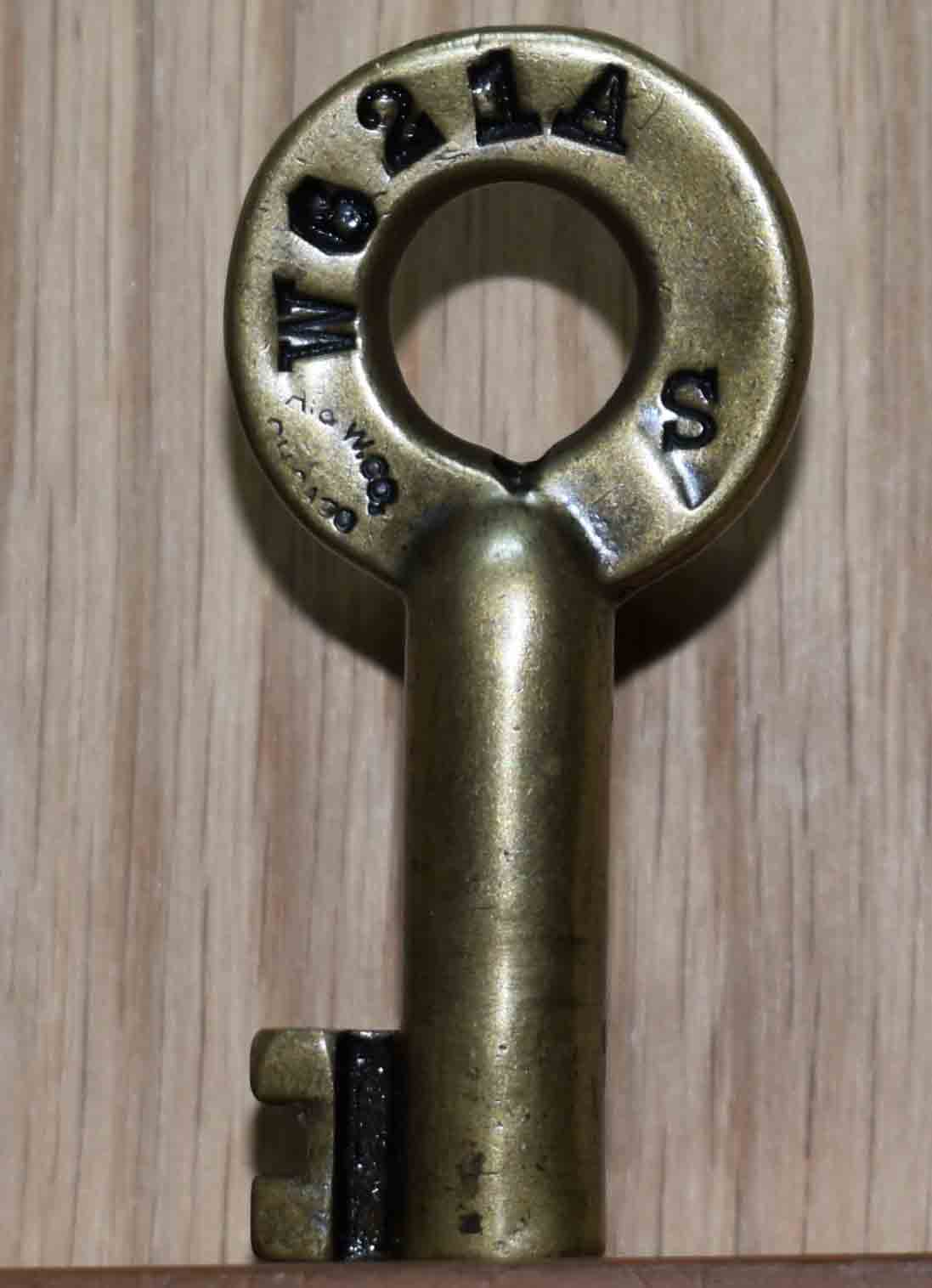

Pittsburgh, Cincinnati, Chicago & St. Louis Railroad
aka "the Panhandle Route"
Item: 34-P Pennsy style bit Price: $145.00
Remarks: ca. early 1900s
Forged by the Adams & Westlake Co.
Superb deep stamp marks and gold patina.
This key + key above = nice set!
Two keys above stamped "RY" are older than
this key stamped "RR." - 100 year+ centenarian!
Click on image to view larger picture

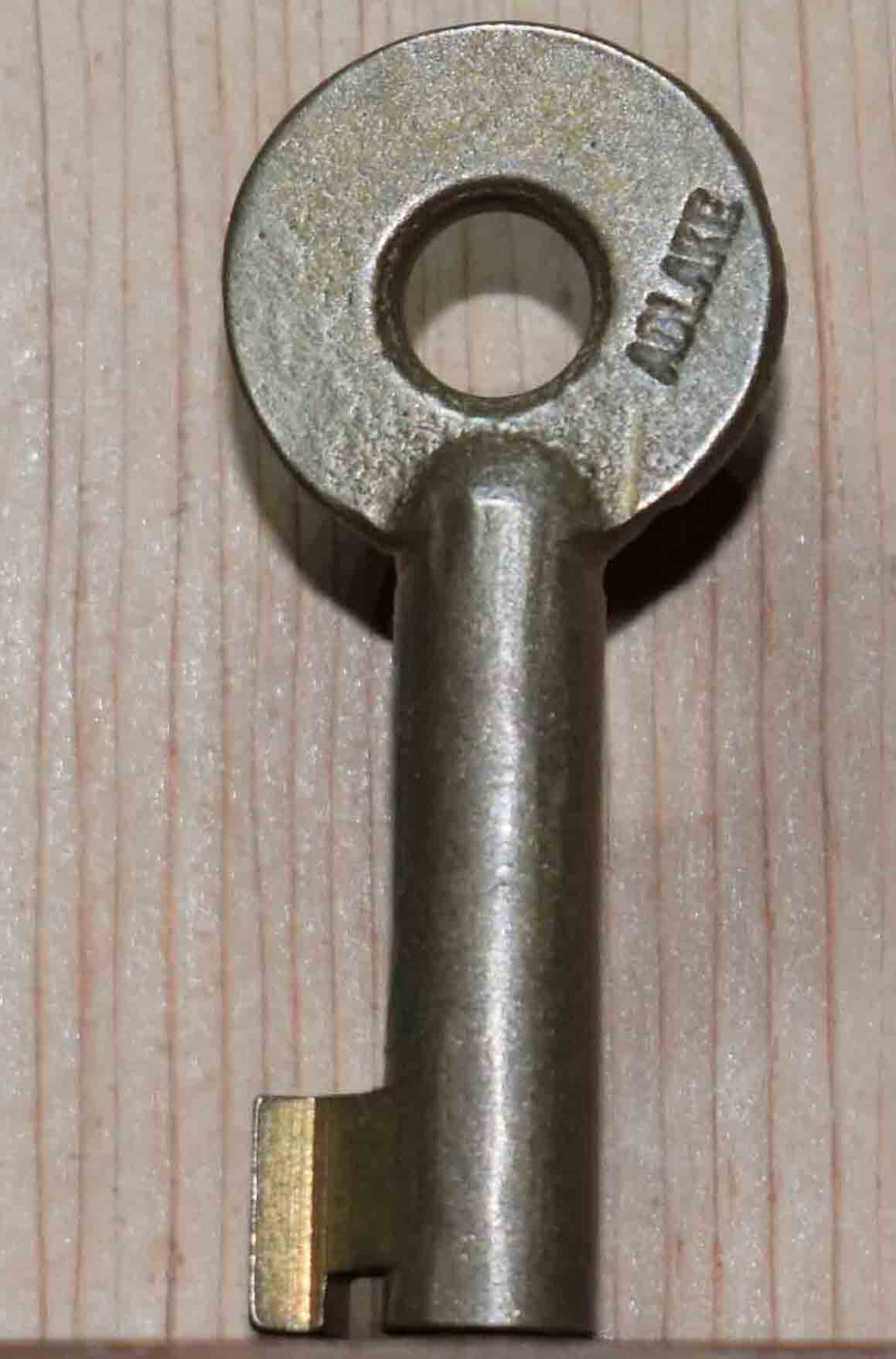

Pittsburg & Shawmut Railroad
Item: 35-P Price: $45.00
Remarks: ca. early/mid-1900s
Forged by the Adlake Co.
Nice stamp marks and patina.
History
The Pittsburg & Shawmut Railroad Company began life on July 21, 1903 as the Brookville & Mahoning Railroad, leased by the Pittsburg-Shawmut & Northern Railroad. When the PS&N declared bankruptcy in 1905, the B&M was spun off into a separate entity and was renamed in 1909 due to confusion with the Boston & Maine Railroad's initials. Like its parent, the P&S was also financially troubled in its early years. The company struggled until corporate fortunes improved with the war mobilization of the 1940s. Coal was the principle commodity for the line for its entire existence. Doodlebugs and passenger trains ran on the route in the early years but had all been eliminated by 1939.
The company acquired a ten mile section of Conrail track running from Sligo to Lawsonham in 1989 and reorganized it as the Red Bank Railroad. On December 31, 1991 the company purchased about 110 miles of "low grade secondary" track from Lawsonham to Driftwood, Pennsylvania from Conrail and organized it as the Mountain Laurel Railroad.
Click on image to view larger picture
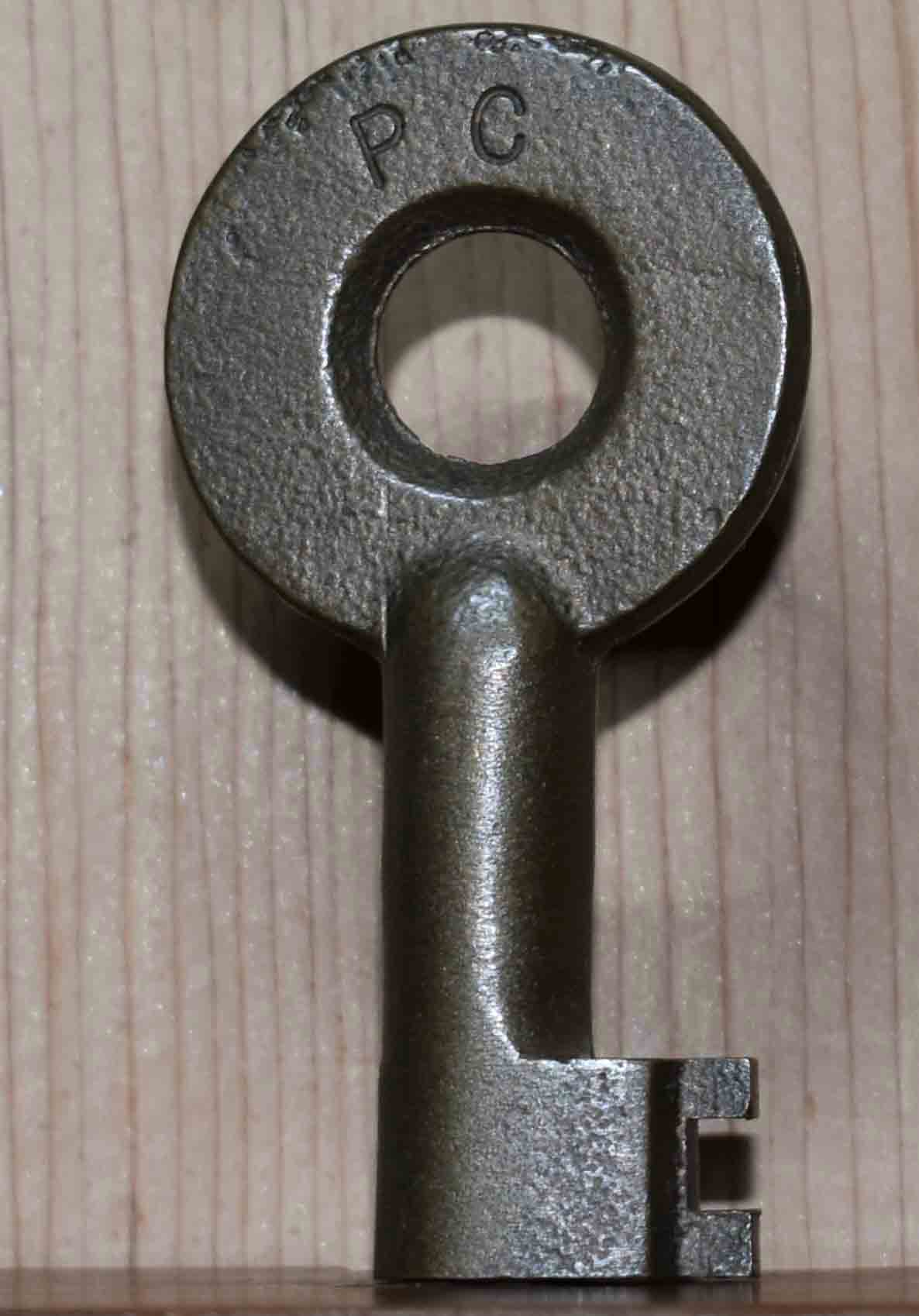


Penn Central Railroad
Item: 36-P Original Pennsy cut Price: $45.00
Remarks: operated 1968-1976
Forged by the Adlake Co.
History
The Penn Central Transportation Company, commonly abbreviated to Penn Central, was an American Class I railroad headquartered in Philadelphia, Pennsylvania, that operated from 1968 until 1976. It was created by the 1968 merger of the Pennsylvania and New York Central railroads. The New York-New Haven & Hartford Railroad was added to the merger in 1969; by 1970, the company had filed for what was, at that time, the largest bankruptcy in U.S. history.
Click on image to view larger picture

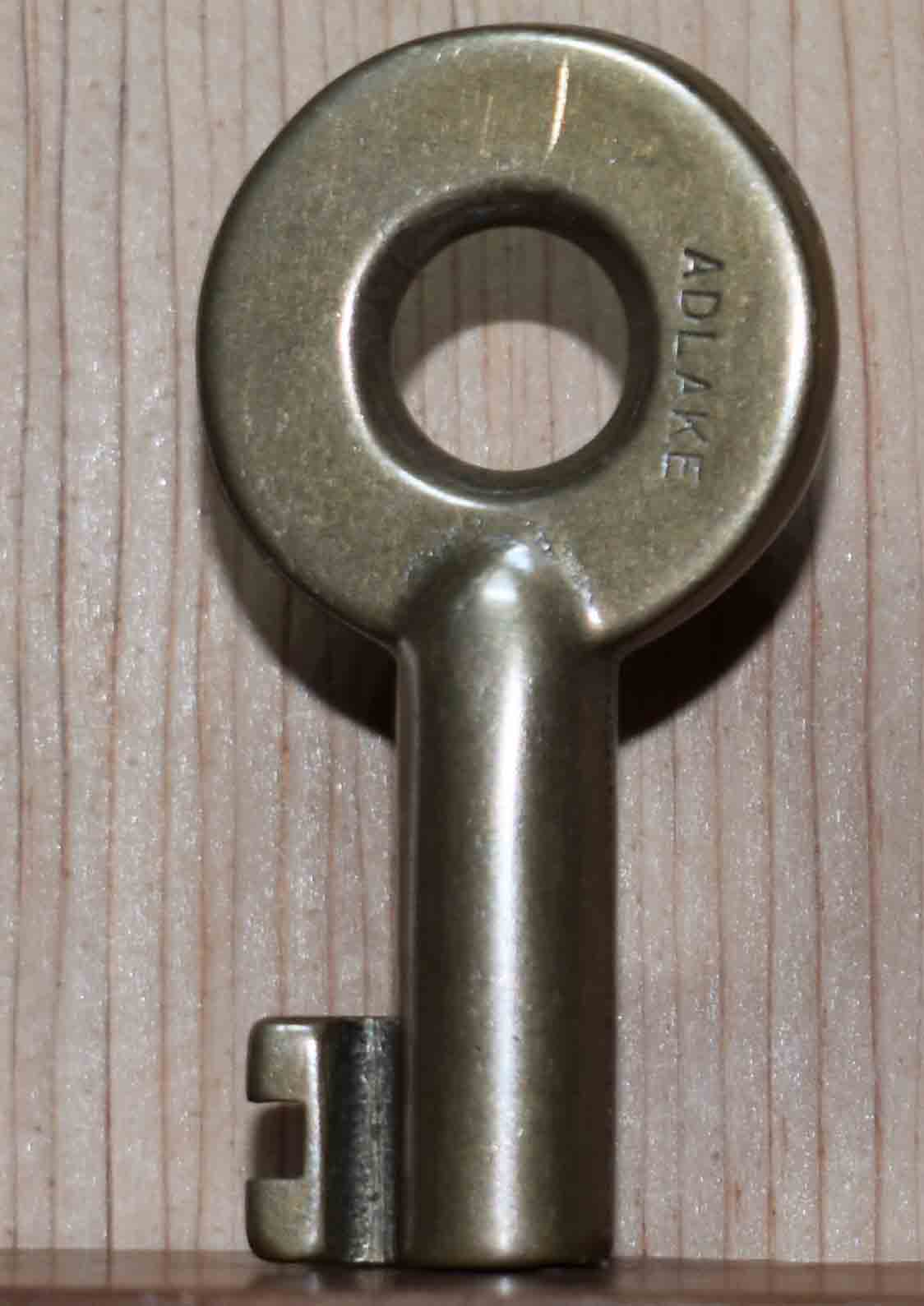

Penn Central Railroad
Item: 37-P Original Pennsy cut Price: $55.00
Remarks: operated 1968-1976
Forged by the Adlake Co.
Superb stamp marks and gold patina.
History - continued from above
The legal entity that eventually became the Penn Central Transportation Company was the former Pennsylvania Railroad, which absorbed the New York Central as part of the original 1968 merger and, at the same time, began using the Penn Central name to reflect its merger with the New York Central. The company remained headquartered in Philadelphia after its merger with the New York Central. By 1970, the company had filed for what was, at that time, the largest bankruptcy in U.S. history.
Click on image to view larger picture


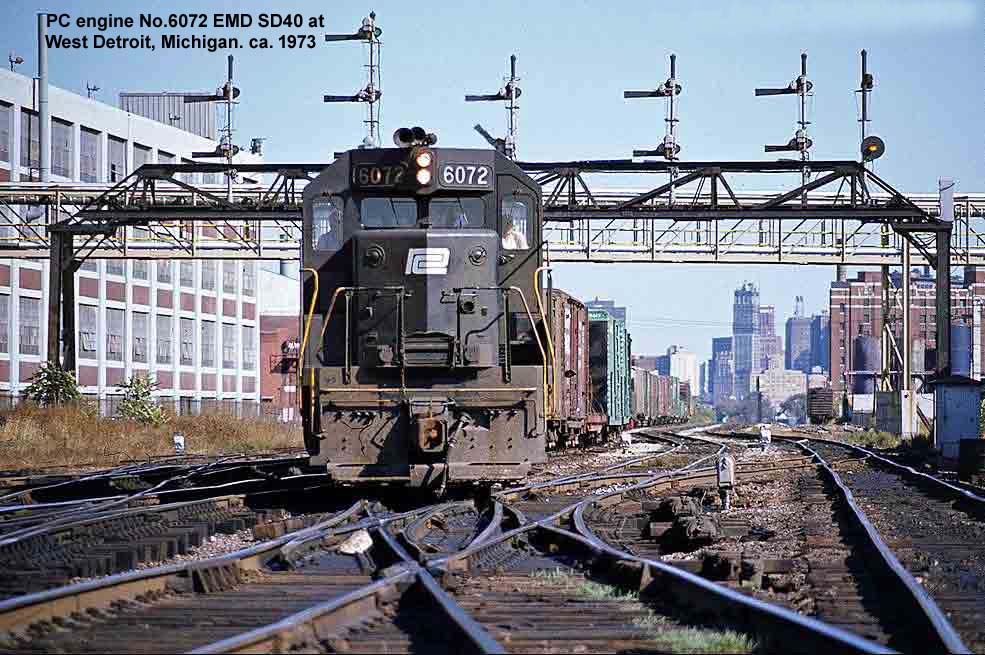
Penn Central Railroad
Item: 38-P Original Pennsy cut Price: $55.00
Remarks: Operated 1968-1976
Forged by the Adlake Co.
Superb stamp marks and gold patina.
History - continued from above
The merger (legally, an acquisition of the New York Central by the PRR) formally closed on February 1, 1968. The Pennsylvania Railroad, the nominal survivor of the merger, changed its name to Pennsylvania New York Central Transportation Company, and began using the name "Penn Central" as a trade name soon after. The former Pennsylvania Railroad shortened its name to Penn Central Company on May 8, 1968.
Click on image to view larger picture

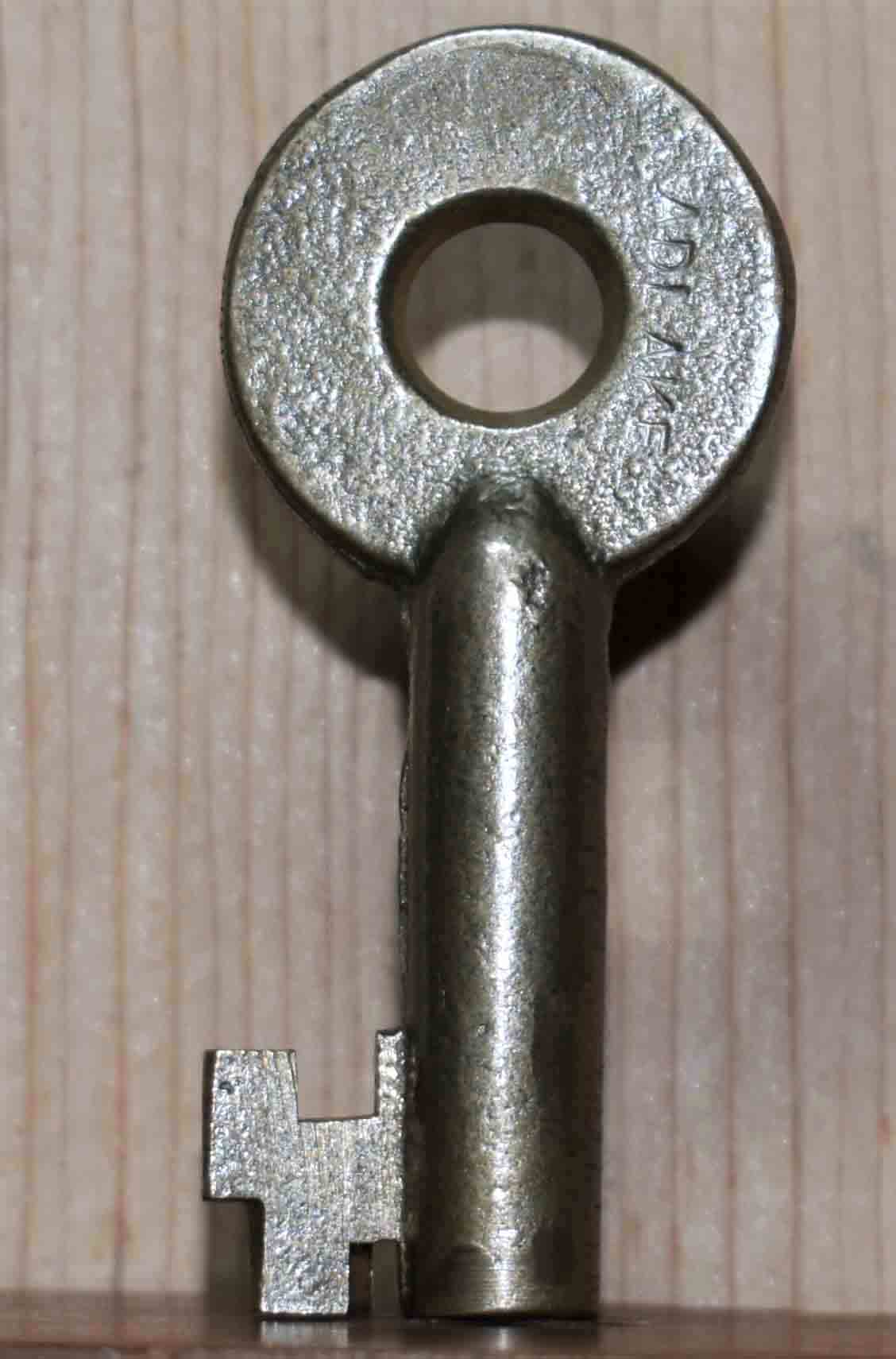
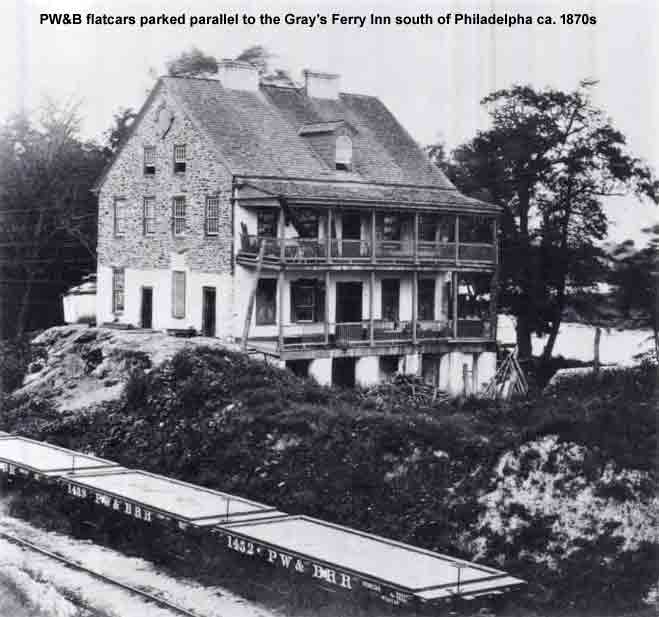
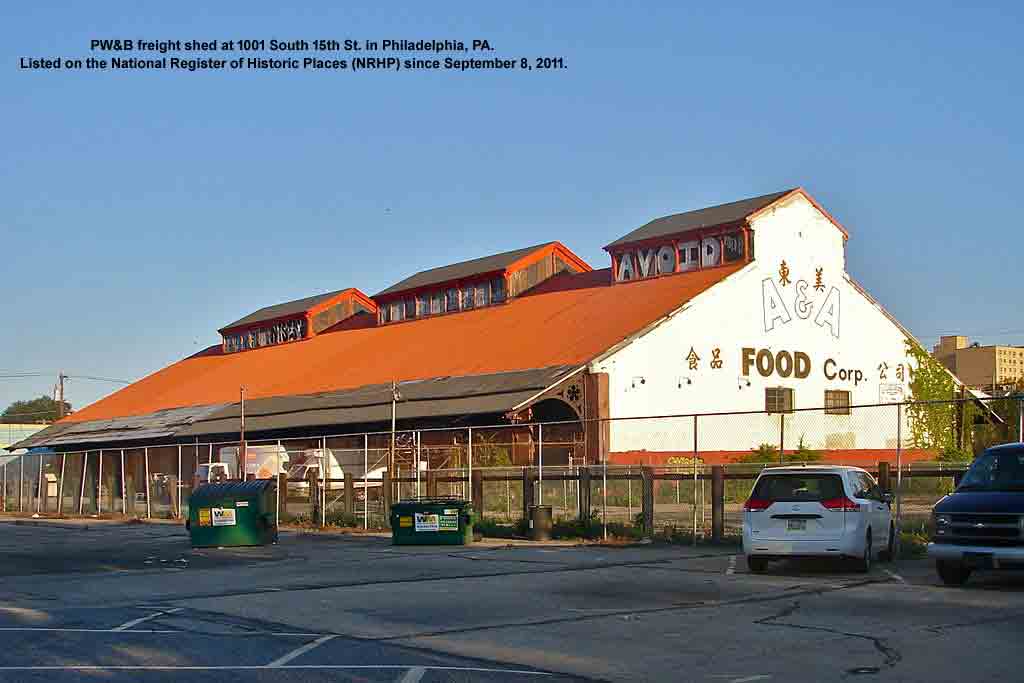
Penn Central Railroad
Remarks: operated 1968-1976
Forged by the Adlake Co.
Superb stamp marks and patina.
Click on image to view larger picture



Penn Central Railroad
Remarks: operated 1968-1976
Forged by the Adlake Co.
Same style bit as a AT&SF derail key
Cool serial number.
History - continued from above
The merger (legally, an acquisition of the New York Central by the PRR) formally closed on February 1, 1968. The Pennsylvania Railroad, the nominal survivor of the merger, changed its name to Pennsylvania New York Central Transportation Company, and began using the name "Penn Central" as a trade name soon after. The former Pennsylvania Railroad shortened its name to Penn Central Company on May 8, 1968.
Click on image to view larger picture
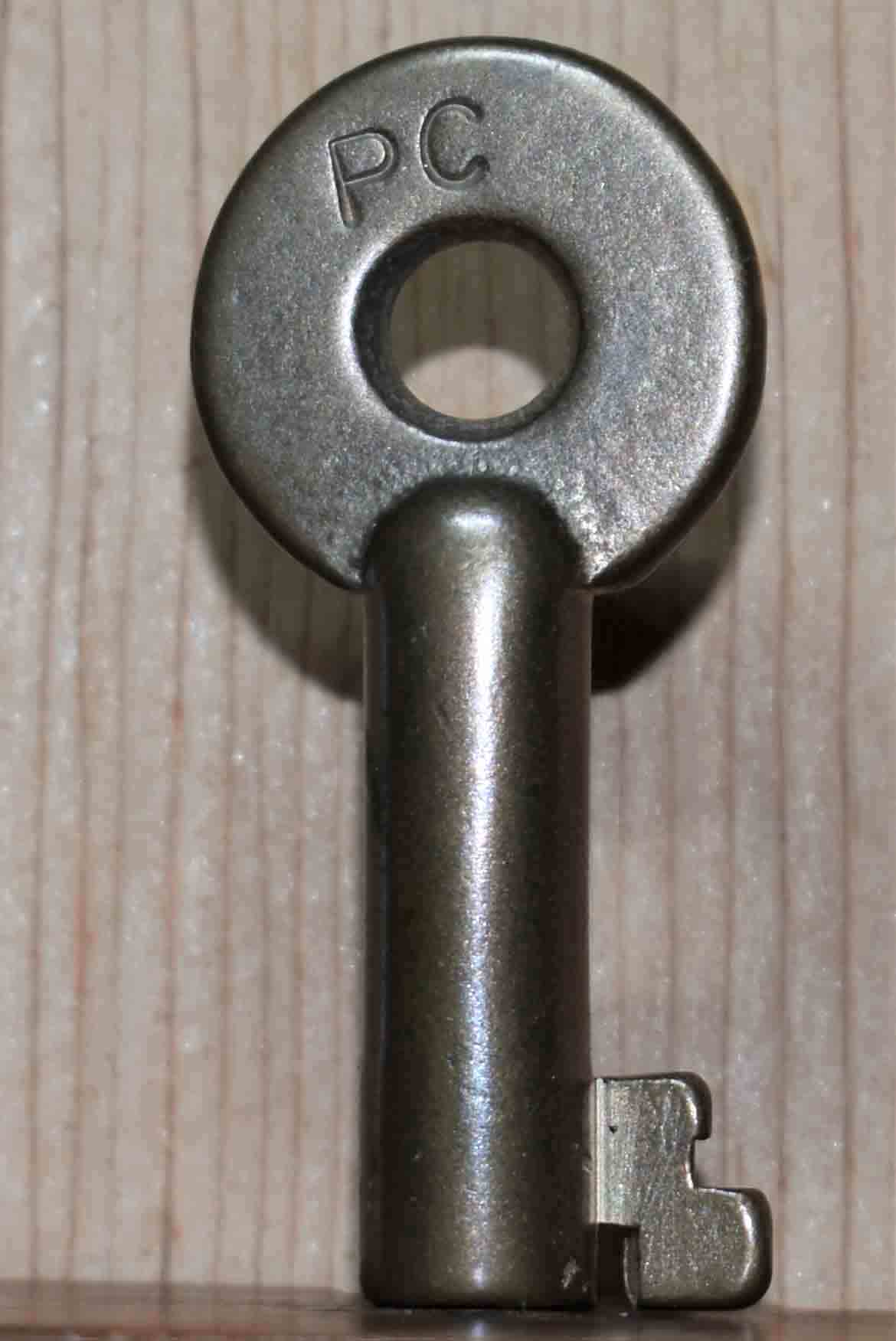


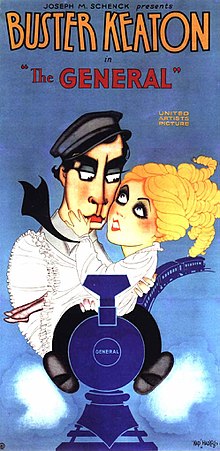

Penn Central Railroad
Remarks: operated 1968-1976
Forged by the Adlake Co.
Same style bit as a AT&SF derail key
Click on image to view larger picture
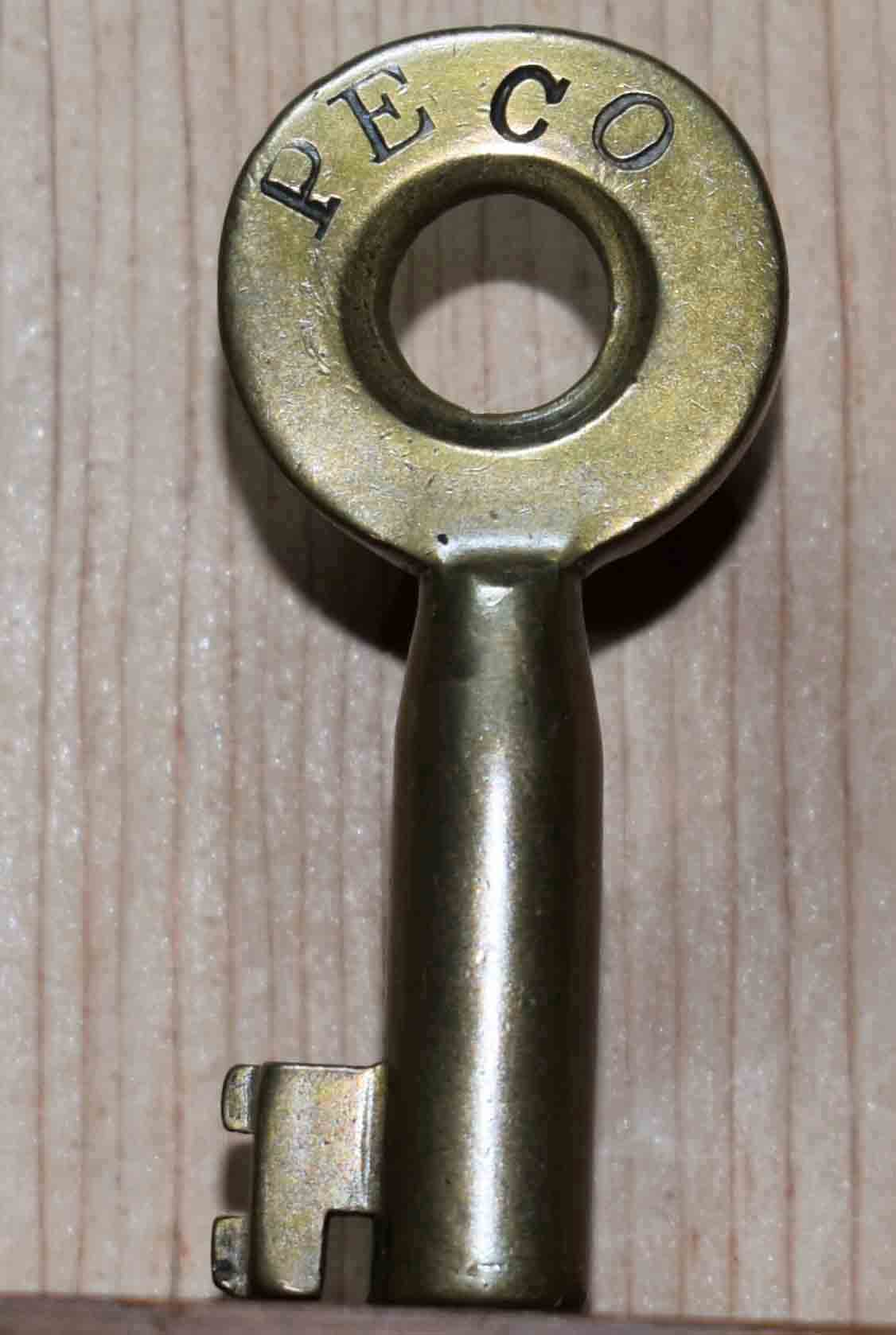
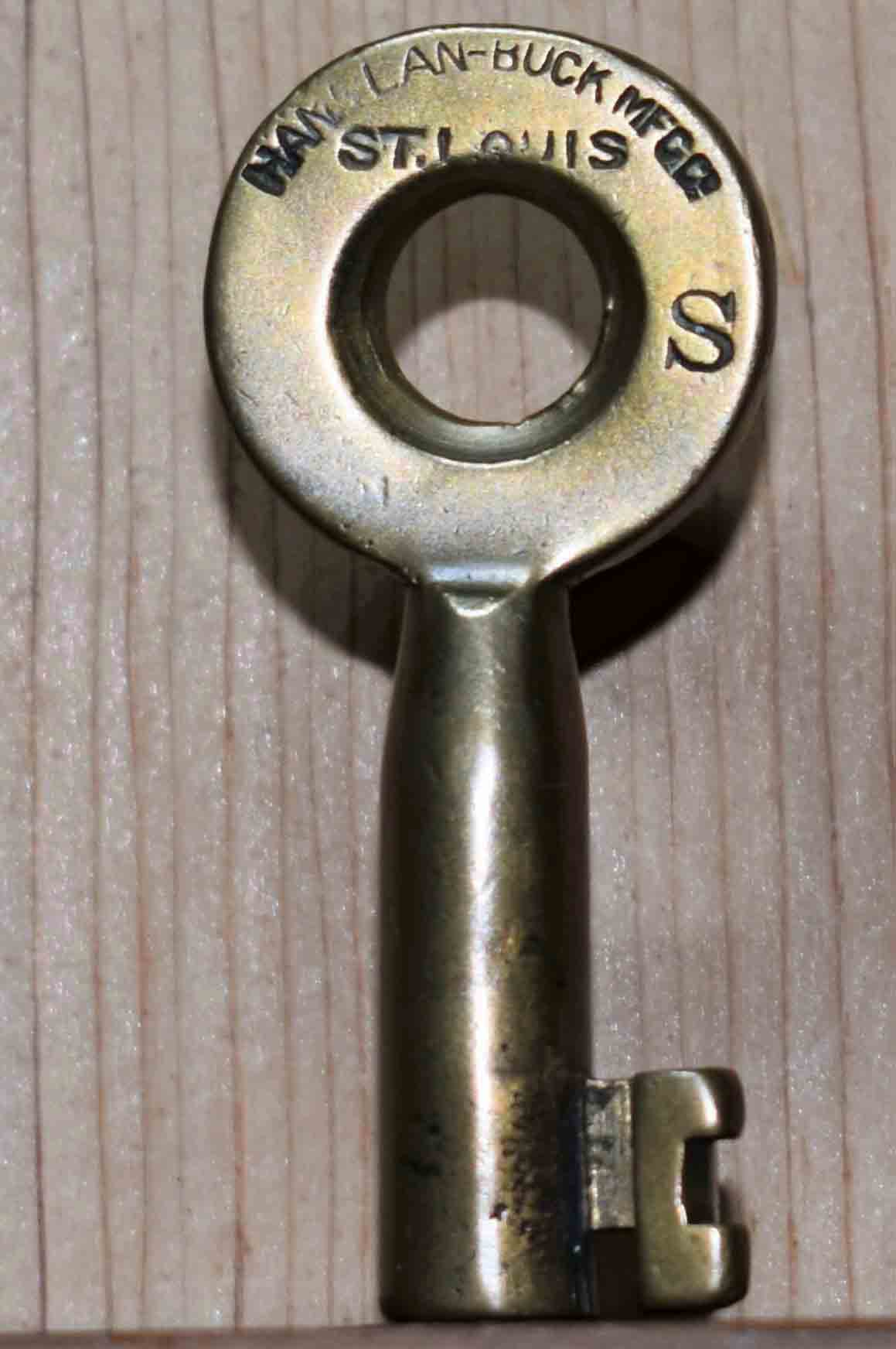

Pensacola Electric Company
Item: 43-P Florida trolley line Price: $145.00
Remarks: ca. early 1900s
Forged by the M.M. Buck Co.
Very nice elongated tapered barrel
Superb stamp marks and gold patina.
History
The streetcar system in Pensacola can be traced to Conrad Kupfrian, a German immigrant who was reportedly inspired by the horsecars he saw in St. Louis on a business trip. He formed a partnership, the Pensacola Streetcar Company, with Henry Pfeiffer and John Cosgrove. The men raised $50,000 in capital for the project and, on November 15, 1882, convinced the Pensacola City Council to pass an ordinance allowing steel track to be placed in the roadways.
An economic downturn affected the streetcar company in 1897. It was reorganized again as the Pensacola Electric Terminal Railway Company, with Captain William H. Northrup as president. During the course of it's operation, the PE had exchanged owners a few times. The PE was plagued by union strikes, segregation problems and later, the automoblie. At its peak, a total of 30 trolley cars carried four million passengers per year (1920). Partially covered tracks and barely concealed right-of way are clearly visible in various places along the former routes, including on West Gadsden Street, West DeSoto Street, and East Jackson Street.
Click on image to view larger picture
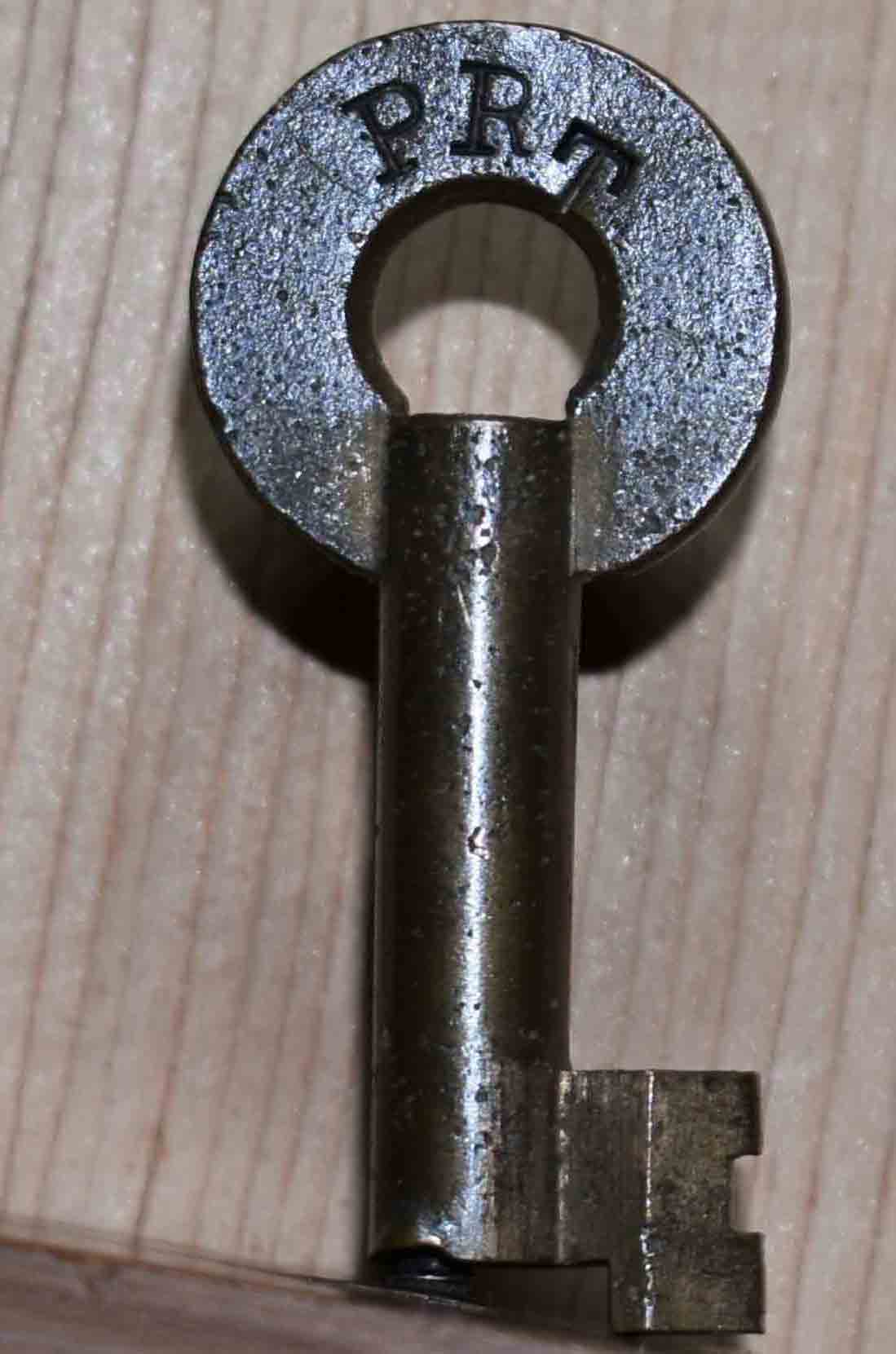

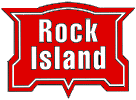

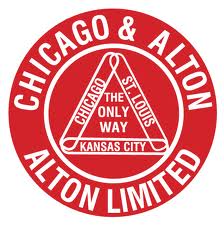
Peoria Railway Terminal
Item: 45-P Peoria short line Price: $55.00
Remarks: ca. early 1900s
Rustic serif lettering and patina.
Once owned by the Rock Island, Chicago & Alton
and Peoria & Pekin Union Railroads.
100 year centenarian!
History
The Peoria Terminal was incorporated January 18, 1926, under the general laws of Illinois, to acquire the property of the Peoria Terminal Railway Company.
Click on image to view larger picture
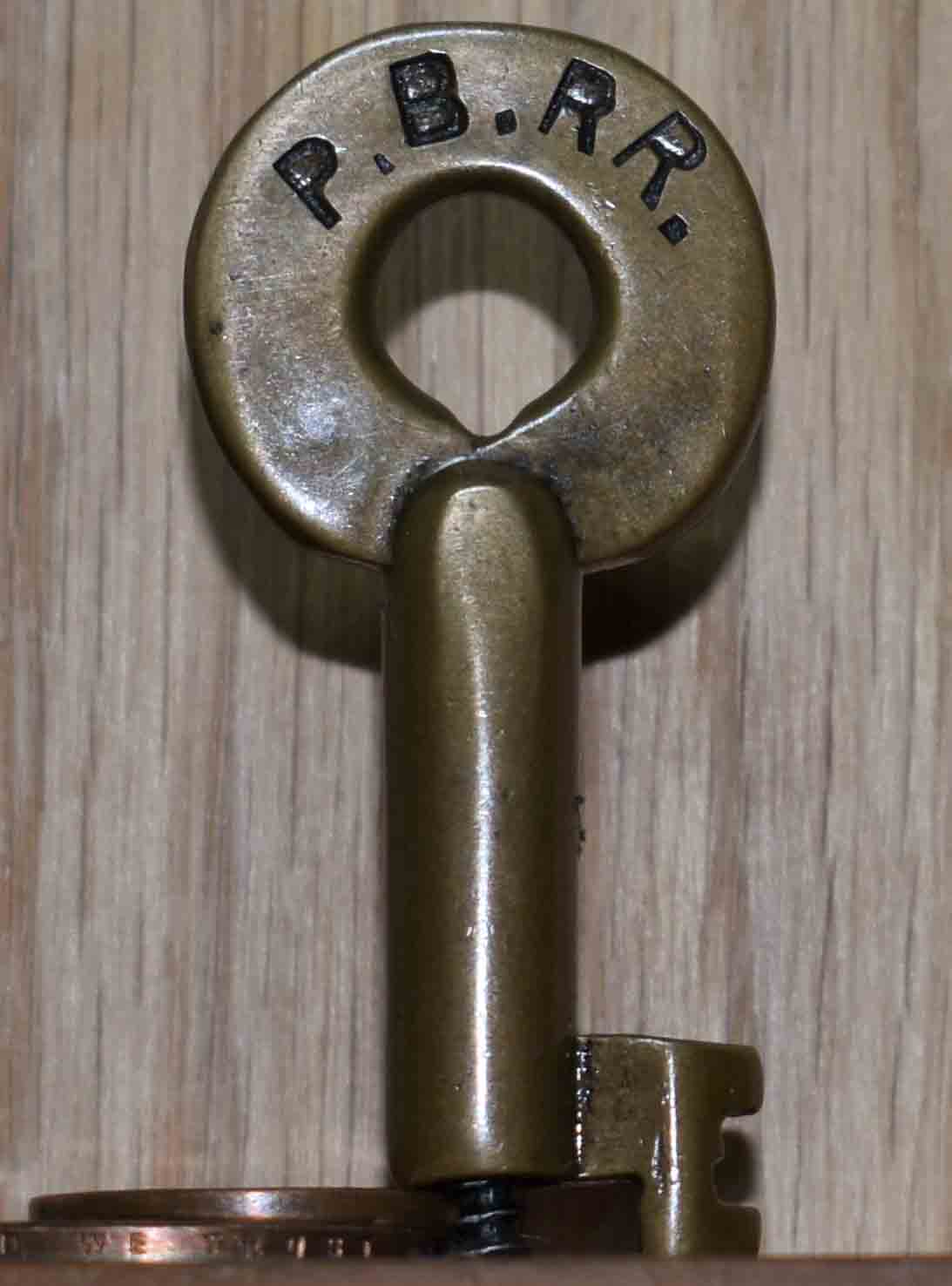

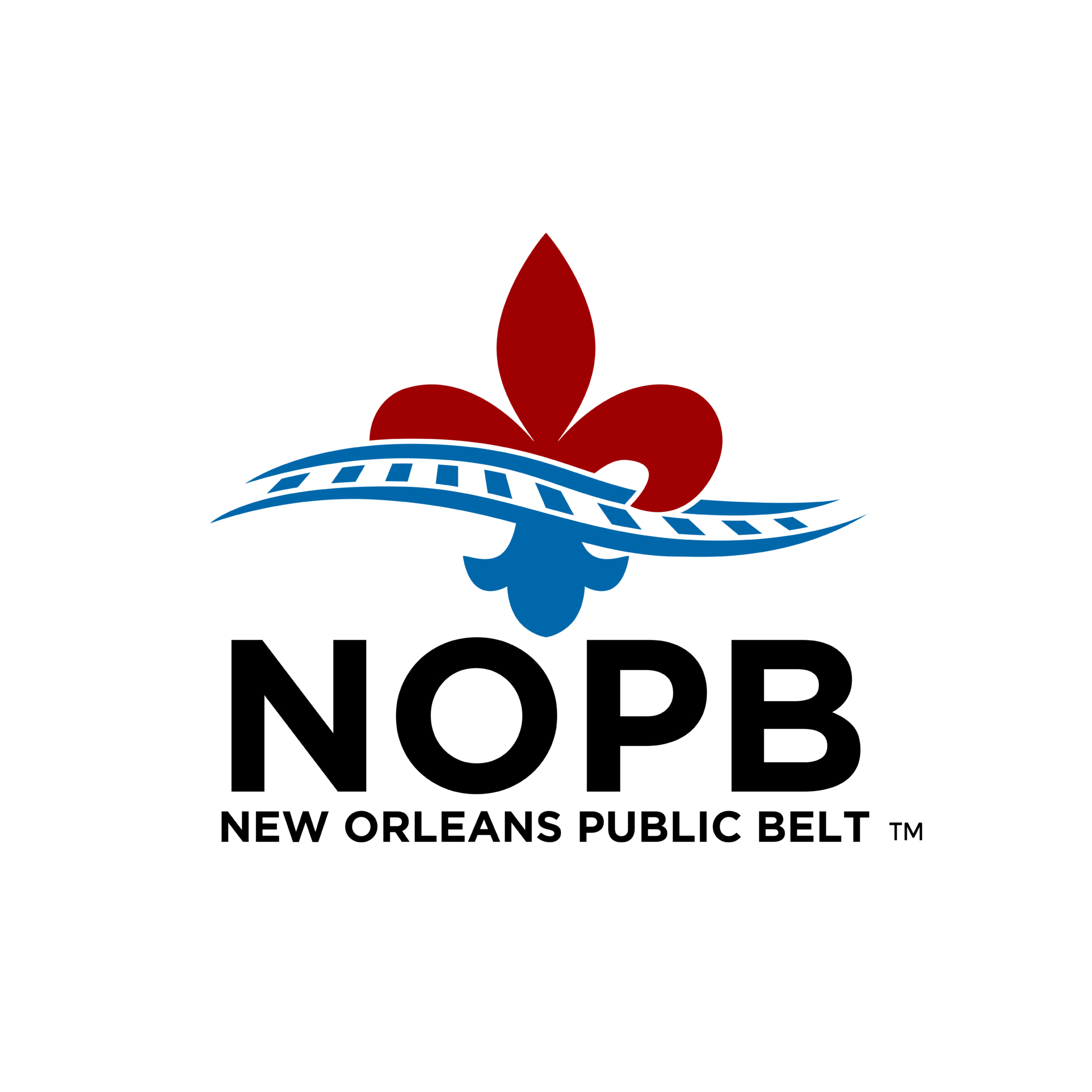
Public Belt Railroad Co. - New Orleans
Item: 48-P Price: $125.00
Remarks: ca. early 1900s
Forged by the Adams & Westlake Co.
Deep stamp marks and great gold patina.
Short barrel is same cut as key above..
100 year centenarian!
History
The New Orleans Public Belt Railroad is a Class III railroad, and a subsidiary of the Port of New Orleans. It connects with six Class I railroads serving the city, and provides switching and haulage service. It is estimated that one-third of the United States' east-west rail freight crosses the Mississippi on the Huey P. Long Bridge segment of the railroad.
The railroad is managed by the Public Belt Railroad Commission, which also owns and maintains the Huey P. Long Bridge. NOPB covers over 100 miles of track with ten locomotives. No funding is received from the city; operating and capital expenses are covered by operating revenues.
Click on image to view larger picture

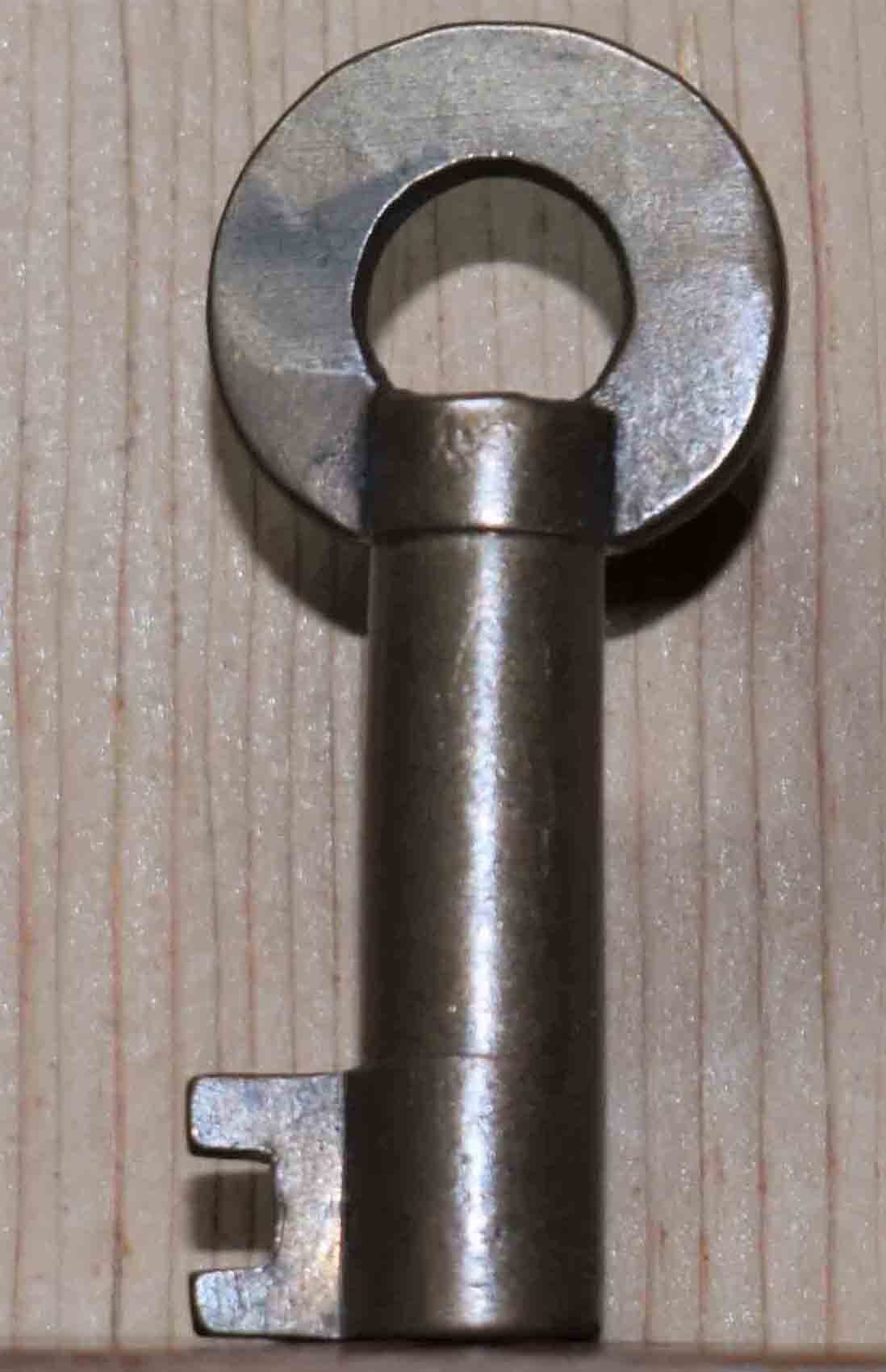

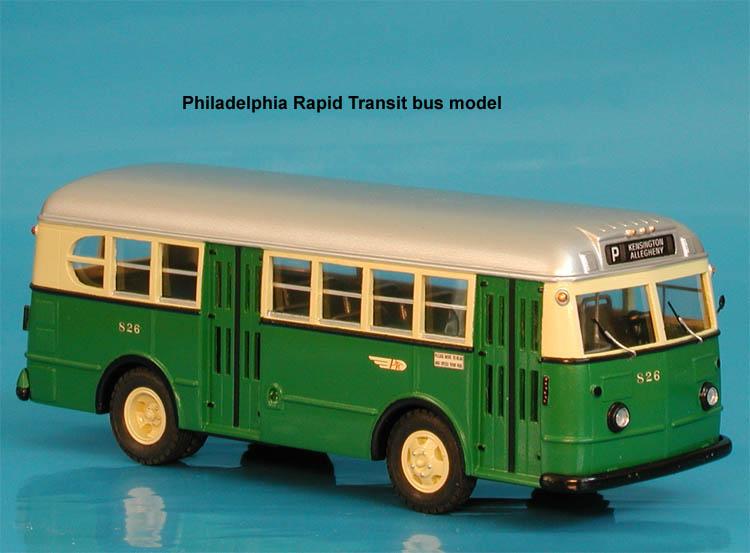
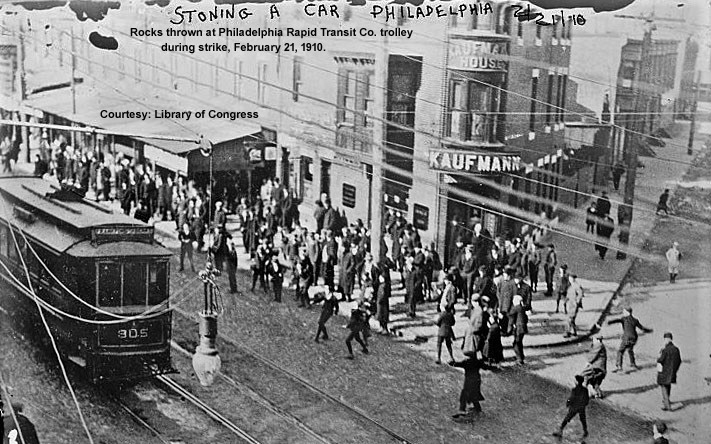
Philadelphia Rapid Transit Co
Item: 51-P Phily's 1st electric trolley line Price: $100.00
Remarks: Incorporated in 1902.
Superb stamp marks and bronze patina.
100 year centenarian!
History
At the turn of the last century, the privately formed Philadelphia Rapid Transit Company contracted with the city to build and operate the electrified Market Street Elevated ("The El"), with a component designated for West Philadelphia. In 1907, the PRT and the city negotiated a contract giving PRT management of all transit lines and their construction. This contract secured PRT's monopoly and provided the city with regulatory authority and profit-sharing in the operation of the rapid transit system.
In 1940, PRT was officially reorganized into Philadelphia Transportation Company. The old company union was long gone by the mid 1940s, and employees were organized by the Teamsters and the Transit Workers Union. Control of the city's transit lines passed to National City Lines in the 1950s, which was then consolodated into SEPTA in 1968.
Click on image to view larger picture



Pittsburgh & Lake Erie Railroad
Item: 55-P Price: $85.00
Remarks: ca. 1904-21
Forged by the S.R. Slaymaker Co.
Superb stamp marks and dark patina.
Given the moniker, "Little Giant."
100 year+ centenarian!
History
The Pittsburgh and Lake Erie Railroad was formed on May 11, 1875. Company HQ were located in Pittsburgh, Pennsylvania. The line connected Pittsburgh in the east with Youngstown, Ohio at nearby Haselton, Ohio in the west and Connellsville, Pennsylvania to the east.
Click on image to view larger picture
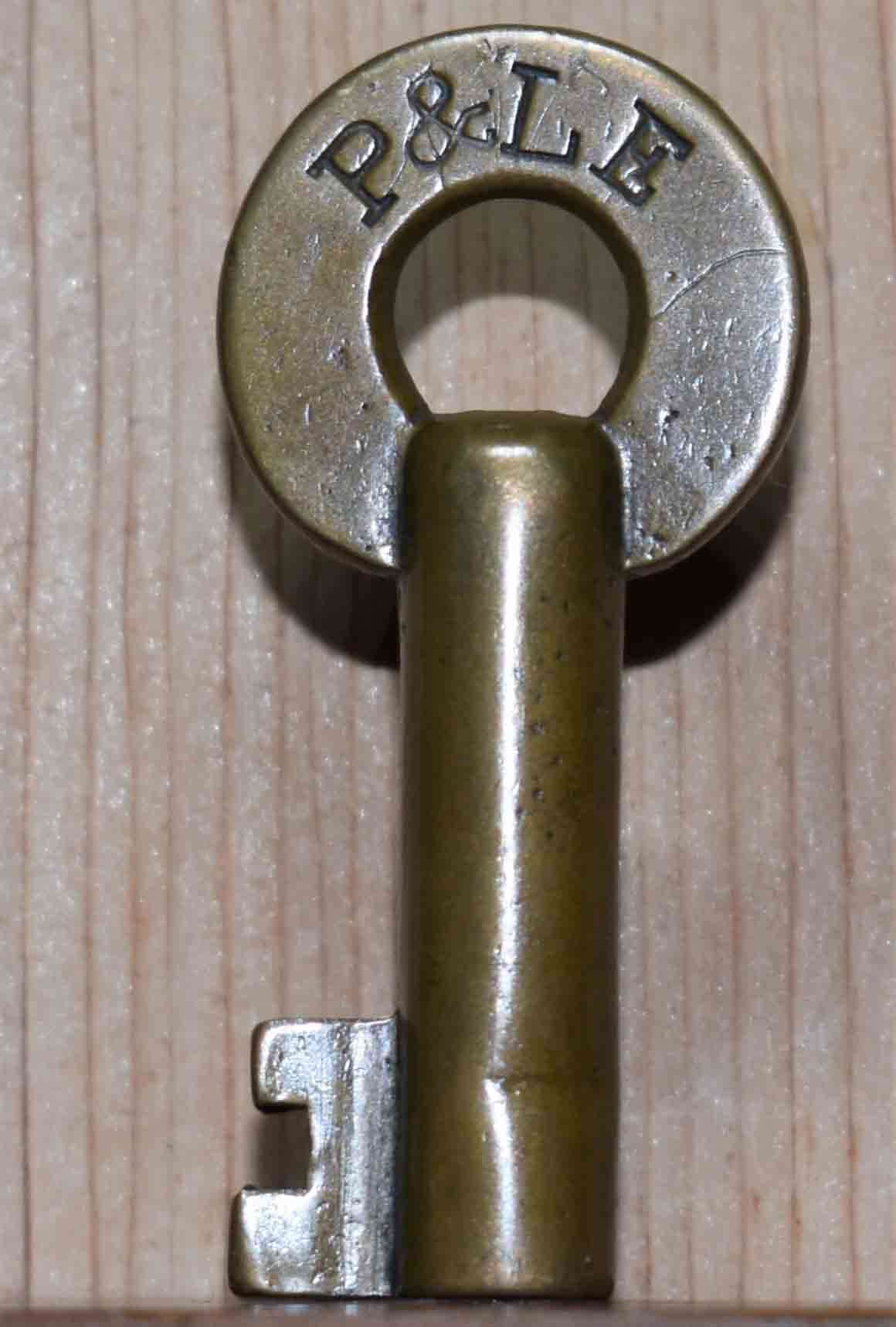



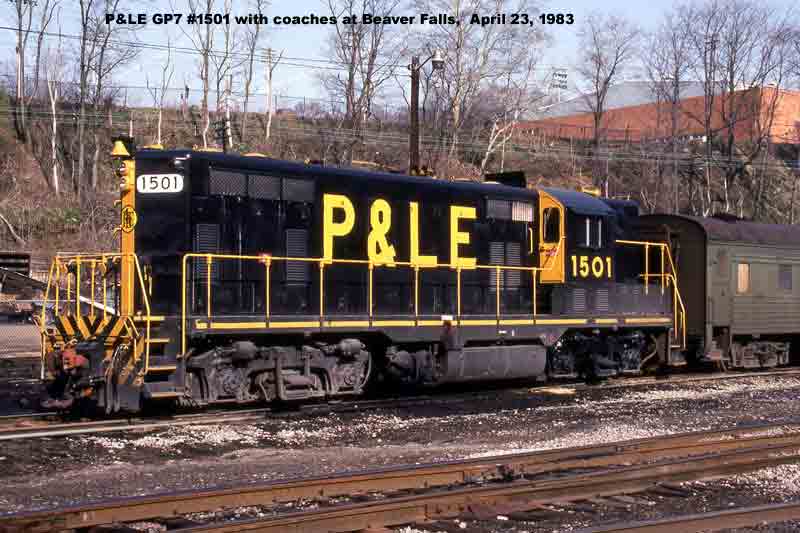
Pittsburgh & Lake Erie Railroad
Item: 56-P Price: $85.00
Remarks: ca. 1904-21
Forged by the S.R. Slaymaker Co.
Superb stamp marks and caramel patina.
100 year+ centenarian!
History - continued from above
The P&LE served the steel mills of the greater Pittsburgh area, which consumed and shipped vast amounts of materials. It was a specialized railroad deriving much of its revenue from coal, coke, iron ore, limestone, and steel. The eventual closure of the steel mills led to the end of the P&LE as an independent line in 1992.
Click on image to view larger picture
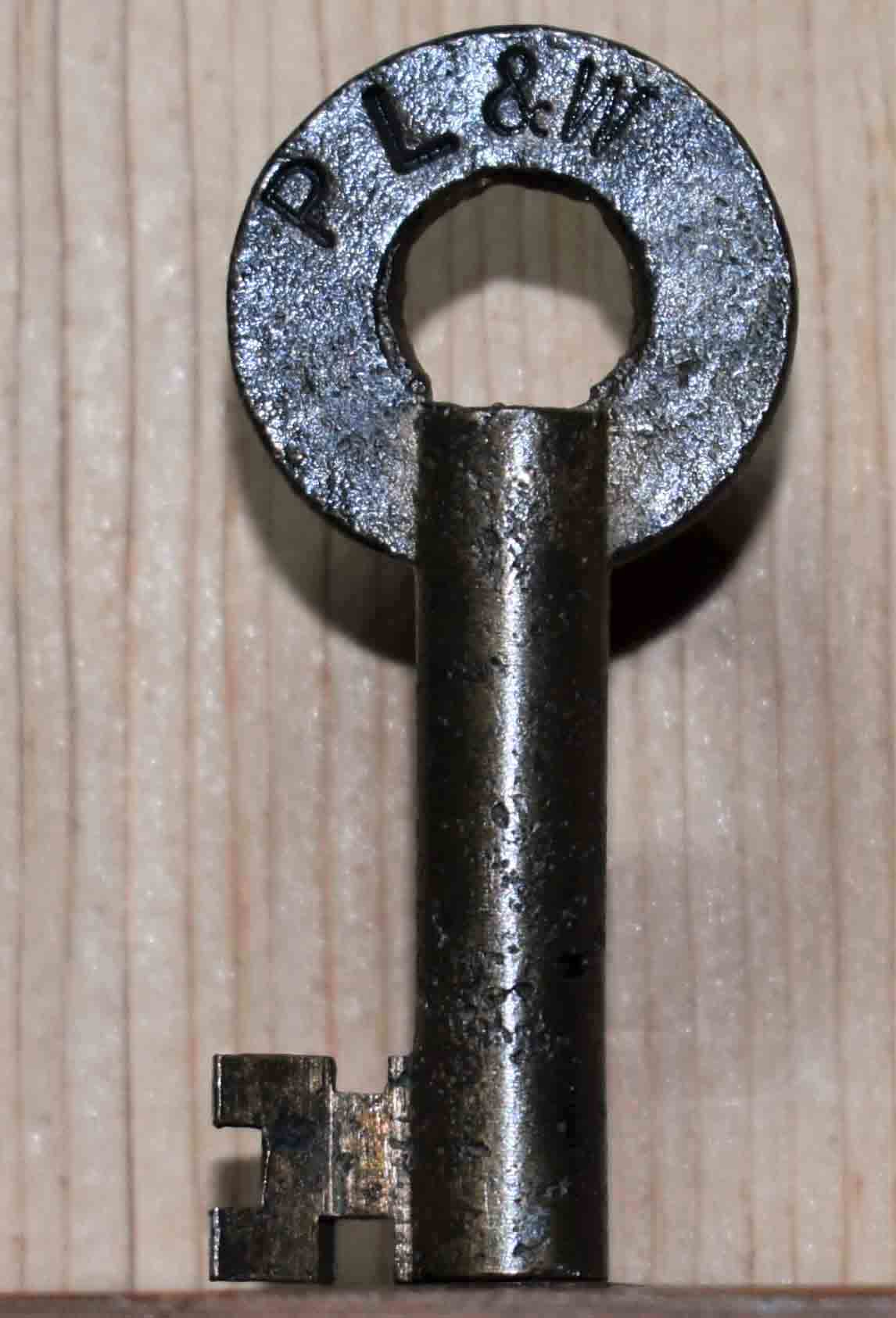
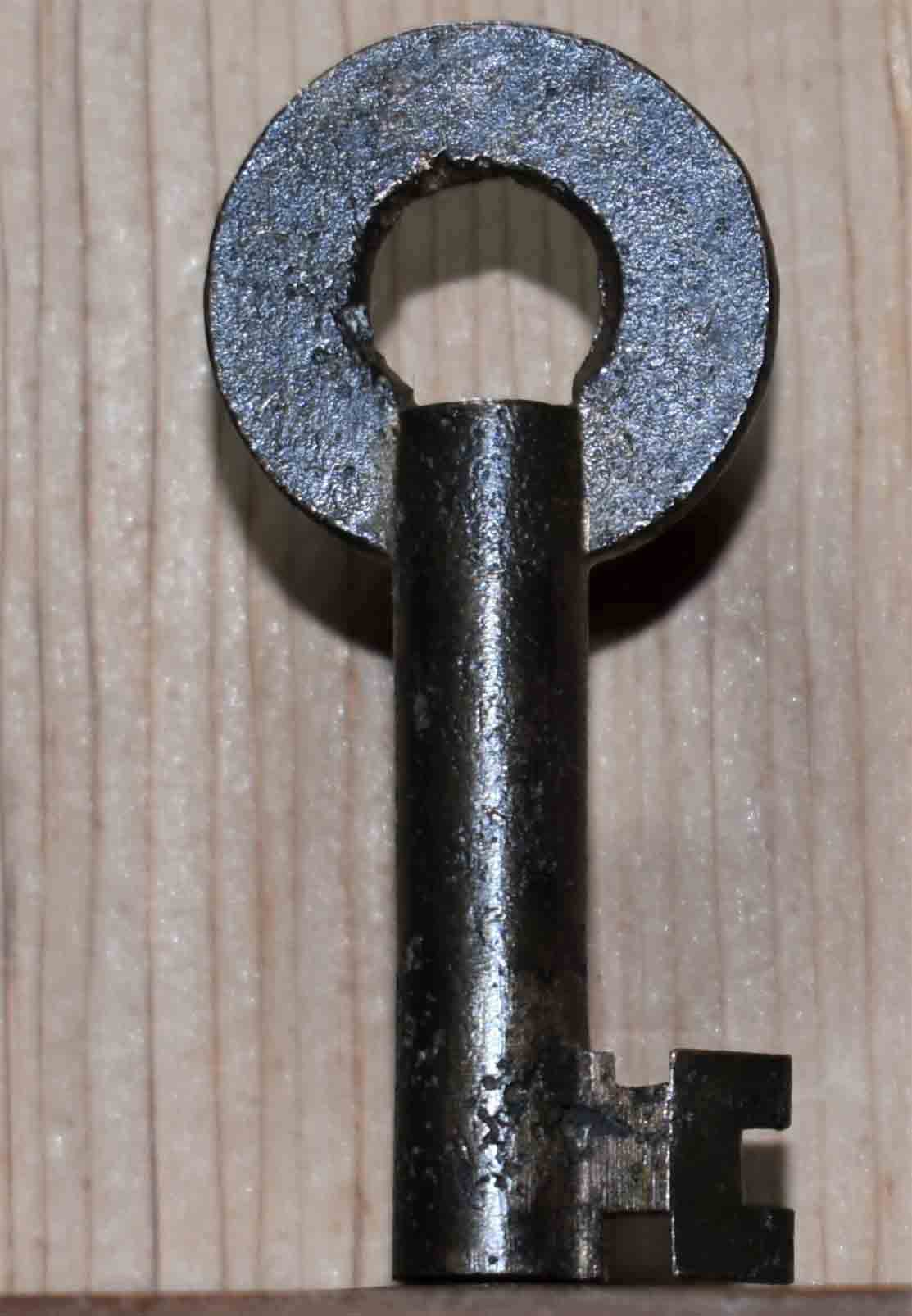


Pittsburgh, Lisbon & Western Railroad
Item: 58-P Price: $75.00
Remarks: ca. 1904-21
Nice stamp marks and dark patina.
History
The Pittsburgh-Lisbon & Western Railroad was a short line that worked under the Youngstown & Southern Railroad until January 1, 1945 when it was absorbed into the smaller line.
Click on image to view larger picture

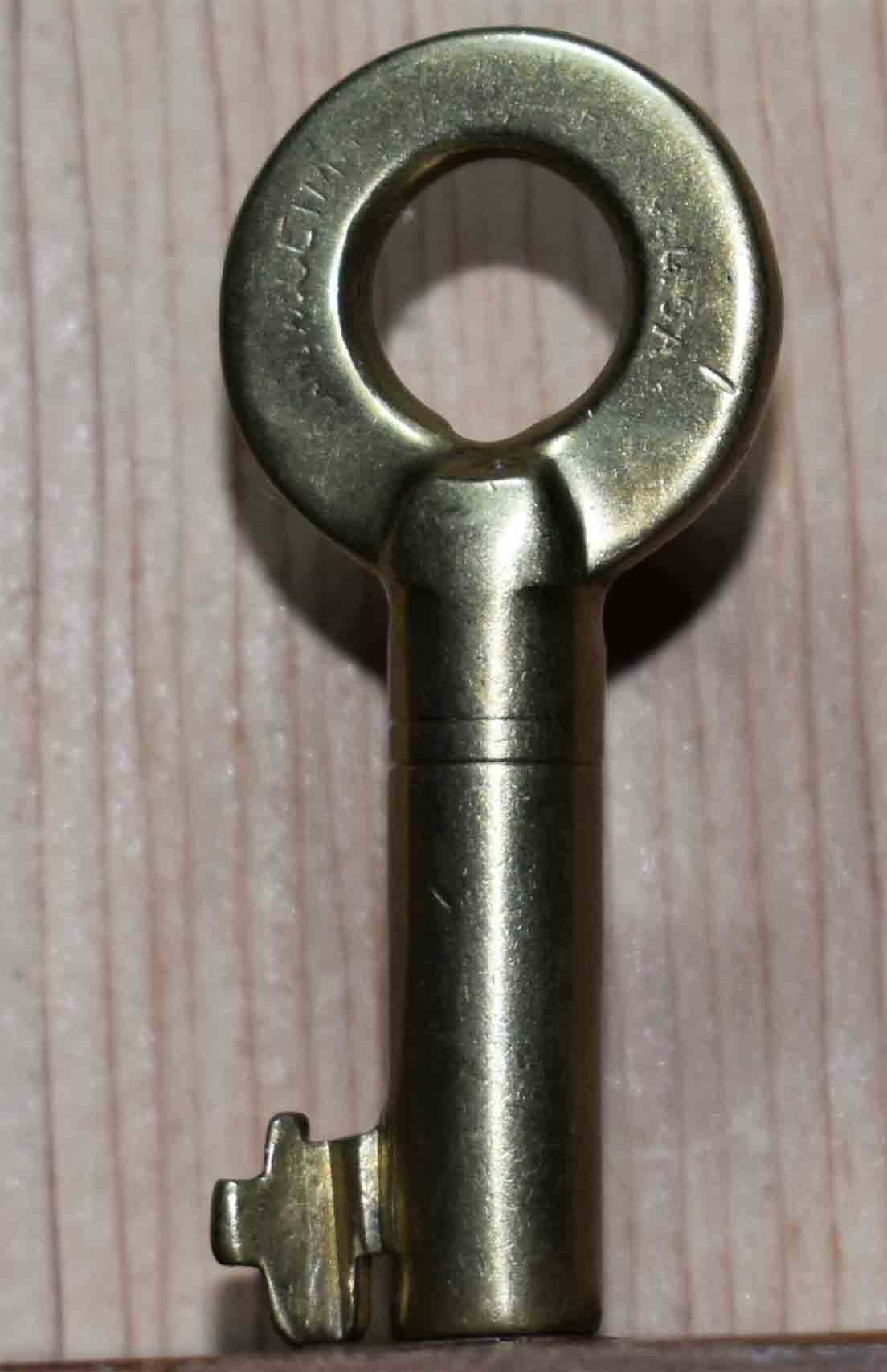

Pittsburg,-Shawmut & Northern Railroad
Item: 60-P Price: $125.00 $115.00
Remarks: ca. turn of the century.
Forged by the J.W. Climax Co.
Superb serif stamp marks and gold patina.
Handsome double accent barrel rings.
History
The Pittsburg, Shawmut & Northern Railroad began life on August 2, 1899, as the merger of five small railroads in New York and Pennsylvania. 60 miles (97 km) of what ultimately became the PS&N were originally 3 ft (914 mm) narrow gauge lines, though by the time of the PS&N's incorporation only 18 miles (29 km) remained as narrow gauge. At the time of its incorporation the PS&N operated four physically-disconnected divisions. The expense of connecting the divisions and upgrading the physical plant to handle through coal trains, coupled with the failure of the PS&N's principal bond underwriter, forced the company to declare bankruptcy in 1905.
Click on image to view larger picture


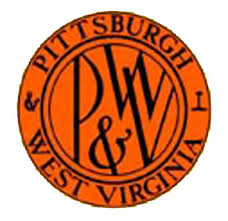
Pittsburgh & West Virginia Railway
Item: 62-P Price: $160.00 $145.00
Remarks: ca. late 1800s
Forged by the Adams & Westlake Co.
Early A&W hex stamp = 1st series.
Excellent stamp marks and two-tone patina.
125 year+ centenarian!.
History
The Pittsburgh and West Virginia Railway was a railroad in the Pittsburgh, Pennsylvania and Wheeling, West Virginia, areas. Originally built as the Wabash Pittsburgh Terminal Railway, a Pittsburgh extension of George J. Gould's Wabash Railroad, the venture entered receivership in 1908 and the line was cut loose.
The Pittsburgh and West Virginia Railway was another western Pennsylvania/northern Ohio system serving Pittsburgh's once prolific steel industry. Ironically, the P&WV was a relative latecomer to the industry; much of its network was not constructed until after 1900 and the road only truly came of age during the 1930s. As a result it moved considerable coal, coke, and iron ore. However, the railroad is perhaps best remembered for its status as a bridge line and member of the famous "Alphabet Route."
Click on image to view larger picture


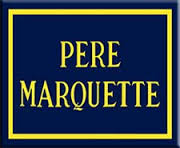
Pere Marquette Railroad
Item: 65-P Price: $85.00
Remarks: ca. early 1900s
Forged by the Adams & Westlake Co.
Very nice pocket worn lettering
Superb dark patina.
100 year+ centenarian!
History
The Pere Marquette Railroad was incorporated on November 1, 1899 in anticipation of a merger of three Michigan-based railroad companies that had been agreed upon by all parties. It began operations on January 1, 1900, absorbing the following companies: Flint & Pere Marquette Railroad (F&PM) Detroit, Grand Rapids & Western Railroad (DGR&W)
Chicago & West Michigan Railway (C&WM).
Click on image to view larger picture



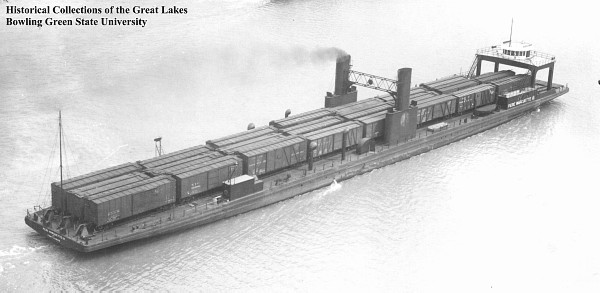
Pere Marquette Railroad
Item: 66-P Price: $85.00
Remarks: ca. early 1900s
Forged by the Adams & Westlake Co.
Nice pocket worn lettering and gold patina.
100 year+ centenarian!
This key stamped "RR" + key below stamped "RY" = nice set.
Click on image to view larger picture



Pere Marquette Railway
Item: 67-P Price: $125.00
Remarks: ca. 1904-21
Forged by the S.R. Slaymaker Co.
Excellent stamp marks and caramel patina. Key listed in
"Don Stewart's R.R. Switch Keys & Padlocks."
100 year+ centenarian!
This key stamped "RY" + keys above stamped "RR" = nice set.
Rarer of the two Pere Marquette switch keys.
History - continued from above
The company was reincorporated on March 12, 1917 as the Pere Marquette Railway. In the 1920s the Pere Marquette came under the control of Cleveland financiers Oris and Mantis Van Sweringen. These brothers also controlled the New York, Chicago & St. Louis Railroad (Nickel Plate), the Erie Railroad and the Chesapeake & Ohio Railway, and planned to merge the four companies. However, the ICC did not approve the merger and the Van Sweringens eventually sold their interest in the Pere Marquette to the C&O, with which it formally merged on June 6, 1947. The C&O has since become part of CSX Transportation.
Click on image to view larger picture

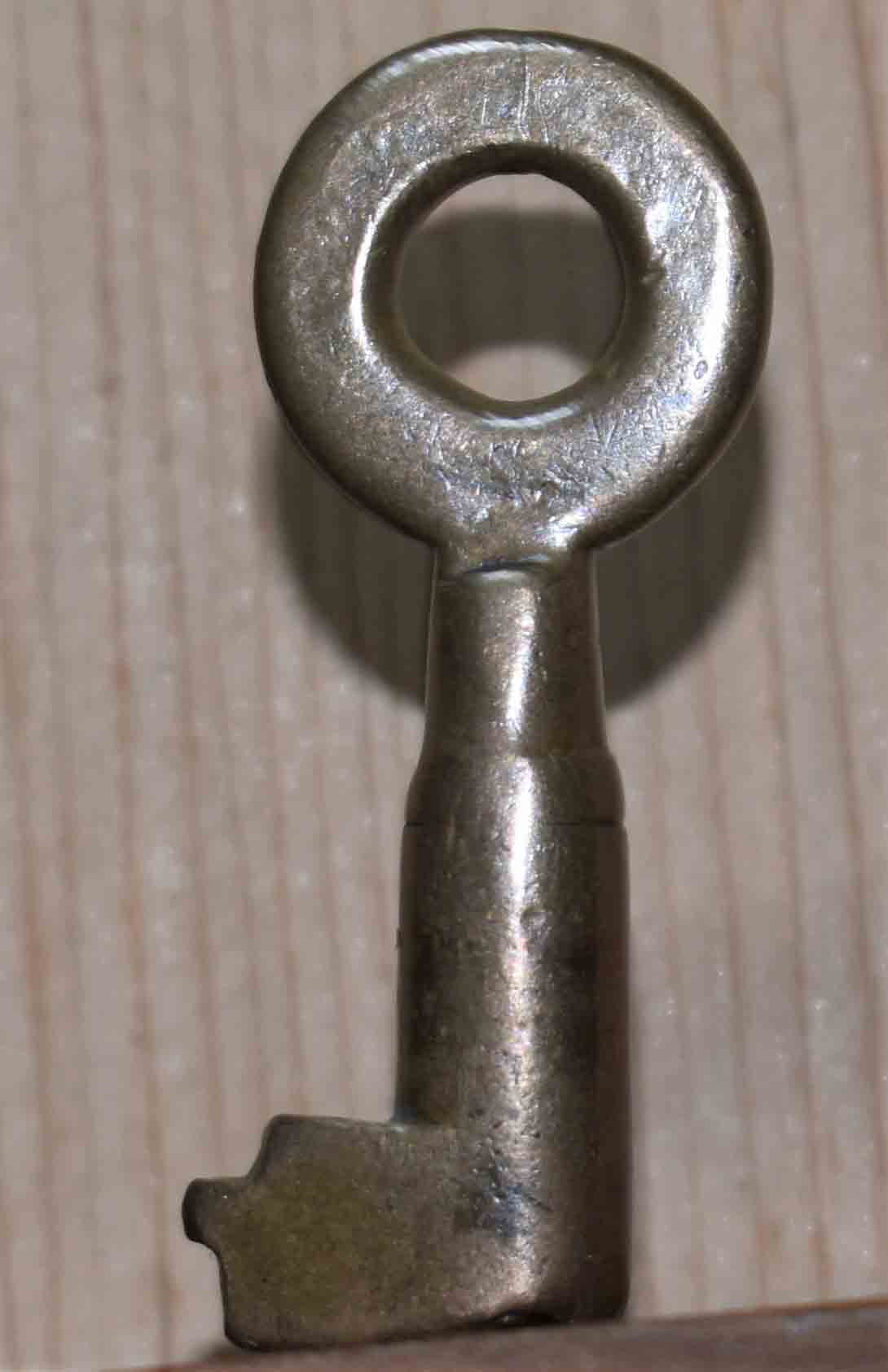



Pomeroy & Newark Railroad
Item: 69-P Price: $225.00 $195.00
Remarks: ca. late 1800s
Superb stamp marks and gold patina.
Pennsy predecessor and a 125 year+ centenarian beauty!
History
The Pomeroy & Newark Railroad was a predecessor of the Pennsylvania Railroad in the U.S. states of Delaware and Pennsylvania. It connected Pomeroy, Pennsylvania to Newark, Delaware, and has mostly been abandoned.
The Pomeroy & Newark Railroad was the final step in a series of consolidations and a foreclosure. The earliest predecessors were the Delaware and Pennsylvania Railroad, incorporated February 1857 in Delaware, and the Pennsylvania and Delaware Railroad, incorporated August 1868 in Pennsylvania as the Doe Run and White Clay Creek Railroad, and renamed August 1870. The two companies completed a line from Pomeroy, on the Pennsylvania Railroad's Main Line, south to Newark and southeast to Delaware City on the Delaware Bay, in about 1873, and merged in May of that year to form the Pennsylvania and Delaware Railway.
This company's property was sold at foreclosure in August 1879 to two new companies, the Pomeroy and State Line Railroad (incorporated February 1880 in Pennsylvania) and the Newark and Delaware City Railroad (incorporated April 1880 in Delaware). After the former sold the line southeast of Newark to the Philadelphia, Wilmington and Baltimore Railroad (PW&B), which it crossed at Newark, in 1881, those two companies merged in December as the Pomeroy and Newark Railroad. It became part of the Pennsylvania Railroad system, and in December 1917 the line was sold to the Philadelphia, Baltimore and Washington Railroad, Pennsylvania subsidiary and successor to the PW&B.
Click on image to view larger picture

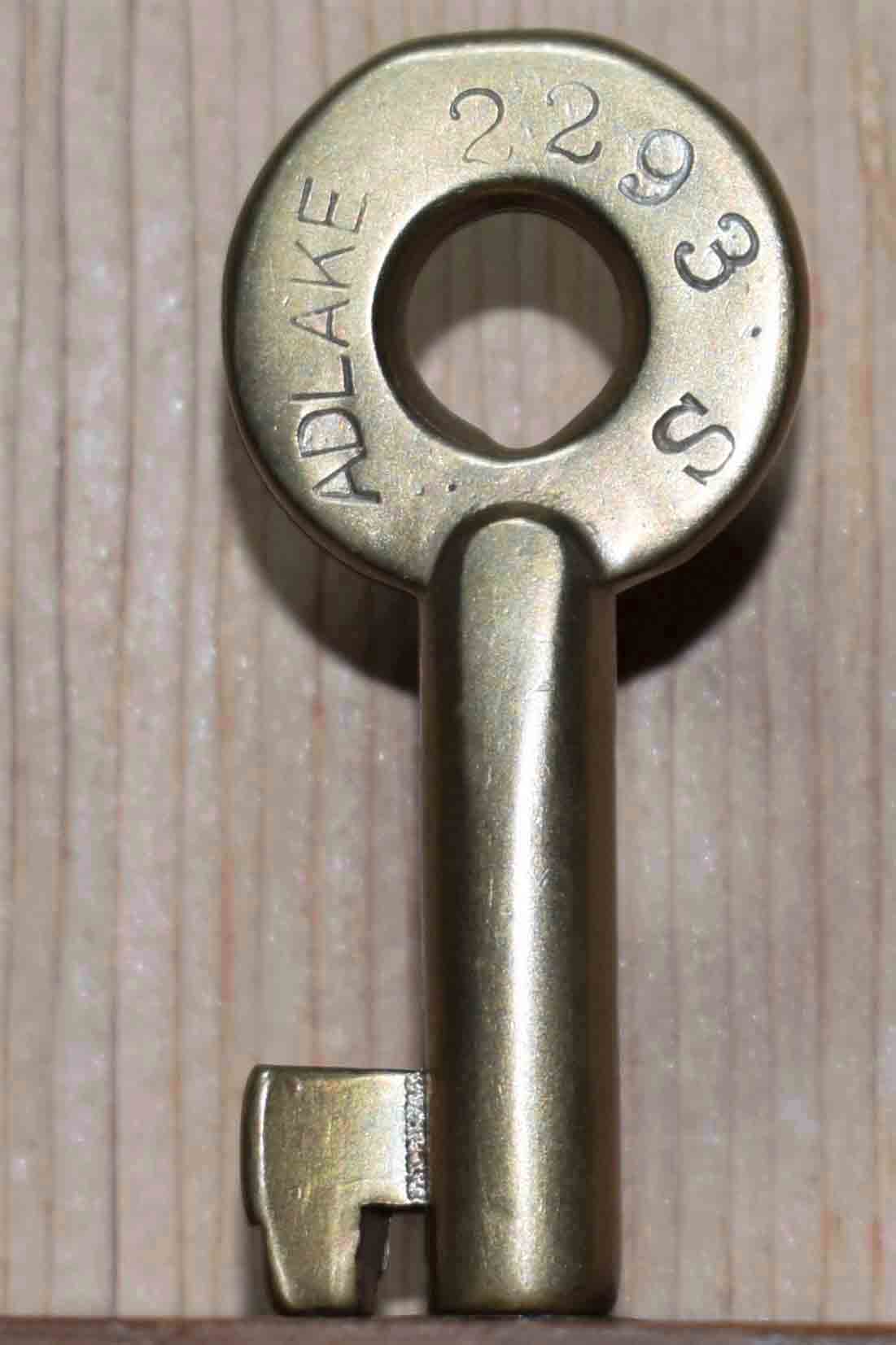

Peoria & Pekin Union Railroad
Item: 71-P Price: $75.00
Remarks: ca. mid-1900s
Forged by the Adlake Co.
Nice pocket worn lettering and bright
gold patina.This key stamped "RR" + key
below stamped "RY" = nice set.
History
The Peoria & Pekin Union Railway (PPU) is a switching and terminal railroad in Illinois that began operating in 1881 and was leased to the Tazewell & Peoria Railroad in 2004. Its main yard and roundhouse are in East Peoria, Illinois, and it owns track on both sides of the Illinois River. The company also owns a rail bridge over the river.
Click on image to view larger picture


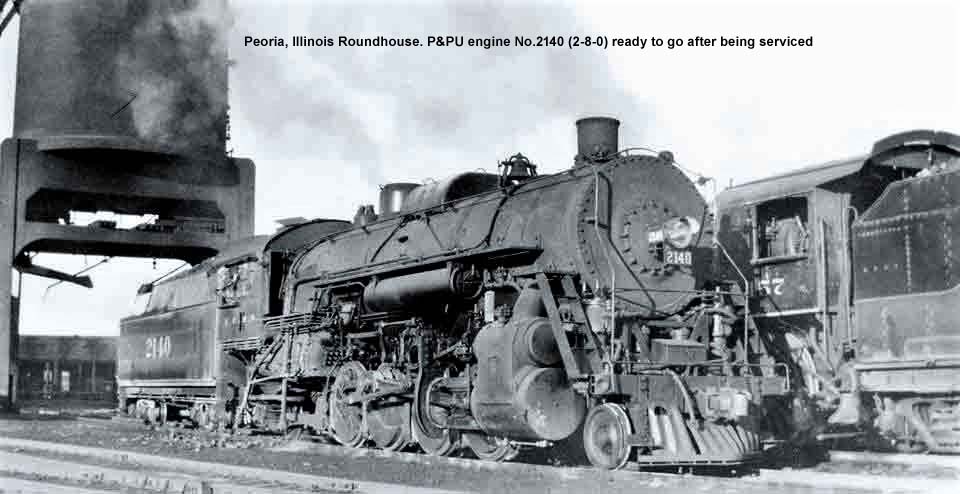

Peoria & Pekin Union Railway
Item: 72-P Price: $115.00
Remarks: ca. early 1900s
Forged by the Adams & Westlake Co.
Superb stamp marks and two-tone patina.
This key stamped "RY" + key above
stamped "RR" = nice set.
100 year+ centenarian!
History - continued from above
By 1944, the P&PU was switching 14 major railways that ran into Peoria, an unusually high number of railways for a city the size of Peoria. The P&PU currently switches trains for 8 other railways, handles over 170,000 cars per year, and is owned jointly by the Canadian National Railway, Norfolk Southern Railway, and Union Pacific Railroad.
Click on image to view larger picture

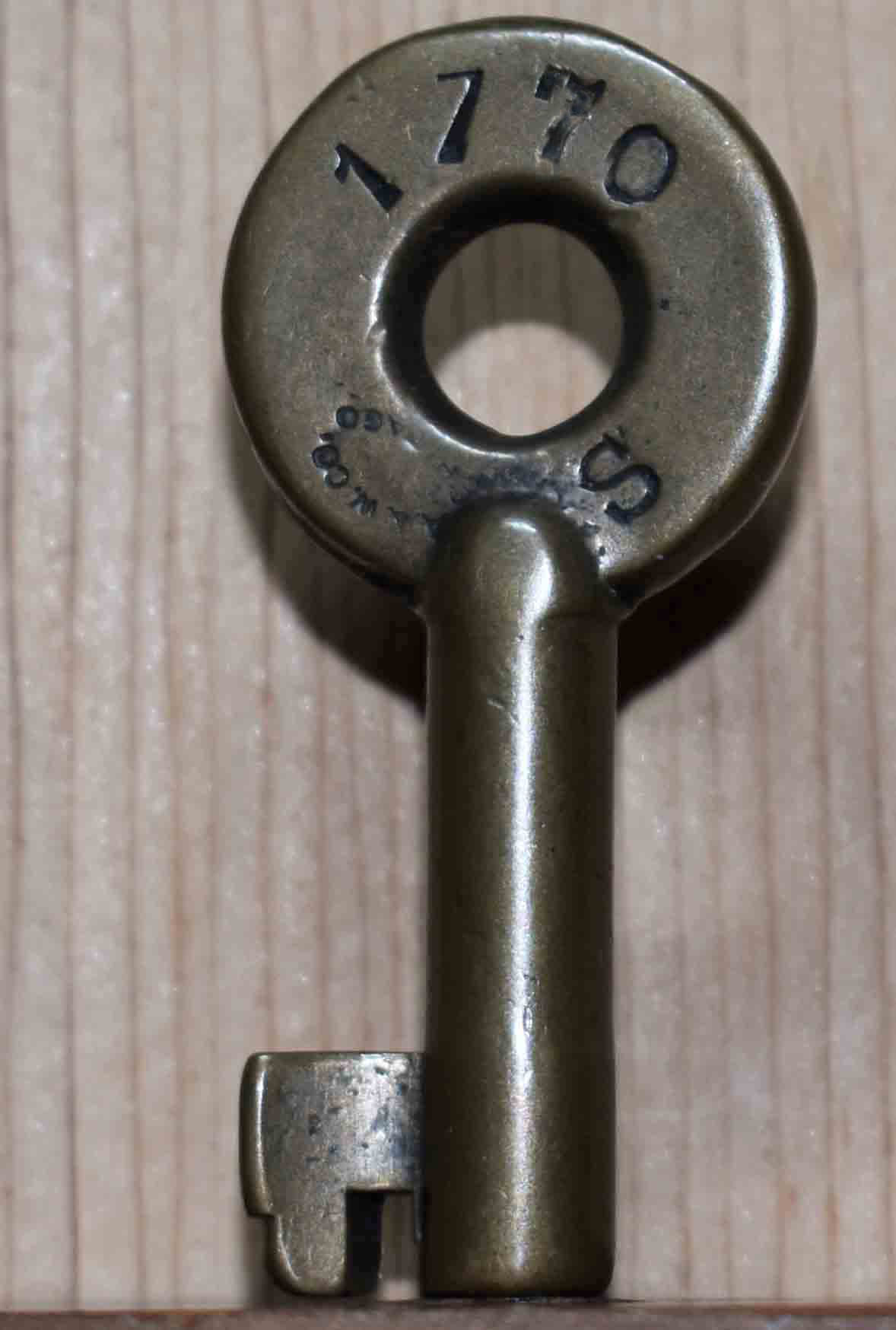



Peoria & Pekin Union Railway
Item: 73-P Price: $95.00
Remarks: ca. early 1900s
Forged by the Adams & Westlake Co.
Very nice stamp marks and gold patina.
100 year+ centenarian!
Click on image to view larger picture


Peoria & Pekin Union Railway
Item: 74-P Price: $95.00
Remarks: ca. early 1900s
Forged by the Adams & Westlake Co.
Excellent stamp marks and gold patina.
100 year+ centenarian!
Click on image to view larger picture

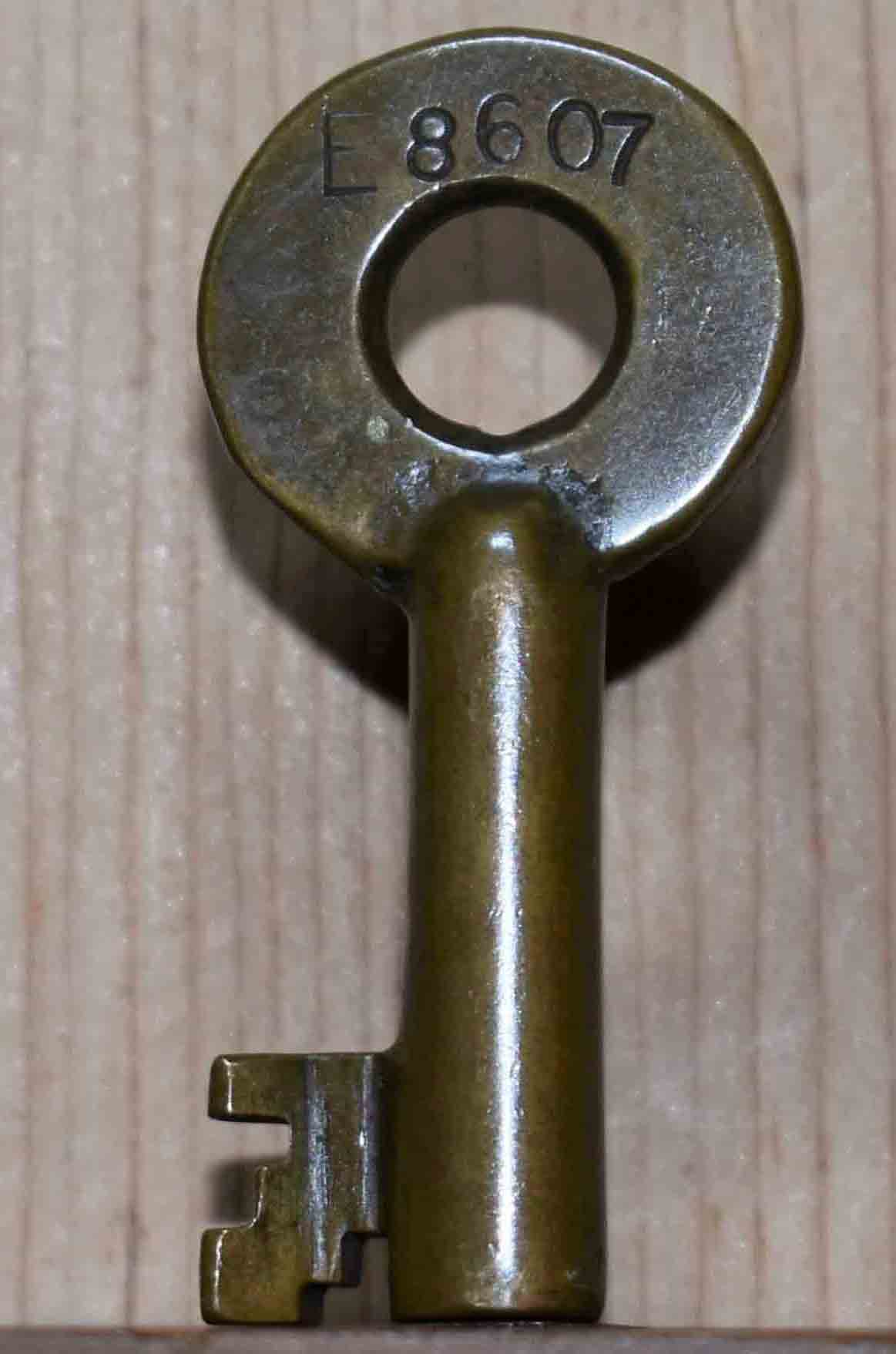
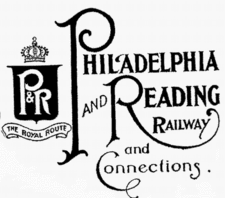
Philadelphia & Reading Railroad
Item: 77-P E series Price: $50.00
Remarks: ca. early 1900s
Superb serif stamp marks and patina.
History
The Philadelphia & Reading Railroad (P&R) was one of the first railroads constructed in the United States, chartered in 1833. It opened in 1842 from Philadelphia along the Schuylkill River through Reading and Pottsville, Pennsylvania, having the distinction of being the first double track main line in the country. The purpose of the railroad was to carry anthracite coal from the mines in northeastern Pennsylvania's coal region to Philadelphia.
Click on image to view larger picture




Philadelphia & Reading Railroad
Item: 78-P A series Price: $55.00
Remarks: ca. early 1900s
Superb serif stamp marks and copper patina.
A shorty.
History - continued from above
In the reorganization of 1896 the railroad and the coal company both became properties of the Reading Company (RDG), a holding company. In 1898 the RDG leased the Wilmington & Northern Railroad, a line from Reading to Wilmington, Delaware, and in 1901 the RDG acquired control of the CNJ. At that same time the Baltimore & Ohio Railroad (B&O) purchased a controlling interest in the RDG.
Click on image to view larger picture
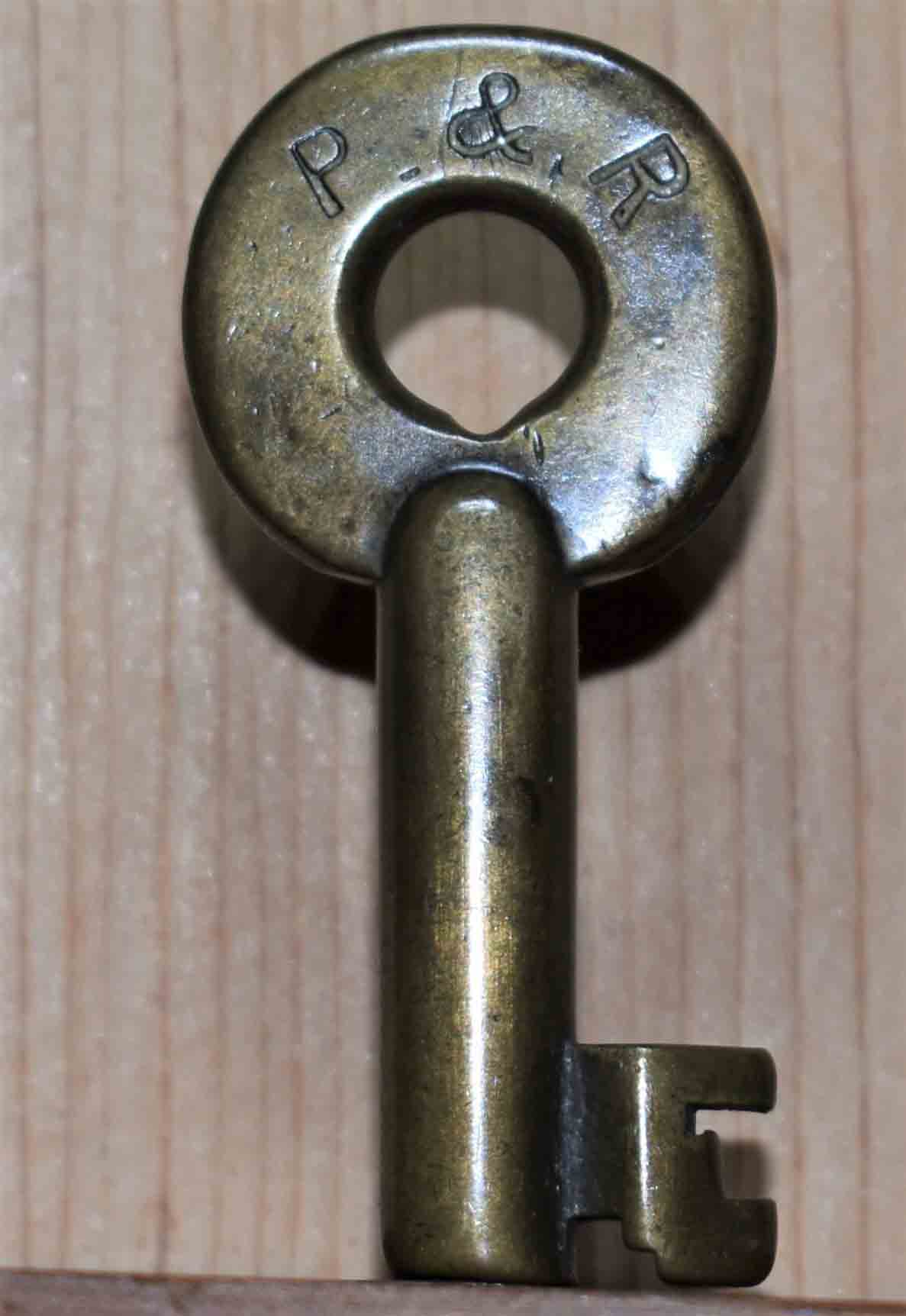

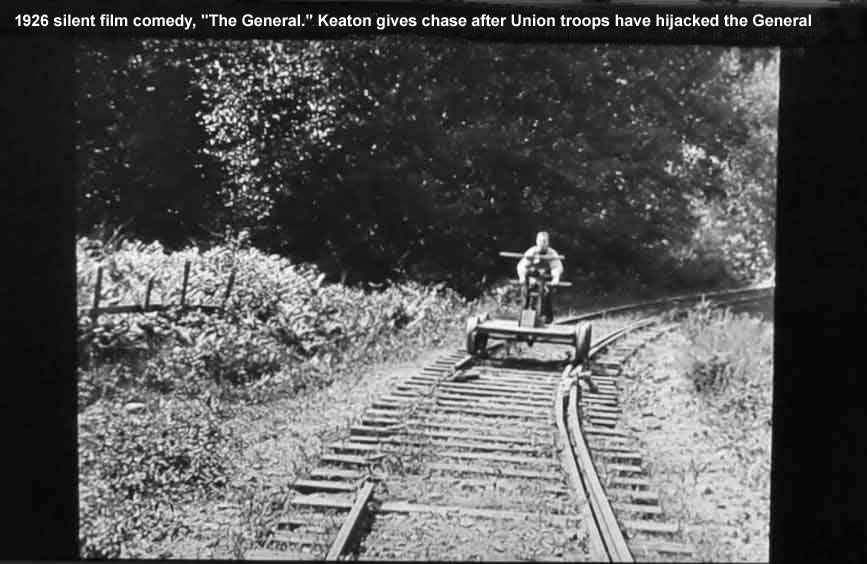
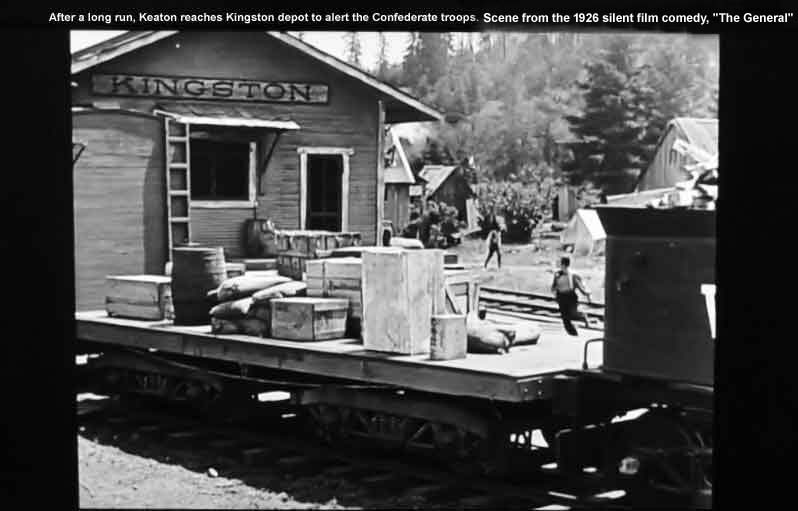

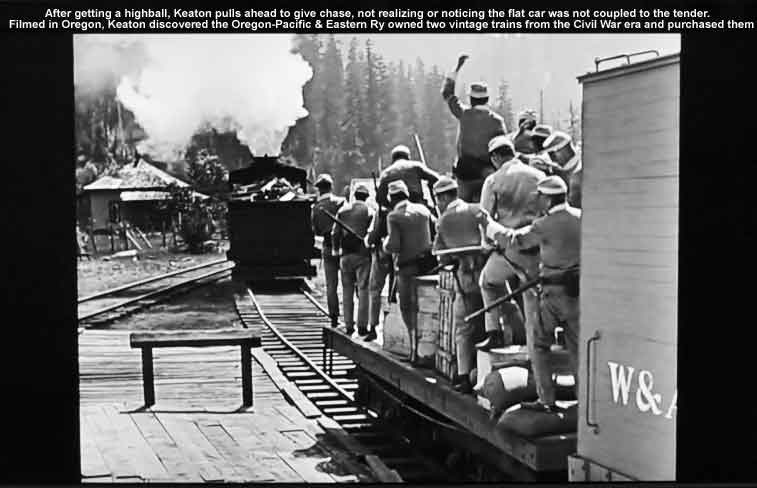
Philadelphia & Reading Railroad
Item: 79-P D series Price: $65.00
Remarks: ca. early 1900s
Forged by the Adams & Westlake Co.
Excellent stamp marks and two-tone patina.
Shows great in your hand!
100 year+ centenarian!
History - continued from above
During the 1890s, to ward off government efforts to break up monopolies, the P&R's owners created a new holding company named Reading Company, to own on paper, the P & R Railroad and P&R Coal and Iron Co. Finally, a Supreme Court ruling forced a complete separation of the P&R entities. On January 1, 1924, the P&R Coal and Iron Co. became independent, and Reading Company became the railroad's operating name.
Click on image to view larger picture

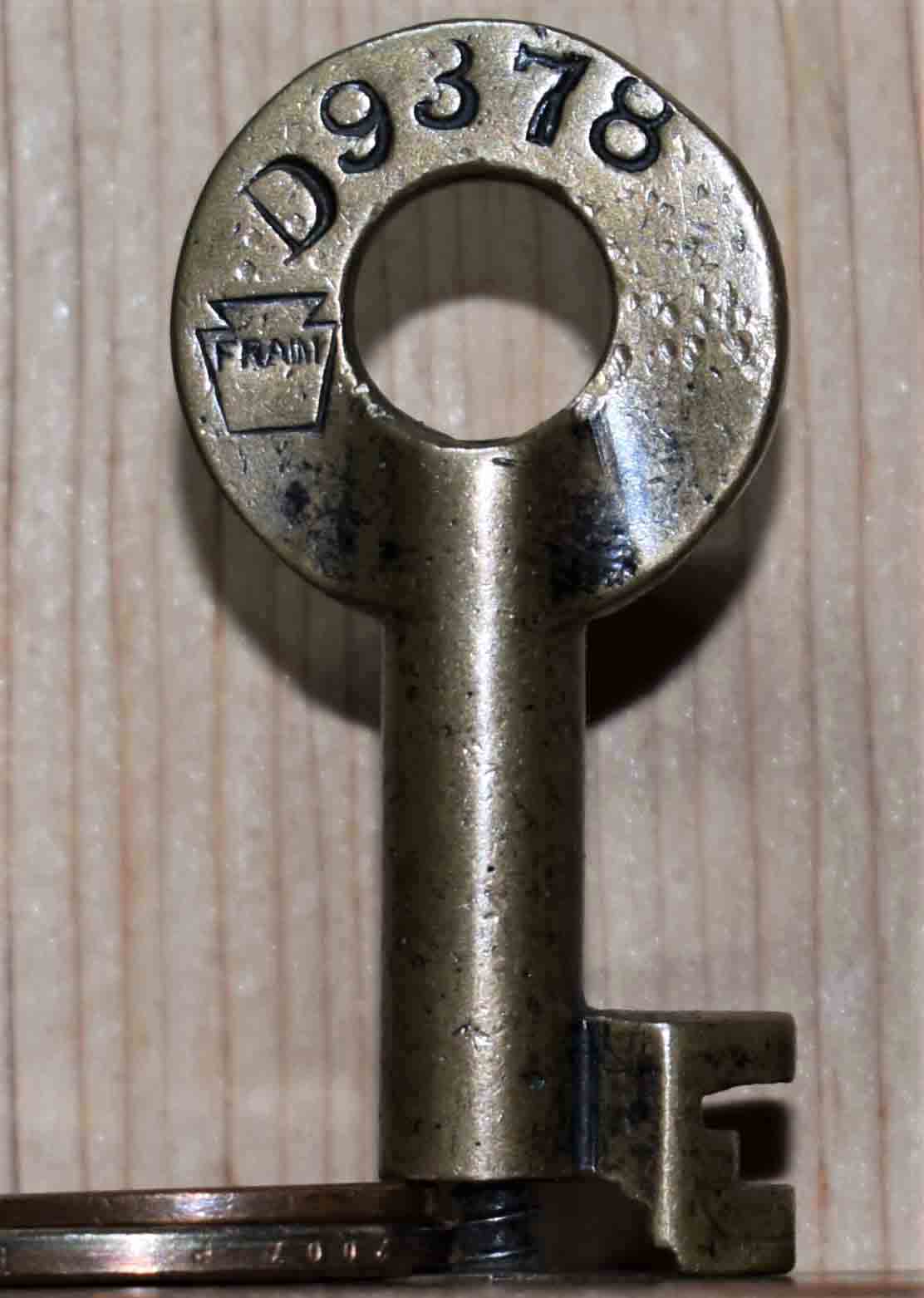
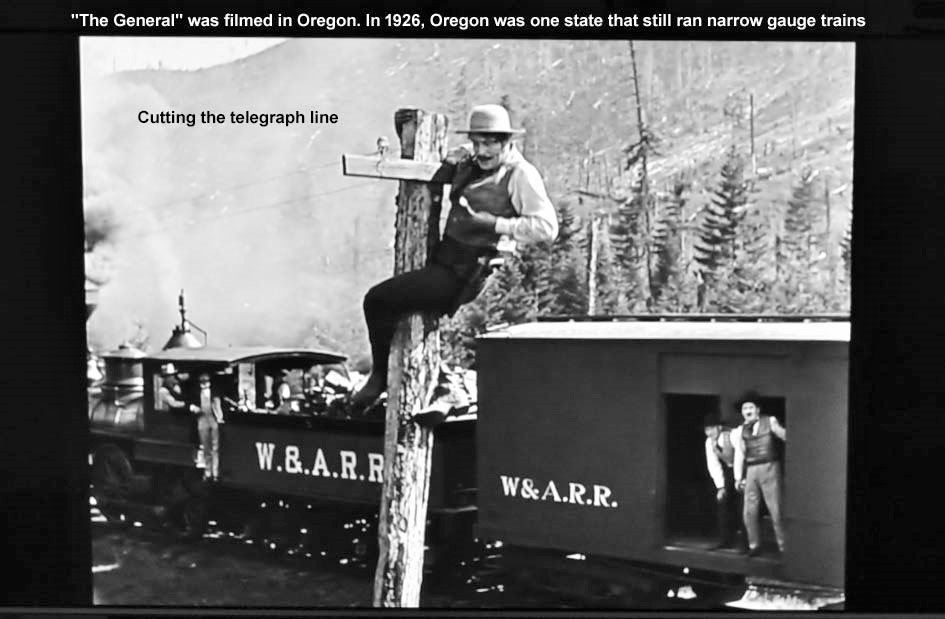
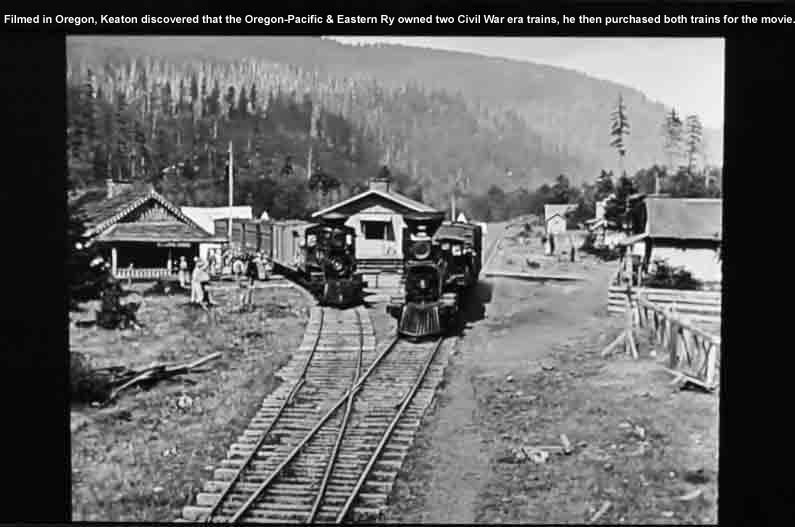

Philadelphia & Reading Railroad
Item: 80-P D series Price: $95.00
Remarks: ca. 1879-1917
Forged by the E.T. Fraim Co.
Superb serif stamp marks and gold patina.
Shorter barrel different than P&R
keys above but same bit cut.
125 year+ centenarian!
History - continued from above
After World War II as America began to turn away from coal as its major fuel, The Reading's fate began to turn as well. Dragged down by the failure of surrounding lines on which it depended for traffic to offset the loss of the coal business, The Reading entered bankruptcy in 1971. Its operations were taken over as part of the federally financed CONRAIL, on April 1, 1976.
Click on image to view larger picture


Switch Key Directory
American Railway's Switch Key Directory
Price: HC-$25.00 | CD-$35
Whether you're just starting out collecting switch key's or you have been a collector for many years, this 44-page switch key directory is a useful tool. Although, it does not list every railroad key there is, the directory has a 3-D diagram for the most common railroad keys in the collectors circle. With a CD, you can copy the directory to your hard drive and view and enlarge the pages on your computer screen. Price does not include shipping fees.
Upon request, I will "three ring" the pages for a book binder.
Click on image to view larger picture


Don Stewart's Railroad Switch Keys and Padlocks
Switch Keys and Locks Directory
Price: HC-$65.00 | CD-$55
One of the lesser known railroad directories is Don Stewart's Railroad Switch Keys and Padlocks Directory. The book includes 56 pages of switch key pictures, 12 pages of switch lock pictures, 12 supplemental pages including, 2 Canadian key picture pages and 32 pages of railroad names. It's another handy tool for beginners and even veteran collectors. The book contains 117 pages in all and is a ink jet printed copy of the original book. As noted, the CD copy is less expensive than a hard copy. The reason; printer ink and paper prices. With a CD, you can copy the directory to your hard drive and view and enlarge the pages on your computer screen. Price does not include shipping fees.
Upon request, I will "three ring" the pages for a book binder.
Click on image to view larger picture
Dates quoted for keys are approximate dates. Railroad switch keys initials (reporting mark) are assumed to be correct and accurate.
Comments on any railroad initials origin, including (typos), are welcome. Last update 08/25/2025
|



